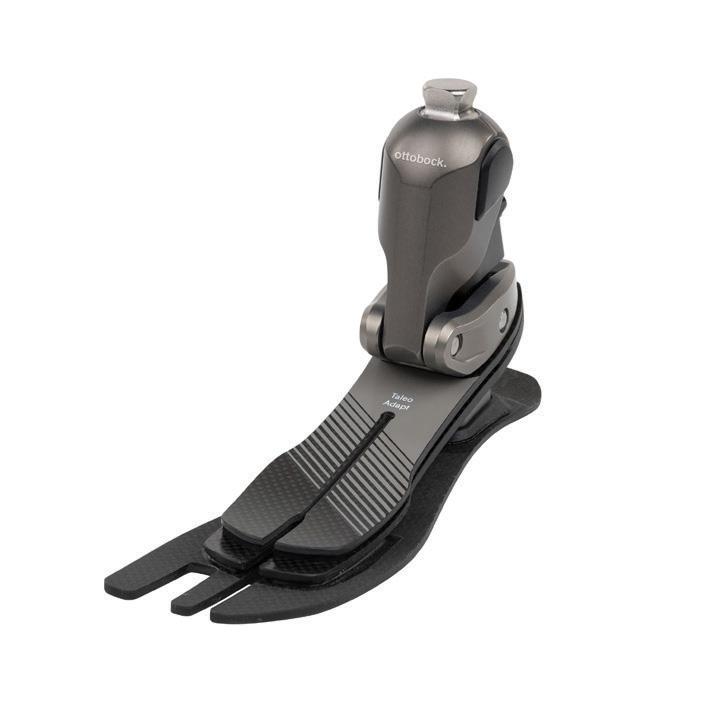
HIGHLIGHTS FROM RECENT AOPA DEI WEBINAR P.6
A NEW ERA: REVISED LOWER-LIMB LCD TAKES EFFECT P.14
FRESH FACES: MEET A CLINICIAN WHO EMBRACES 3D PRINTING P.48


HIGHLIGHTS FROM RECENT AOPA DEI WEBINAR P.6
A NEW ERA: REVISED LOWER-LIMB LCD TAKES EFFECT P.14
FRESH FACES: MEET A CLINICIAN WHO EMBRACES 3D PRINTING P.48
It’s personal for clinicians with ties to the 2024 Paralympic Games P.20
SEPTEMBER 12-15, 2024
CHARLOTTE, NC

THE PREMIER MEETING FOR ORTHOTIC, PROSTHETIC, AND PEDORTHIC PROFESSIONALS.
Join us September 12–15, 2024, for an ideal combination of top-notch education and entertainment at the 107th AOPA National Assembly in Charlotte, NC.


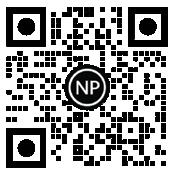
Meet five prosthetists for whom the upcoming 2024 Paralympic Games have personal meaning. From a clinician who will compete in paracanoe, to a former Paralympian, to prosthetists who will watch their patients compete on TV, these clinicians explain the role personalized O&P care plays in preparing para-athletes for the highest level of competition.
By CHRISTINE UMBRELL


Get
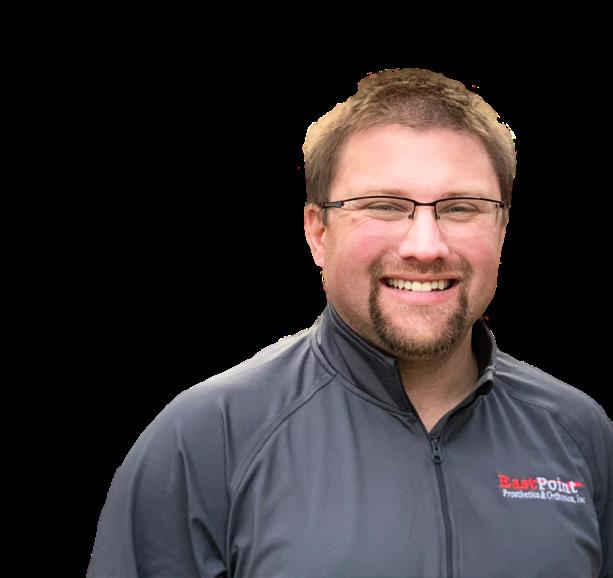
Learn what the Assembly sponsoring
See the full list of companies exhibiting at the 2024 AOPA National Assembly.
Plan your route on this aerial view of the trade show floor.








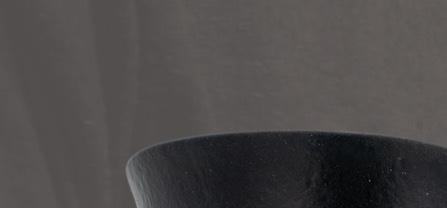

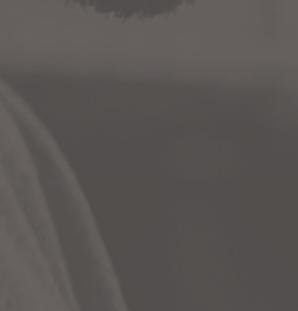
IN-HOUSE 3D-PRINTING TECHNOLOGY FOR INCREASED DURABILITY & BETTER COMFORT








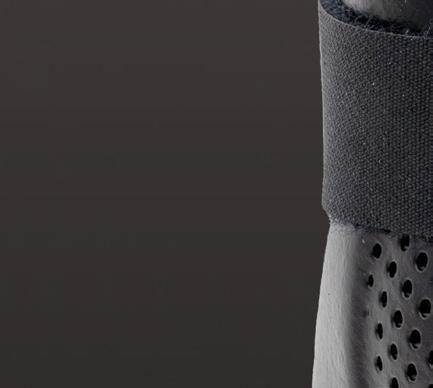

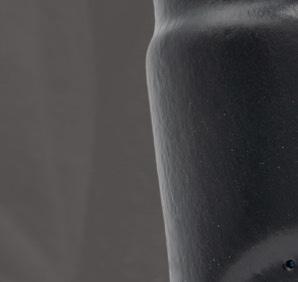
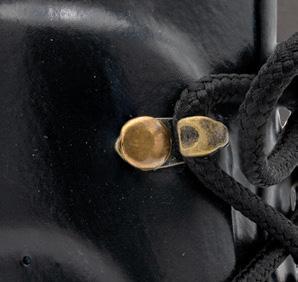





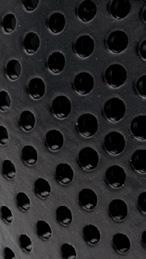


PROPULSION



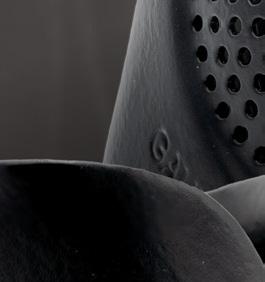

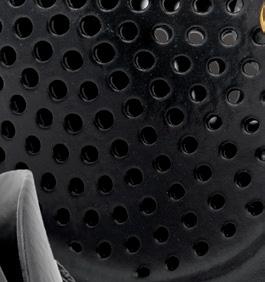


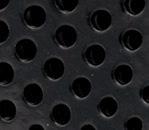
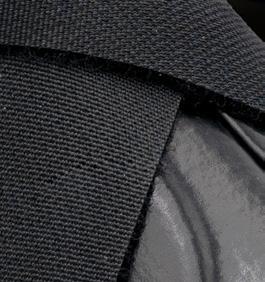

Energy returning prepreg material
Ultra lightweight design
Five-day turnaround time GAUNTLET 3D ANKLE FOOT ORTHOSIS


Breathable ankle gauntlet
Heat adjustable TPU 3D printed material


Provides soft tissue hydrostatic compression
Easy donning/doffing for the patient




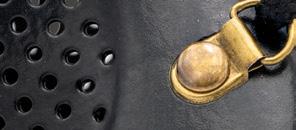
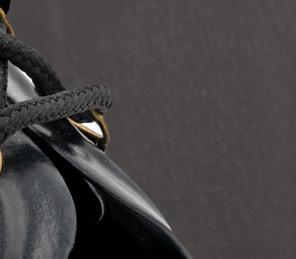

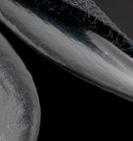


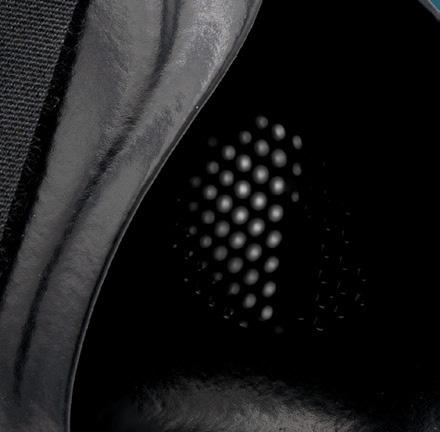
Engineered per patient specifications
Adjustable molded inner boot and calf cuff
» Improve balance & stability







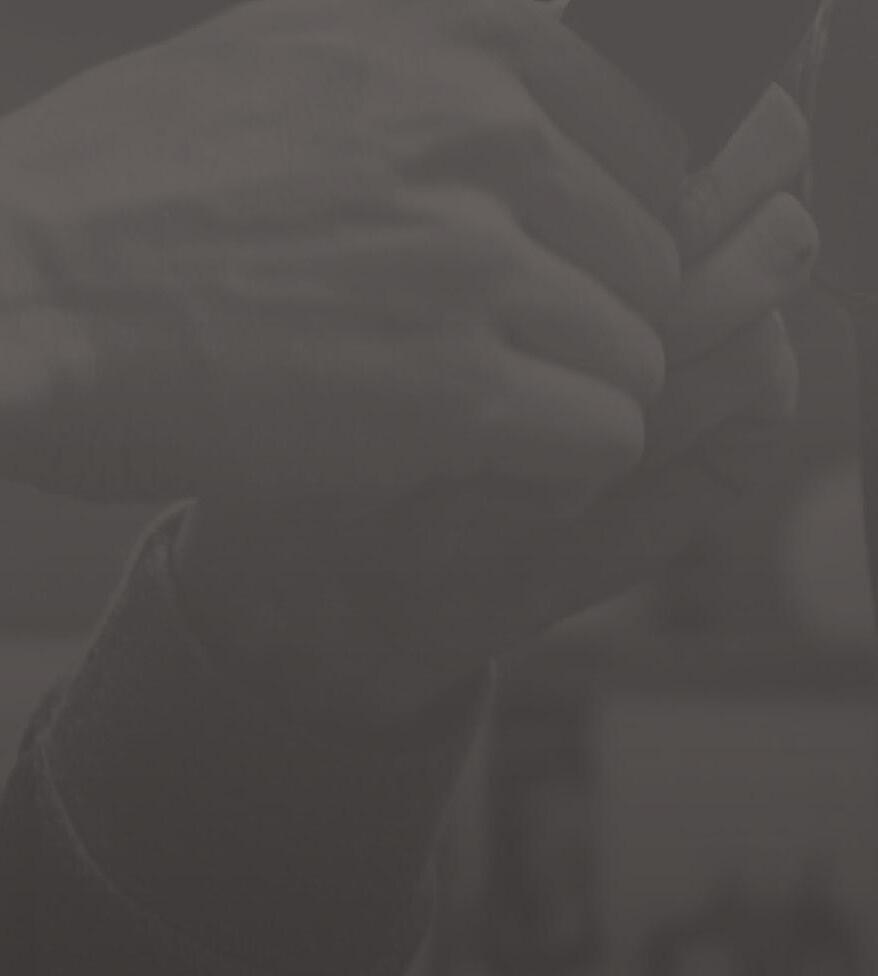







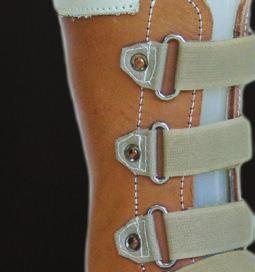

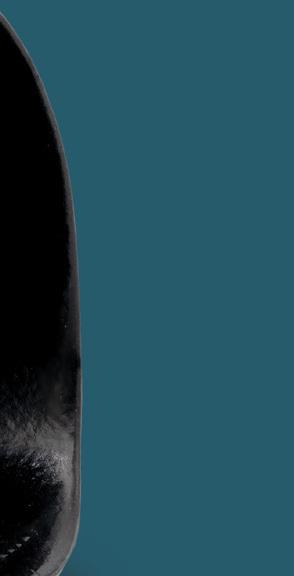
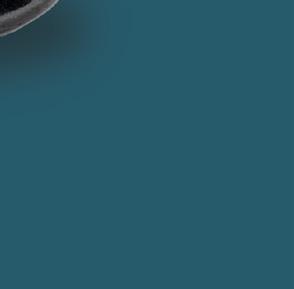



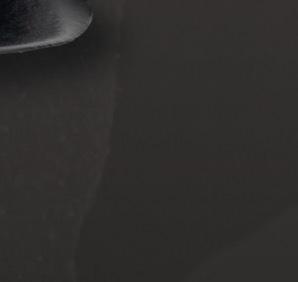




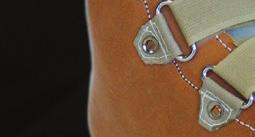







President
Mitchell Dobson, CPO, FAAOP Hanger Clinic, Austin, TX
President-Elect
Rick Riley
O&P Boost, Bakersfield, CA
Vice President
Kimberly Hanson, CPRH Ottobock, Austin, TX
Treasurer
Chris Nolan
Össur, Foothills Ranch, CA
Immediate Past President Teri Kuffel, JD
Arise Orthotics & Prosthetics, Spring Lake Park, MN
Executive Director/Secretary Eve Lee, MBA, CAE
AOPA, Alexandria, VA
Arlene Gillis, MEd, CP, LPO International Institute of Orthotics and Prosthetics, Tampa, FL
Adrienne Hill, MHA, CPO(L), FAAOP Kennesaw State University, Kennesaw, GA
John “Mo” Kenney, CPO, LPO, FAAOP Kenney Orthopedics, Lexington, KY
James Kingsley
Hanger Clinic, Oakbrook Terrace, IL
Lesleigh Sisson, CFo, CFm OrthoPro of Carson City Carson City, NV
Matt Swiggum Proteor, Tempe, AZ
Linda Wise
Fillauer Companies, Chattanooga, TN
Shane Wurdeman, PhD, CP, FAAOP(D) Research Chair
Hanger Clinic, Houston Medical Center, Houston, TX
AMERICAN ORTHOTIC & PROSTHETIC ASSOCIATION (AOPA)
330 John Carlyle St., Ste. 200 Alexandria, VA 22314
Office: 571-431-0876
Fax: 571-431-0899
AOPAnet.org
EXECUTIVE OFFICES
Eve Lee, MBA, CAE, executive director, 571-431-0807, elee@AOPAnet.org
Akilah Williams, MBA, SHRM-CP, director of finance and strategic operations, 571-431-0819, awilliams@AOPAnet.org
HEALTH POLICY AND ADVOCACY
Joe McTernan, director of health policy and advocacy, 571-431-0811, jmcternan@AOPAnet.org
Devon Bernard, assistant director of coding and reimbursement services, education, and programming, 571-431-0854, dbernard@AOPAnet.org
MEETINGS & EDUCATION
Ashley Vande Bunte, CMP, director, meetings and education, 571/431-0860, avandebunte@AOPAnet.org
Kelly O’Neill, CEM, assistant director, meetings and exhibitions, 571-431-0852, kelly.oneill@AOPAnet.org
MEMBERSHIP & COMMUNICATIONS
Joy Burwell, director of communications and membership, 571-431-0817, jburwell@AOPAnet.org
Betty Leppin, senior manager of member services, 571-431-0810, bleppin@AOPAnet.org
Nicole Ver Kuilen, manager of public engagement, 571-431-0836, nverkuilen@AOPAnet.org
Madison McTernan, coordinator of membership and communications, 571-431-0852, mmcternan@AOPAnet.org
AOPA Bookstore: 571-431-0876
Reimbursement/Coding: 571-431-0833, LCodeSearch.com
O&P ALMANAC
Eve Lee, MBA, CAE, executive director/publisher, 571-431-0807, elee@AOPAnet.org
Josephine Rossi, editor, 703-662-5828, jrossi@contentcommunicators.com
Catherine Marinoff, art director, 786-252-1667, catherine@marinoffdesign.com
Bob Heiman, director of sales, 856-520-9632, bob.rhmedia@comcast.net
Christine Umbrell, editorial/production associate and contributing writer, 703-662-5828, cumbrell@contentcommunicators.com
PUBLISHER EVE LEE, MBA, CAE
EDITORIAL MANAGEMENT CONTENT
COMMUNICATORS LLC
ADVERTISING SALES RH MEDIA LLC
DESIGN & PRODUCTION MARINOFF DESIGN LLC
PRINTING SHERIDAN
O&P Almanac (ISSN: 1061-4621) is published monthly, except for combined issues in June/July and November/ December, by the American Orthotic & Prosthetic Association, 330 John Carlyle St., Ste. 200, Alexandria, VA 22314. To subscribe, contact 571-431-0876, fax 571-431-0899, or email info@aopanet.org. Yearly subscription rates: $59 domestic, $99 foreign. All foreign subscriptions must be prepaid in U.S. currency, and payment should come from a U.S. affiliate bank. A $35 processing fee must be added for non-affiliate bank checks. O&P Almanac does not issue refunds. Periodical postage paid at Alexandria, VA, and additional mailing offices.
Postmaster: Send address changes to: O&P Almanac, 330 John Carlyle St., Ste. 200, Alexandria, VA 22314.
Copyright © 2024 American Orthotic and Prosthetic Association. All rights reserved. This publication may not be copied in part or in whole without written permission from the publisher. The opinions expressed by authors do not necessarily reflect the official views of AOPA, nor does the association necessarily endorse products shown in the O&P Almanac. The O&P Almanac is not responsible for returning any unsolicited materials. All letters, press releases, announcements, and articles submitted to the O&P Almanac may be edited for space and content. The magazine is meant to provide accurate, authoritative information about the subject matter covered. It is provided and disseminated with the understanding that the publisher is not engaged in rendering legal or other professional services. If legal advice and/or expert assistance is required, a competent professional should be consulted.
Share your message with AOPA membership— approximately 9,000 orthotic and prosthetic professionals, facility owners, and industry personnel. Contact Bob Heiman at 856-520-9632 or email bob.rhmedia@comcast.net. Learn more at bit.ly/24AlmanacMediaKit
The Wave Comfort 3 is tailored for those seeking a seamless and stable experience from low to moderate K3 activity levels. The unique tri-spring design elements work in concert to provide a seamless transition and stable progression from heel‑strike to toe off.
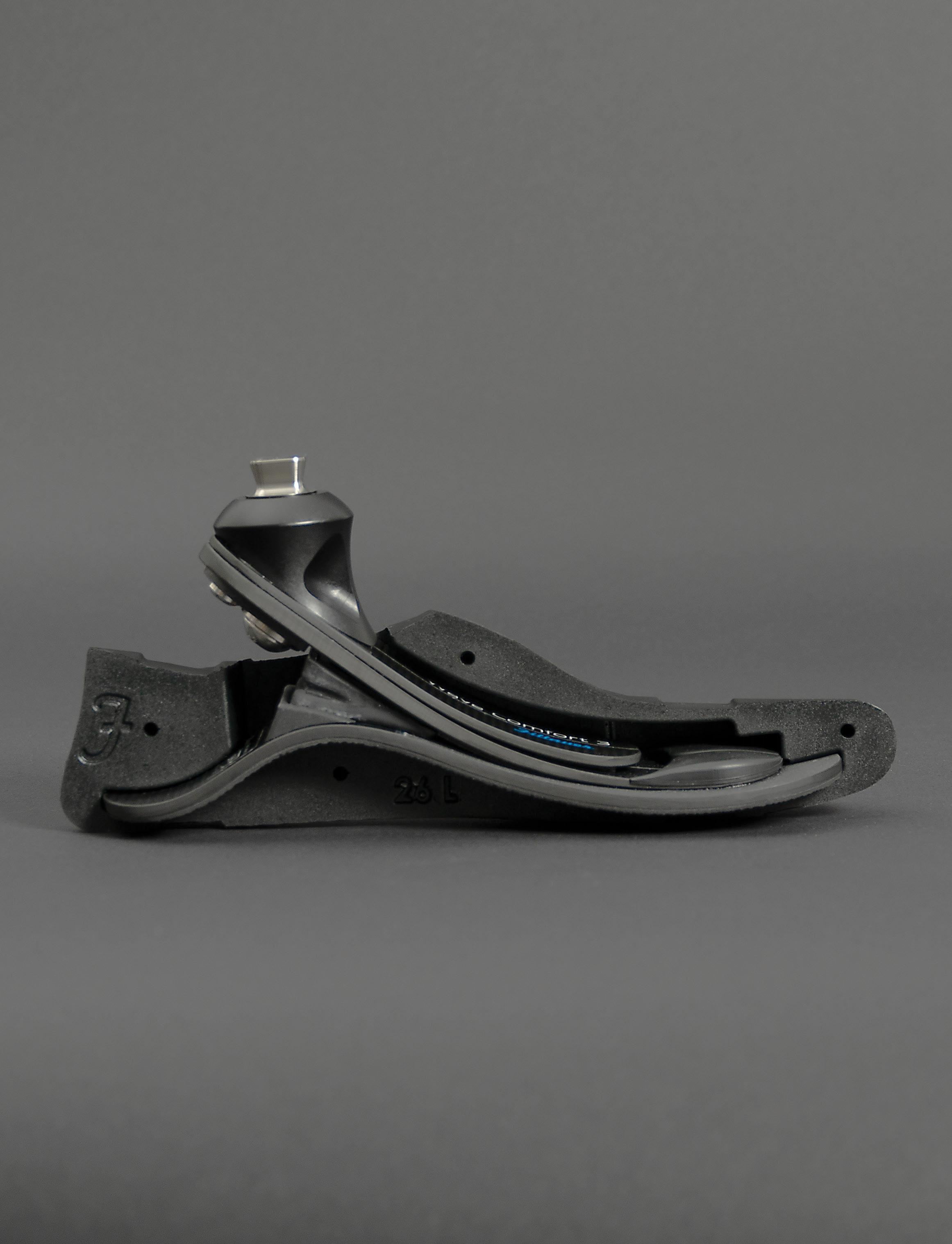
The wave spring and variable durometer heel bumpers enhance stability at heel strike and plantar flexion.
Offers a compliant and supple feel without sacrificing dynamic response.
The ProCover provides a more connected feel and the split design makes cleaning and maintenance easier than ever before.
The O&P field is experiencing a significant shift as multiple generations work side by side, each bringing unique perspectives and challenges to the profession. A recent panel discussion featuring professionals from different generations shed light on the evolving landscape of O&P, highlighting the importance of intergenerational communication, education, and collaboration. The event was hosted by AOPA’s newly formed Diversity, Equity, and Inclusion Committee, and Chad Duncan, PhD, professor and chair of the Department of Orthotics and Prosthetics within the College of Health Sciences Education and Rehabilitation at Salus Drexel University, was the moderator.
Several takeaways from the webinar include the following:
Stress and burnout among younger clinicians are real. One of the most significant factors uniquely affecting young professionals is their financial investment in an O&P education, according to the panel. Completing a master’s degree requires new professionals to invest more time and money to enter the field than previous generations.
“We’re having these students and residents coming out with much more debt that they need to pay off, but they’re not being compensated in ways to be able to pay that off in an effective timeframe,” Brittany Gonzalez, CPO, MSOP, and a millennial, explained. As a result, some young practitioners are choosing to leave clinical work or postpone major life events such as buying a home or starting a family.
This financial stress, combined with the evolving demands of the profession, has contributed to burnout among young clinicians. Those with five years of experience or less had the second highest burnout rate, according to a recent industry study.
“Young clinicians are expected to know how to do plaster mods, how to do maybe digital mods depending on where they’re at, to refine a 3D print, have good hand skills, evaluate biomechanics, implement outcome measures, develop strong documentation and justification, and build rapport with patients,” said millennial Abbey Senczyszyn, CPO, MSOP, MBA.
Communication matters. Effective collaboration across generations emerged as a crucial component for a harmonious workplace, according to the speakers. They advised finding common ground and fostering a team-oriented approach for bridging generational gaps and creating a more effective workplace.
Kevin Hagemeier, CPO, a Generation X practitioner and business owner, stressed the importance of relatability and letting go of biases. “I found some of the hardest people to deal with can be won over if we work to find that common ground,” he noted. In
addition, he suggested that focusing on differences in skill sets or techniques between generations should not be a source of prejudice and conflict.
“It would be so easy for me, especially working with the newer generations, [to say] they don’t have the same work ethic that I have, or they don’t do [something] the way I did it,” he acknowledged. However, as the profession changes, the need for mutual understanding between generations is vital for a team-oriented mindset.
“We can recognize that maybe we don’t need to be the best as an individual, but we need to be the best as a collective to show up for our patients to be the best for the profession,” said Senczyszyn.

Education and acceptance are needed. The panelists stressed the importance of education in bridging the generational gap. “If we can all acknowledge there’s always room to grow and learn, it opens up an opportunity for us to discuss with one another what our different approaches are,” said Senczyszyn.
The panelists’ insights highlight the need for ongoing dialogue to prepare future professionals for the changing landscape of O&P work. By embracing the opportunity and working together across generational lines, the profession can continue to grow and provide exceptional care for patients while supporting its diverse workforce. 1 2 3
Hagemeier said young professionals should keep an open mind as older generations try to teach them on the job, and “be willing to extend themselves out of their comfort zone [to] get as much knowledge as possible from the generations that have gone before them. And then when they are the older generation, they can pass that on to the generations that are coming behind them.”
The discussion also touched on the importance of addressing potentially inappropriate comments from colleagues. “I think it’s just important, as we talked about, to have consistent feedback in the moment,” Gonzalez suggested. “I think sometimes different generations don’t realize necessarily how something comes across,” so it’s important to share opinions in a respectful manner.
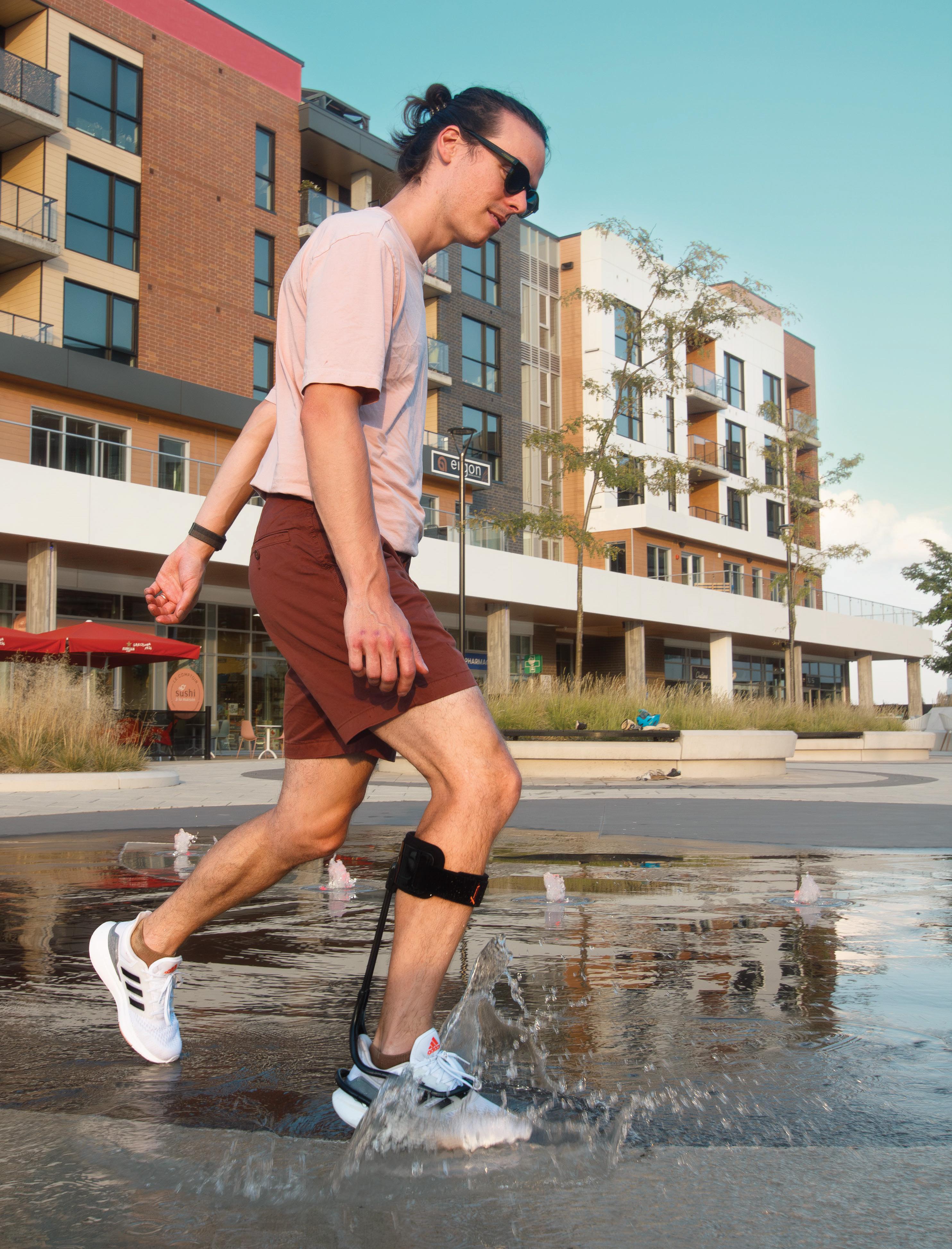


Turbomed’s premium foot drop or thosis sits on the outside of the shoe to facilitate maximized ankle movement while reducing the risk of injury

PDAC validated (L1951)
Simplified assembly
18% more dorsi-flexion power
35% more media-lateral strength
Researchers at the Massachusetts Institute of Technology (MIT) developed a neuroprosthetic interface that demonstrates the “first full neural control of bionic walking,” according to Hyungeum Song, an MIT postdoctoral researcher. The interface is designed to connect a below-knee prosthesis user’s nervous system with their prosthetic leg.
Song and her team at MIT’s Center for Bionics, in collaboration with colleagues from Brigham and Women’s Hospital and overseen by principal investigator Hugh Herr, have shown that using a new type of surgical intervention in conjunction with the neuroprosthetic interface enables a more natural walking gait using a prosthesis fully driven by the body’s own nervous system. The surgical amputation procedure reconnects muscles in the residual limb to enable proprioceptive feedback.
The researchers studied seven below-knee limb loss patients who had undergone the surgery and used the new interface, consisting of surgically connected, agonist-antagonist muscles, including muscle-sensing electrodes. During trials, the interface was shown to augment residual muscle afferents by 18% of biologically intact values. Compared to below-knee amputees who did not have the interface, study participants achieved a maximum neuroprosthetic walking speed 41% faster. Patients also reported experiencing less pain and less muscle atrophy following the surgery.
Australian researchers conducted a retrospective study comparing outcomes of acute targeted muscle reinnervation (TMR) for pain prevention to outcomes of non-acute TMR for the treatment of established pain.
Among 32 patients with 38 major limb amputations, acute TMR patients reported significantly lower residual limb pain and phantom limb pain scores, pain interference, and pain catastrophization, compared to patients with non-acute TMR. The results suggest “that TMR should be performed with preventative intent, when possible, as part of a multidisciplinary approach to pain management, rather than deferred until the development of chronic pain,” according to the researchers.
The study was published in July in Surgical Reconstruction
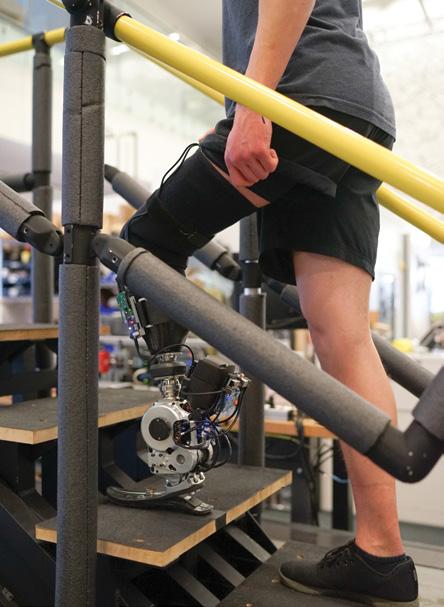
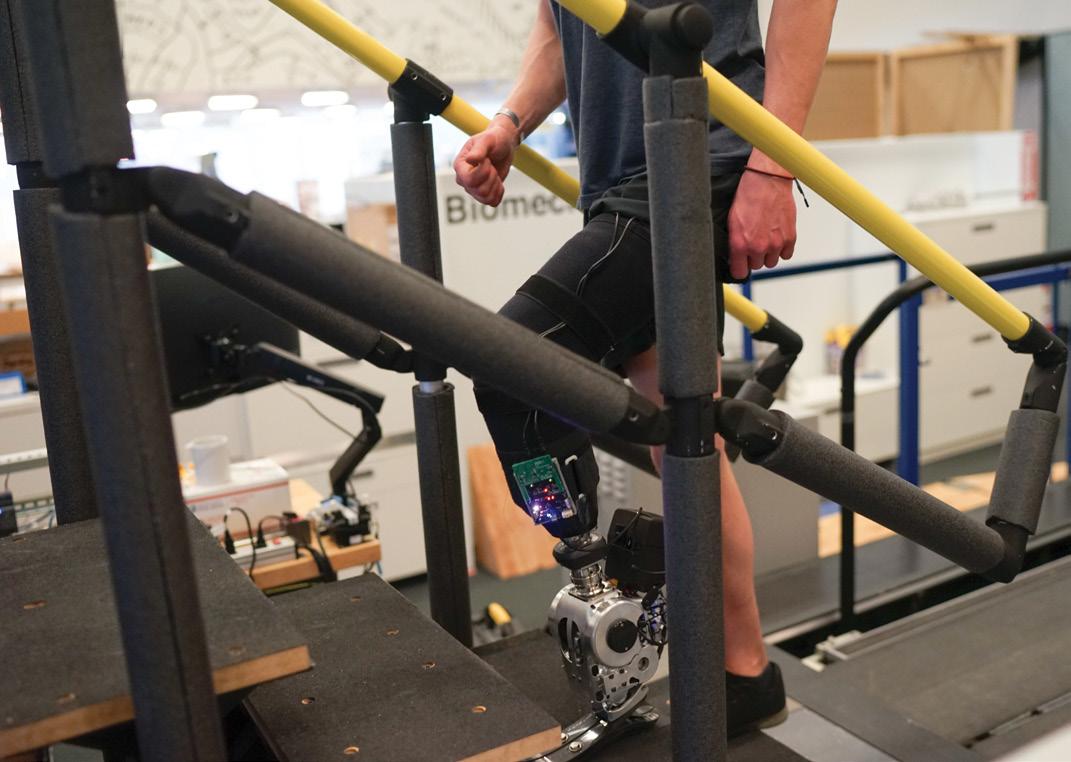
“This is the first prosthetic study in history that shows a leg prosthesis under full neural modulation, where a biomimetic gait emerges,” said Herr. “No one has been able to show this level of brain control that produces a natural gait, where the human’s nervous system is controlling the movement, not a robotic control algorithm.” The study was published in July in Nature Medicine
Researchers from the Fuijan University of Traditional Chinese Medicine examined the biomechanical characteristics of the trunk and lower limbs among individuals with scoliosis during stair activity. The study sought to explore the relationship between trunk abnormalities and lower-limb biomechanics to provide a clinical and objective assessment basis for scoliosis.
The researchers leveraged a Qualisys system to collect data, including the kinematics of the trunk and lower limbs and the kinetics of the lower limbs of 28 individuals with scoliosis and 28 control participants. Participants with scoliosis were between 18 and 20 years old with Cobb angles between 10 and 30 degrees.
Patients with scoliosis exhibited a reduced range of motion in the relative rotation of the shoulder-pelvis, shoulder-trunk, and thorax-pelvis areas during stair ascent when compared to the control group. “These results suggest that individuals with scoliosis have limited flexibility in the aforementioned rotations, which reflects a more rigid movement pattern,” reported the researchers. They also found that individuals with scoliosis exhibited decreased walking speed and step width while ascending stairs.
“Future rehabilitation treatment plans should prioritize addressing joint and muscle injuries in the lower limbs of scoliosis patients,” noted the researchers. The study was published in June in Scientific Reports
The first Paralympic Summer Games to convene in Paris take place Aug. 28–Sept. 8
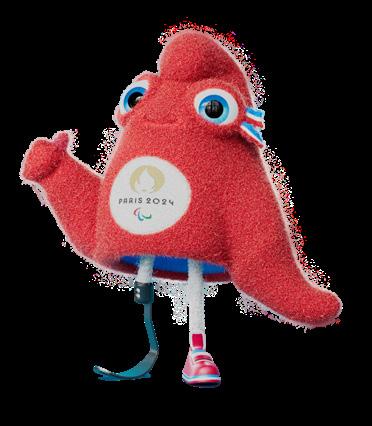
Para Athletics/Track and Field: The Largest Sport in the Paralympic Games
164 Ottobock team members staffing the stations
650-square-meter main repair center
14 smaller repair centers
4,400

In a systematic literature review, researchers found that 34% of limb amputees suffered from clinically significant depression Greater activity restriction, amputationrelated body image disturbances, social discomfort, perceived vulnerability regarding disability, and avoidant coping style were commonly reported factors associated with greater depression symptomatology.
SOURCE:
East Tennessee State University (ETSU) celebrated the launch of its O&P master’s program June 25.
Applications for the first cohort, which will begin in January, are open until Sept. 1.
“This is an exciting moment not just for ETSU, but for the entire state,” said Kyle Leister, PhD, CPO, O&P program director at ETSU. “There is a growing demand for certified orthotists and prosthetists nationally, and we are eager to do our part in training the next generation of practitioners.”
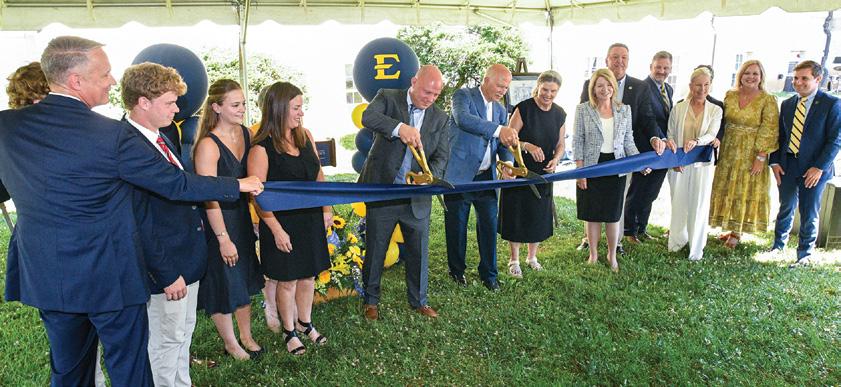
The program launch featured a ribbon cutting for the Karl Fillauer Learning Center in Charles Ed Allen Hall on the campus of the Quillen VA Medical Center, where students will learn to use state-of-the-art
New research into the behavior of ants demonstrates that if an ant injures its leg, another ant may “amputate” the leg by gnawing it off. Ants were shown to diagnose wounds and adapt treatment accordingly to maximize the injured ant’s chances of survival. SOURCE:
equipment to craft custom O&P devices. The learning center is named for Karl Fillauer, former board chairman of Fillauer Companies Inc.
“The field of orthotics and prosthetics has been my life’s work, and it is a great honor to be part of the launch of the new orthotics and prosthetics program at East Tennessee State University,” said Karl Fillauer. “I hope this new program and state-of-the-art facility will inspire students to innovate and develop even more ways to empower those in the limb loss and limb difference community.”
“As the CEO of Fillauer and a proud member of our family-founded company, we are so grateful to East Tennessee State University for recognizing my father and his invaluable contributions to the industry by naming the learning center in his honor,” said Michael Fillauer. “With ETSU becoming one of only 14 pivotal O&P programs across the country, this milestone provides a new generation of young people an opportunity to do rewarding work in a field that continues to grow.” For details on the new program, visit https:// bit.ly/3RDOuex
The PrimeFare East Regional Scientific Symposium, held in Nashville, Tennessee, June 28-29, saw a 20% increase in exhibitors and a similar increase in the number of attendees compared to last year’s meeting. The Symposium featured prosthetic, orthotic, pedorthic, and administrative programming.
While the event has been held in Nashville for the past 25 years, it will move to Chattanooga, Tennessee, in 2025. “We think the move will be a positive one. There is so much to do and see in and around Chattanooga. Most important is that we will not have to raise our registration fees in 2025 as Chattanooga is much more affordable for PrimeCare and our attendees and exhibitors,” said Cathie Pruitt, president of PrimeCare.
“I have been attending the PrimeFare East meeting for the past 13 years, and it consistently stands out as one of the best regional meetings in the profession,” said Jim Lawson, outreach director for the American Board for Certification in Orthotics, Prosthetics,
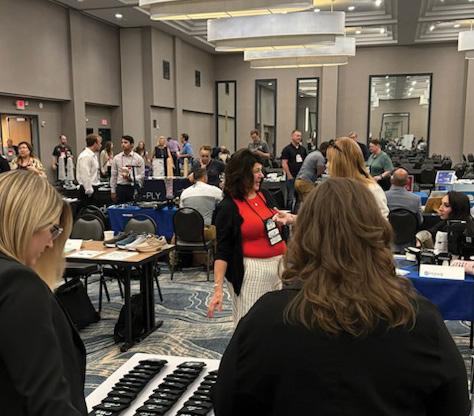
and Pedorthics. “They bring together a diverse and excellent group of speakers, the education sessions are always full of attendees, and the exhibit hall is always buzzing with action.”
Key sponsors of the meeting included New Step Orthotic Lab Inc., Alps, CBS Medical Billing and Consulting, O&P Insight, and Allard.
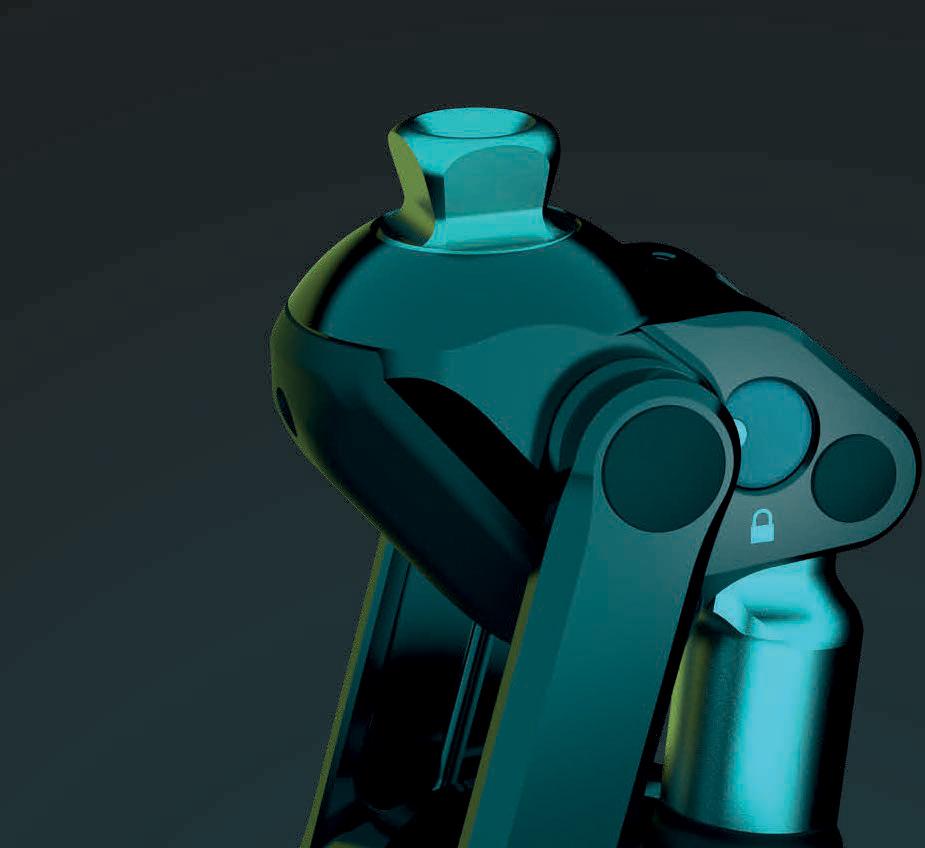


REFINED ADJUSTMENTS
Clinicians can adjust stance flexion, extension assist, and more with a 4mm hex key.

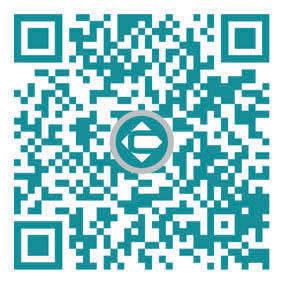


At College Park, our ideal Aura is comforting, intuitive, and well-grounded.
The new Aura polycentric knee was designed to o er stability and relief to lowimpact users. Featuring a unique locking mechanism and simple 4mm adjustments, the Aura goes beyond mere physical support. It can open doors for mobility goals and newfound peace of mind.


The Aura’s proximal center of rotation was designed to o er inherent stability. Users can easily lock and unlock through the simple push of a button.

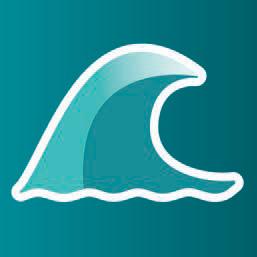

Designed and tested for corrosion resistance, the Aura has been approved for submersion in the ocean and chlorinated pools.
Chris Casteel, BOCO, BOCP, co-owner of Anew Life Prosthetics and Orthotics LLC in Detroit, has been awarded the 2024 Certificant of the Year by the Board of Certification/Accreditation (BOC).
Casteel has demonstrated exceptional commitment to improving patient care and advancing the standards of practice, according to BOC. After overcoming his own obstacles following limb loss at the age of 24, Casteel sought to “pay it forward” by empowering others to live fulfilling lives with the help of O&P devices. He also leverages the latest advancements in O&P technology, such as implementing 3D scanning and printing for prosthetic sockets and orthotic devices.
Casteel has been a peer counselor for many years and hosts a monthly amputee support group that he initiated at the University of Michigan. In 2010, Casteel volunteered in Haiti, where he donated his time, energy, and knowledge of O&P to assist children and adults with disabilities.
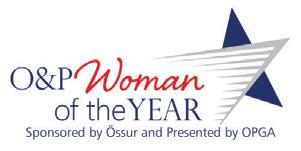
The Orthotic and Prosthetic Group of America (OPGA) has announced the four finalists nominated for the 2024 O&P Woman of the Year Award: Justi Appel, PhD, CO, BOCP, LPO, clinical specialist with NuTech Synergies; Jenna Calomeris, vice president of sales with ThorWear, DBA Elevate Movement; Sara Peterson, PhD, CPO, LPO, FAAOP(D), clinical research scientist and clinician with O&P Clinical Innovations; and Sheryl Sachs, MSPO, CPO, clinician with Dankmeyer Inc.
The winner of the 2024 O&P Woman of the Year award will be announced at the AOPA National Assembly on Friday, Sept. 13, at 9:50 a.m., at the Product Preview Theater in the exhibit hall. The annual award, sponsored by Össur and presented by OPGA, is open to all women who work in the O&P profession. “We’re excited to recognize these outstanding women who positively impact the O&P profession,” said Adam Miller, president of OPGA, a division of VGM & Associates.







Embla Medical, the parent company of industry O&P brands Össur, College Park, and FIOR & GENTZ, has announced its intention to unite its network of patient-care facilities under a new common brand identity: ForMotion.
The ForMotion brand will be introduced in phases, beginning in select regions in the United States, and will eventually encompass the entire network of global O&P patient-care facilities, currently operating under different brand names.
“Our history in patient care goes back more than 53 years, when Össur Kristinsson founded an O&P clinic in Iceland. Meeting patient needs and achieving successful clinical outcomes are in our DNA,” said Sveinn Sölvason, president and chief executive officer (CEO) of Embla Medical. “Aligning under one brand promise globally confirms what we stand for in patient care: the best O&P professionals in the world, focusing on personalized care and patient outcomes, acting in the best interests of our patients.”
ForMotion patient-care facilities will focus on providing worldclass, compassionate care for patients with mobility challenges and will deliver comprehensive, modern, and innovative care, while celebrating the expertise and heritage unique to each location, according to Embla Medical.
Hanger Inc. has closed the acquisition of O&P Insight, a consultancy that provides comprehensive consulting and revenue cycle management services to independent O&P providers and manufacturers.
“O&P Insight is uniquely focused on helping O&P businesses run profitable and compliant business operations, and brings an incredible amount of credibility, talent, and value,” said Hanger CEO Pete Stoy. “Collaborating with O&P Insight in this capacity will enable us to place a greater focus on the services side of our business for the betterment of the profession, as we believe that healthier independents and manufacturers, buoyed by the Hanger ecosystem, equals tremendous value creation for the entire industry.”
“In today’s complex healthcare environment, the O&P industry faces similar challenges and opportunities with technology, innovation, reimbursement, policy, and providing patients excellent care,” said O&P Insight CEO Lesleigh Sisson, CFo, CFm. “This collaboration will allow us to scale, provide opportunities for more investment, and have access to resources that will enhance our current and future partnerships.” The transaction is expected to close in the third quarter of 2024.
Hanger Ventures, a Hanger Inc. business aiming to advance O&P innovation and improve patient outcomes, announced its debut investment in Bionic Power, a Canadian-based firm that develops active lower-body smart orthotic devices. Bionic Power is raising Series A Round funding, with Hanger Ventures committing as the lead investor.
“We are thrilled to make our inaugural investment in Bionic Power,” said James Campbell, PhD, Hanger Ventures president and Hanger Inc. chief clinical officer. “We look forward to contributing clinical research, along with technical and commercial expertise, to bring innovative solutions to the market that have the potential to meet an unmet clinical need and improve the quality of life for individuals with mobility challenges.”
Bionic Power devices enhance walking abilities for children and adults with neuromuscular diseases and conditions, including cerebral palsy, spina bifida, and stroke. The collaboration provides Bionic Power with financial funding and services for product development, clinical trials, and go-to-market support. “When we learned about the creation of Hanger Ventures, we felt the opportunity was a great match for Bionic Power’s needs, and the subsequent discussions confirmed our initial impression,” said Bionic Power CEO Gualtiero Guadagni, PhD.
Point Designs has been awarded runner-up honors for its “Lightweight Revolution: Ventilated Multimaterial Shoulder Disarticulation Prosthesis” at the RAPID + TCT Conference, an additive manufacturing event recognizing outstanding achievements and innovations in the 3D printing and additive manufacturing industry. This year’s event, held at the Los Angeles Convention Center in June, showcased more than 400 exhibiting companies.
Point Designs’ prosthesis was recognized for its innovative use of multimaterial 3D-printing technology to create a lightweight, ventilated shoulder disarticulation prosthesis. The design offers improved comfort, functionality, and quality of life for individuals with upper-limb loss.
“We are thrilled to receive this recognition from the RAPID + TCT Conference,” said Chris Baschuk, MPO, CPO, LP, FAAOP(D), director of clinical services at Point Designs. “This award validates our team’s hard work and dedication to pushing the boundaries of prosthetic design using advanced additive manufacturing techniques.”

WillowWood has been awarded nearly $5 million over five years from the National Institute on Disability, Independent Living, and Rehabilitation Research to establish a Rehabilitation Engineering Research Center (RERC) for Prosthetics and Orthotics. RERCs are considered national centers of excellence for a particular area of rehabilitation.
WillowWood will partner with long-time collaborator, The Ohio State University, to collectively work on “Innovative Design and Research for Enhancing Assistive Devices,” or what will be referred to as the IDEA Center. The goal of the IDEA center is to advance clinical care, specifically for the interface between human and device, through digitization, sensorization, and adaptation to positively impact patient health outcomes and overall performance. The advancements anticipated through the research will be realized and sustained via an education and dissemination program as a core activity of the IDEA Center.
BY JOE MCTERNAN

The February 2024 Reimbursement Page discussed an exciting, proposed revision to the Medicare Lower-Limb Prosthesis Local Coverage Determination (LCD) that would significantly expand coverage of microprocessor-controlled knees and associated prosthetic feet to certain K2 functional-level patients. AOPA participated in the public meeting held to receive feedback on the proposed policy changes and submitted written comments that suggested changes to make the policy more effective.
On July 18, the durable medical equipment Medicare administrative contractors (DME MACs) released the
final version of the revised LCD, a revised Policy Article, and a written summary of the public comments that were received, along with the DME MACs’ response to the comments. The final version of the LCD remains consistent with the DME MACs’ proposed policy expansion, with a few positive changes made in response to the public feedback. The revised Policy Article contains more significant changes, but they are all consistent with the revised policy and should reduce confusion, especially in understanding how to develop functionallevel assessments and when creating documentation that supports the patient’s assigned functional level.
Let’s review how the new policy expands coverage and discuss some of the changes that take effect for dates of service on or after Sept. 1, 2024.
The revised LCD significantly expands Medicare coverage for microprocessorcontrolled knees and related advanced prosthetic feet to certain patients who are classified as functional-level 2 (K2) ambulators. Since the creation of the Lower-Limb Prosthesis Policy, advanced technologies such as these have only been covered for K3- and K4-level ambulators— despite years of research demonstrating
potential benefit to patients who could benefit from the stumble recovery and other safety features these prosthetic components offer.
The final LCD revision creates specific criteria that must be documented in order for K2 ambulators to qualify for coverage of these prosthetic components. The requirements are summarized below, but you should thoroughly review the entire LCD to fully understand the coverage expansion:
1. The beneficiary has had a clinical evaluation to determine their functional level; AND 2. Supporting documentation in the medical record outlines, in the context of the beneficiary’s overall medical health, the rationale for selection of a fluid, pneumatic, or electronic/microprocessorcontrolled knee, including (at minimum) how the selected knee will:
a. Improve the beneficiary’s functional health outcomes (e.g., fall reduction, injury prevention, lower energy expenditure); AND
b. Help the beneficiary accomplish their activities of daily living; AND
3. Lower-level knee systems (e.g., knee systems that exclude use of fluid, pneumatic, or microprocessor) have been considered and ruled out based on the beneficiary’s specific functional and medical needs.
In addition to the three criteria above, coverage for electronic/microprocessorcontrolled knees also requires that the following conditions be met:
1. The electronic/microprocessor knee is indicated for functional-level 2; AND
2. The electronic/microprocessor knee has integrated technology that allows the knee to detect when the user trips or stumbles and can automatically adjust to stabilize the knee unit (e.g., stumble recovery); AND
3. The beneficiary is able to make use of a product that requires daily charging; AND
4. The beneficiary is able to understand
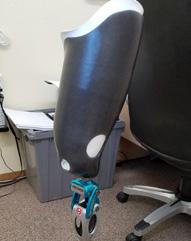

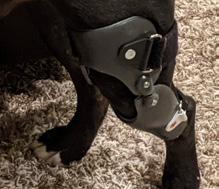

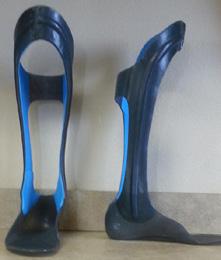
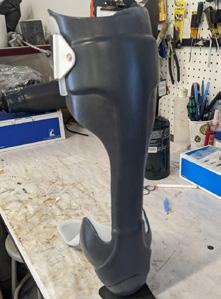
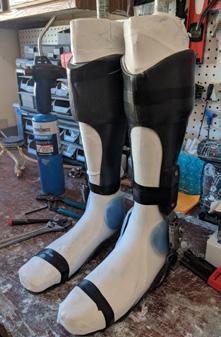


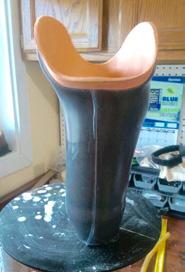
and respond to error alerts and alarms indicating problems with the function of the unit.
The LCD also includes language that expands coverage for certain prosthetic feet to include K2 ambulators when the feet are integral to the proper function of the related hydraulic, pneumatic, or microprocessorcontrolled prosthetic knee. The final LCD language is as follows:
A microprocessor-controlled ankle-foot system (L5973), energy-storing foot (L5976), dynamic response foot with multiaxial ankle (L5979), flex-foot system (L5980), flexwalk system or equal (L5981), or shank-foot system with vertical loading pylon (L5987) is covered when one of the following criteria is met:
1. The beneficiary’s functional level is 3 or above; OR
2. The beneficiary’s functional level is 2; AND a. Meets the functional-level 2 coverage
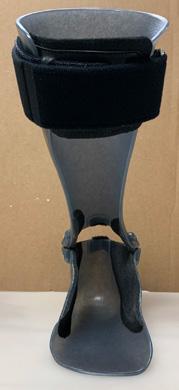



• Reimbursements for prosthetic & orthotic L codes
• 25% increased stiffness over standard polypropylene
• Available in cut-to-size blanks
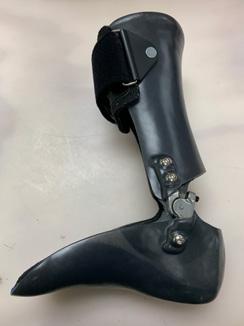


The functional-level characteristics below are based on the “CMS Health Technology Assessment: Lower-Limb Prosthetic Workgroup Consensus Document,” 2017. Note that not all traits listed for K levels must be realized by the patient in order to receive a K-level assignment, but, generally, documentation should demonstrate that equivalent activities can be achieved by the prosthetic user.
LEVEL 0: Does not have the ability or potential to ambulate or transfer safely with or without assistance, and a prosthesis does not enhance their quality of life or mobility.
a. The individual does not have sufficient cognitive ability to safely use a prosthesis with or without assistance.
b. The individual requires assistance from equipment or a caregiver in order to transfer, and use of a prosthesis does not improve mobility or independence with transfers.
c. The individual is wheelchair dependent for mobility, and use of a prosthesis does not improve transfer abilities.
d. The individual is bedridden and has no need or capacity to ambulate or transfer.
LEVEL 1: Has the ability or potential to use a prosthesis for transfers or ambulation on level surfaces at fixed cadence, typical of the limited and unlimited household ambulator.
a. The individual has sufficient cognitive ability to safely use a prosthesis with or without an assistive device and/or the assistance/supervision of one person.
b. The individual is capable of safe but limited ambulation within the home or on a similar flat surface like a home, with or without an assistive device and/or with or without the assistance/supervision of one person.
c. The individual requires the use of a wheelchair for most activities outside of their residence.
d. The individual is not capable of most of the functional activities designated in level 2.
LEVEL 2: Has the ability or potential for ambulation with the ability to transverse low-level environmental barriers such as curbs, stairs, or uneven surfaces. This level is typical of the limited community ambulator.
a. The individual can, with or without an assistive device (which may include one or two handrails) and/or with or without the assistance/supervision of one person:
i. Perform the level 1 tasks designated above
ii. Ambulate on a flat, smooth surface (e.g., concrete, asphalt) such as might be found outside the home. (e.g., porch, deck, patio garage, driveway)
iii. Negotiate a curb
iv. Access public or private transportation
v. Negotiate 1-2 stairs
vi. Negotiate a ramp built to specifications within the Americans With Disabilities Act.
b. The individual may require a wheelchair for distances that are beyond the perimeters of the yard/driveway, apartment building, etc.
c. The individual is only able to increase their generally observed speed of walking for short distances or with great effort.
d. The individual is generally not capable of accomplishing most of the tasks at level 3 (or does so infrequently, with great effort).
LEVEL 3: Has the ability or potential for ambulation with variable cadence, typical of the community ambulator who has the ability to transverse most environmental barriers and may have vocational, therapeutic, or exercise activity that demands prosthetic utilization beyond simple locomotion.
a. With or without an assistive device (which may include one or two handrails), the individual is independently capable (i.e., requires no personal assistance or supervision) of performing the level 2 tasks above and can:
i. Walk on terrain that varies in texture and level (e.g., grass, gravel, uneven concrete)
ii. Negotiate 3-7 consecutive stairs
iii. Walk up/down ramps built to ADA specifications
iv. Open and close doors
v. Ambulate through a crowded area (e.g., grocery store, big box store, restaurant)
vi. Cross a controlled intersection within their community within the time limit provided (varies by location)
vii. Access public or private transportation
viii. Perform dual ambulation tasks (e.g., carry an item or meaningfully converse while ambulating).
b. The individual does not perform the activities of level 4.
LEVEL 4: Has the ability or potential for prosthetic ambulation that exceeds the basic ambulation skills, exhibiting high-impact, stress, or energy levels typical of the prosthetic demands of the child, active adult, or athlete. With or without an assistive device (which may include one or two handrails), this individual is independently capable (i.e., requires no personal assistance or supervision) of performing high-impact domestic, vocational, or recreational activities such as:
a. Running
b. Repetitive stair climbing
c. Climbing of steep hills
d. Being a caregiver for another individual
e. Home maintenance (e.g., repairs, cleaning).
criteria for a fluid, pneumatic, or electronic/microprocessor control addition for a prosthetic knee; AND b. A higher-level (i.e., functional-level 3) foot is required for the safe and proper use of the prescribed knee system.
While the most significant changes to the final policy are included in the Policy Article, the final LCD included two significant changes that represent positive adjustments.
The first change involved the removal of the requirement that “all” lower-limb prosthetic systems be considered before electing a microprocessor-controlled knee. AOPA and other groups commented that this requirement could be misconstrued and lead to unnecessary claim denials and barriers to care. The final LCD only requires consideration of alternatives to microprocessor knees and does not stipulate that “all” available knees be ruled out.
The second significant change is a requirement that all claims for lower-limb prostheses are submitted with a KX, GA, GY, or GZ modifier. These modifiers are current requirements for several O&P-related policies and are used to indicate that coverage criteria have been met (KX), an ABN is on file (GA), no ABN is on file (GY), or no physician order is on file (GZ). O&P providers should be familiar with these modifiers and how they are used to avoid unnecessary claim denials.
The final LCD also added a new code, L5841, that describes a polycentric mechanical knee that incorporates pneumatic swing-and-stance phase control and was added to the Healthcare Common Procedure Coding System code set after the proposed LCD was released. The L5841 and L5615 will now also require a functional level modifier for claims submission, and the LCD states they are for K3 or higher.
The most significant change to the LowerLimb Prosthesis Policy Article is the establishment of activity-based criteria that should be able to be achieved by patients
within each functional-level classification. These criteria were developed as part of the CMS Lower-Limb Prosthetic Workgroup that was formed in 2017, shortly after CMS withdrew its previously proposed revision to the Lower-Limb Prosthesis LCD. The workgroup consisted of a strong mix of orthotic and prosthetic experts, including certified prosthetists and orthotists. The criteria memorialized in the Policy Article are consistent with existing functional-level criteria but, for the first time, provide actual milestones that may be definitively observed and documented by members of the rehabil itation team.
The specific language from the Policy Article is recreated in the “Functional-Level Characteristics” sidebar on page
Remember that the Policy Article states that not all traits listed as examples must be documented in order for cover age criteria to be met; they are simply examples of activities that are commonly achieved by ambulators in the assigned functional-level category.
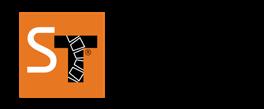
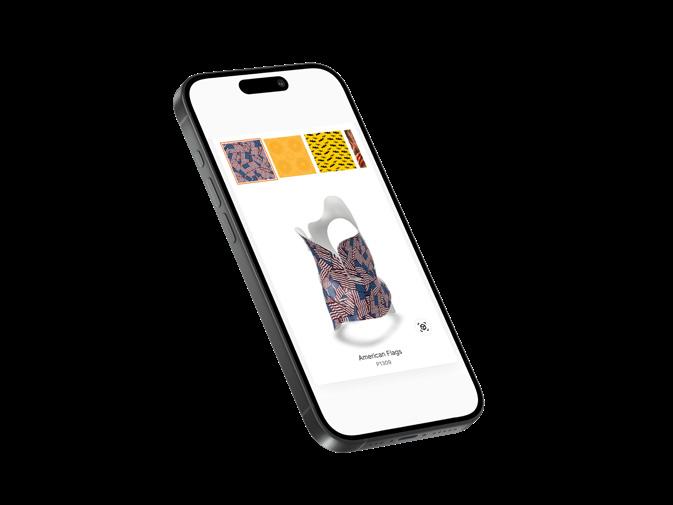

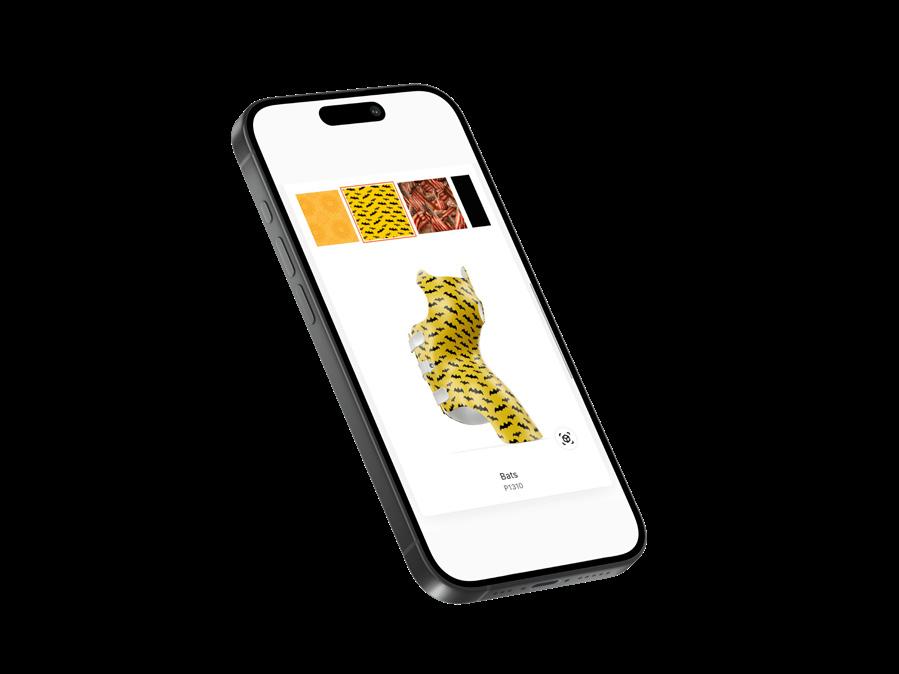


The final LCD and Policy Article have been published, so the next step is implementation—which goes into effect for claims with a date of service on or after Sept. 1, 2024.


The implementation of this policy is a seismic shift in Medicare policy that will extend to Medicare Advantage plans and many private health plans that use Medi care guidelines as their base for coverage. As such, the policy will be viewed with heavy scrutiny to ensure that expanded coverage does not lead to overutilization or potential fraud and abuse.
O&P professionals must continue to be responsible stewards of the care they provide and maintain the level of clinical professionalism that is so important to both clinicians and patients. It is a very exciting time to be part of the O&P profession, and it is more important than ever to serve as collaborators with our payor partners.
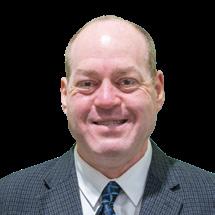

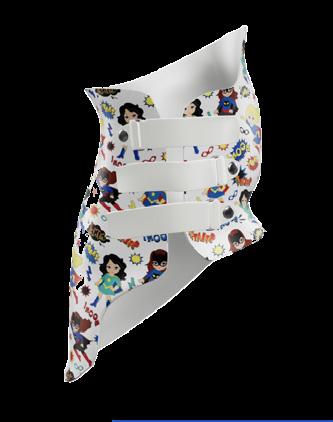

EXCLUSIVE US DISTRIBUTOR OF
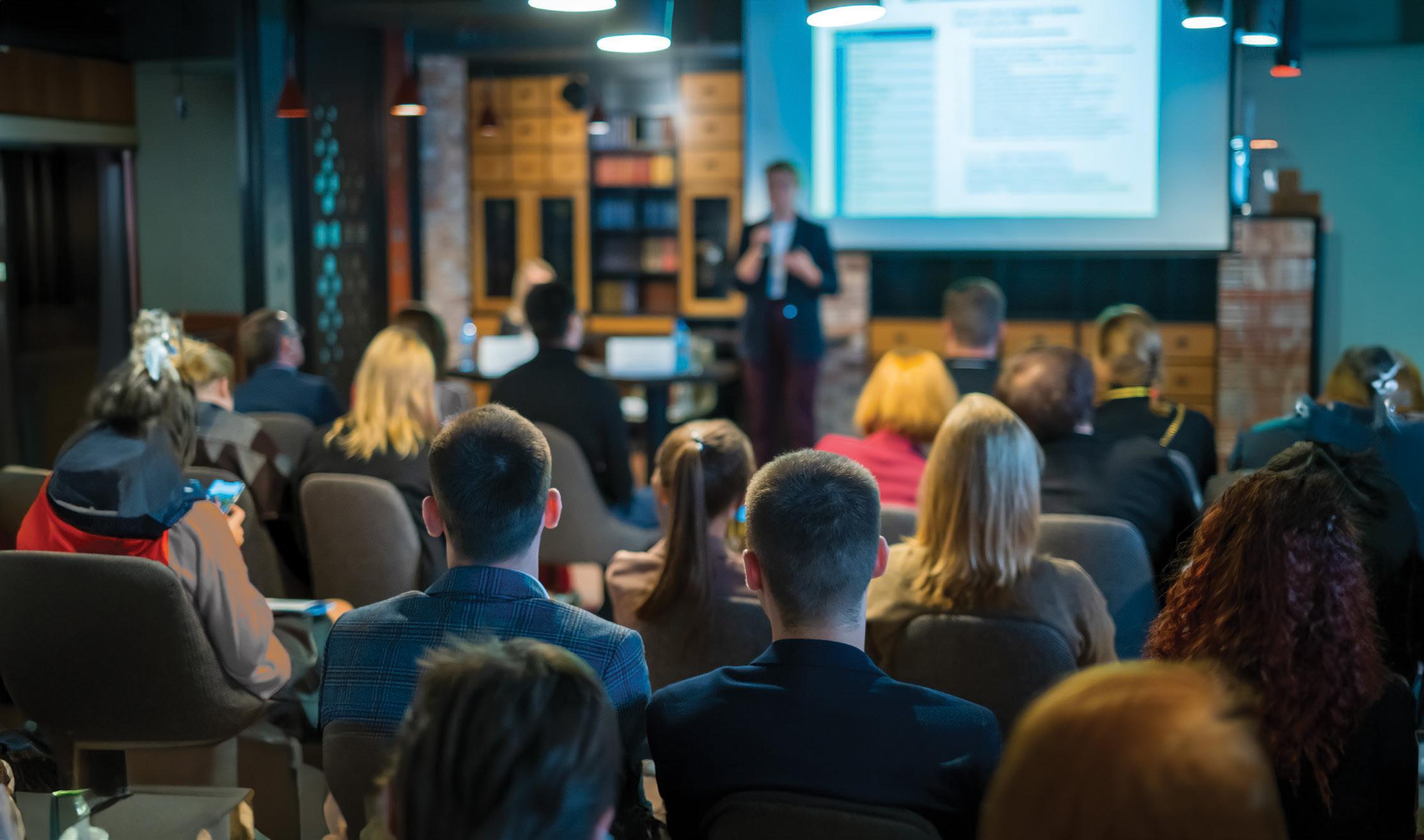
Join Fabtech Systems at AOPA 2024 for Exclusive Training and Education Sessions.
Learn about our products and techniques from the people that invented them!

SEE OUR PRODUCTS AT THE FOLLOWING BOOTHS:
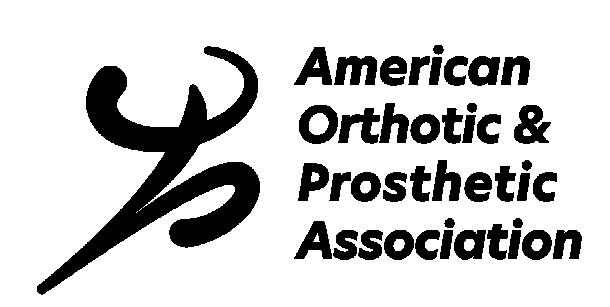
Our team will be available to provide insights into our cutting-edge Reaktiv™ brace, PDE™ technology, Pluseries™ adhesives, and Restech™ epoxy resin. This is a great opportunity to see how our solutions can improve lives and make more possible. We look forward to meeting you and sharing our passion for innovation!


Don’t miss these presentations that will enhance your skills and elevate your practice!

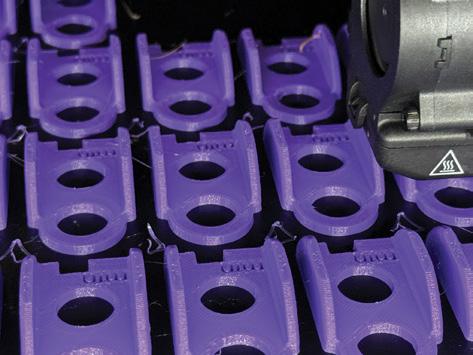


How to Properly Use Two-part Structural Adhesives in the Manufacturing of Prosthetic and Orthotic Devices and Their Fitting
Friday September 13, 2024
4:30 PM – 5:15 PM*

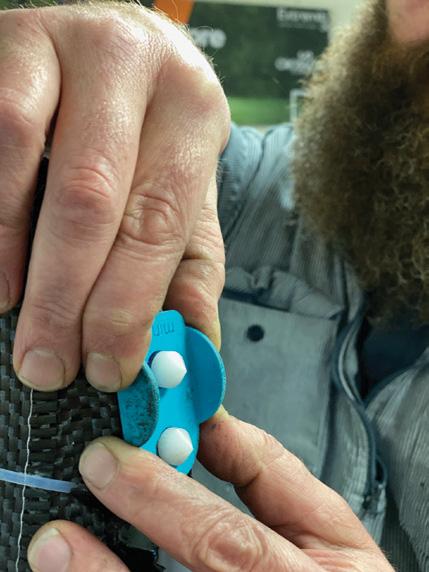



Learning How to Properly Manufacture a Modular Dynamic AFO
Saturday September 14, 2024
2:00 PM – 3:30 PM*
Printing Custom Short-Use Tooling for O&P
Clinical Care and Fabrication
Saturday September 14, 2024
4:15 PM – 4:45 PM*

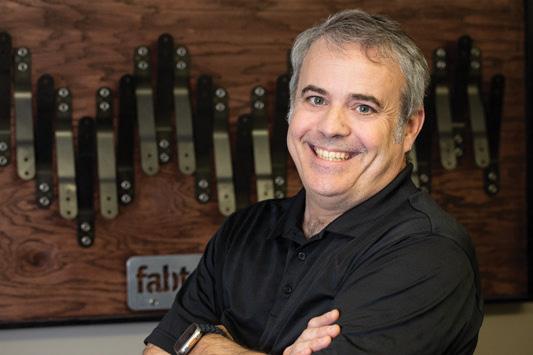



Using Modern Tools to Improve Advanced Lower Limb Orthotic Alignment
Saturday September 14, 2024
4:45 PM – 5:15 PM*
CHRISTINE UMBRELL

Meet the clinicians with personal and professional ties to the 2024 Paralympic Games
Many O&P clinicians are eagerly anticipating the upcoming Paralympic Games, which will be held in Paris from Aug. 28 to Sept. 8, and are encouraging their patients to watch the Games to see elite athletes excelling at the top level of competition—often with the assistance of the latest O&P technologies and top-notch prosthetic care.
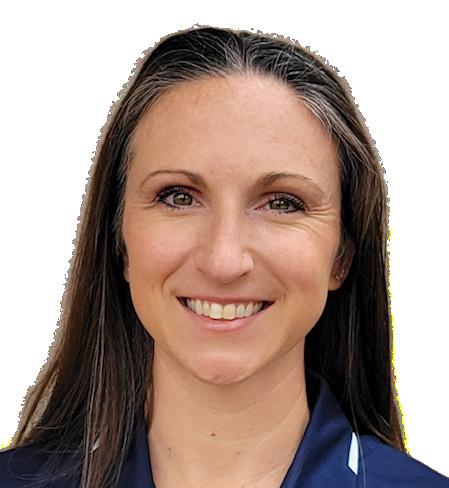
Jillian Elwart, CPO
Among a select group of prosthetists and orthotists, the Games are more than awe-inspiring—they’re personal. Roughly 4,400 athletes with physical impairments from approximately 170 countries will participate in 22 sports this year. For clinicians who are current or past Paralympians, and those who treat elite athletes as they prepare for the Games, this year’s competition in Paris plays a prominent role in their personal and professional lives.
f In the months leading up to the 2024 Paralympic Games, several prosthetists who have dedicated part of their careers to treating elite-level athletes have been particularly busy.
f Jillian Elwart, CPO, balances her time between training for the 2024 Paralympics and her day job as a pediatric prosthetist.
f David Ojeda, MPT, MSOP, CPO, who treats 19-year-old para track-andfield athlete Ezra Frech, prioritizes a multidisciplinary approach to care.
Jillian Elwart, CPO, is a pediatric prosthetist, but she also enjoys her second career as a para-athlete. Elwart will be a member of Team USA, competing in paracanoe Sept. 6 and 8.
Born with proximal femoral focal deficiency, Elwart has above-knee amputation and partial hand difference and visited Shriners Children’s Shreveport for O&P care beginning at age 3. After earning an undergraduate degree in anthropology, she completed O&P school at California State University–Dominguez Hills and became certified in prosthetics and orthotics, eventually landing a position back at Shriners.
Elwart grew up in Arkansas and always loved camping and recreational activities. Seven years ago, she took her love of outdoor activities to the next level and
f Jason Lalla, CP, who medaled in ski events at the Paralympic Games two decades ago, brings his experience and O&P expertise to his work with sprinter and long jumper Noelle Lambert.
f Francois J. Van Der Watt, CPO, LPO, who previously served as the team prosthetist for the U.S. Paralympic Team, says working with an athlete who is returning to the Games—such as Hunter Woodhall—means analyzing every aspect of their sprinting gait.
f Allison Neil, CPO, LPO, who treats several competitive athletes—including swimmer Lizzi Smith—says it’s important to learn about patients’ activities and watch them in action to provide the proper component recommendations to meet their goals.
f Pediatric prosthetists, such as JoAnne Kanas, DPT, CPO, recommend fostering athletic interests in children at a young age— and ensuring children have access to activity-specific prostheses.
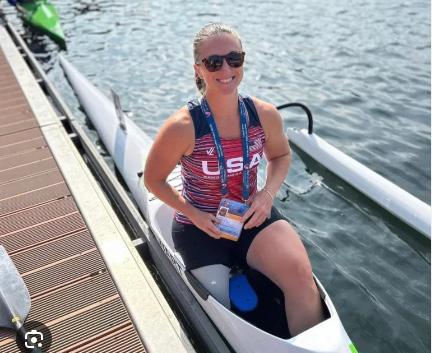
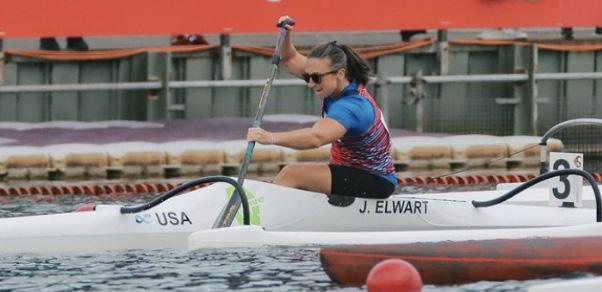
began competing in paracanoe and kayak. She excelled at both and quickly climbed the ranks. Last year, Elwart placed fourth in the canoe single VL3 200-meter race at the World Championships. In March 2024, she won her canoe race at the USA Team Trials. Now, she’ll test her abilities at the Paris Games.
When she canoes, Elwart does not wear a prosthesis; she simply uses a thigh strap to connect to adaptive equipment. Out of the water, she wears an Ottobock 3R Dynion prosthesis, which has a manual locking feature that’s “great for yoga and Pilates” and a free-swing feature that’s helpful during cardio activity. She sometimes uses an Active Hand gripping aid, which is helpful when lifting weights at the gym—particularly while doing chest and back work, rotations, and Russian twists.
Because it’s difficult to travel with a canoe, Elwart will bring only her personal items for competition—her seat, footboard, and paddle—but she’ll rent a shell once she arrives. She’ll also bring an Allen wrench, just in case she needs to adjust her prosthesis; even though it’s not needed for competition, her prosthesis is integral to training and navigating to and from her canoe.
She plans to travel about 10 days in advance of her events to get acclimated to the time change and environment, set up her canoe, and do a little sightseeing. For moral support and coaching, she’ll bring her daughter, best friend, coach, family members, and sports masseur. Her coach competed in canoe for Team USA on the able-bodied side in years past, and her sports masseur “keeps everything stretched out, which helps with body symmetry, and he does cupping and red light therapy,” she says.
As she prepares to compete at the highest level, Elwart says the biggest challenge is “balancing training and work.” Shriners has been “super supportive” of her training schedule, and she makes sure she gives just as much to her pediatric patients as she does on the water.
David Ojeda, MPT, MSOP, CPO, is looking forward to seeing one of his younger patients compete at this year’s Paralympic Games. Ezra Frech, 19, has been participating in para track-and-field for five years. Frech, who has above-knee limb loss, brought home several

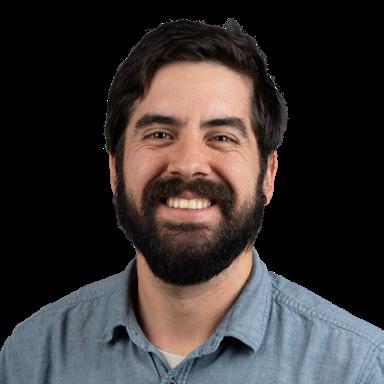
medals in high jump, long jump, and the 10-meter run in the 2019 World Junior Championships and Parapan American Games in Lima; participated in the 2000 Paralympic Games at age 16; and set a new world record in the men’s high jump T63 in the 2023 World Championships. Frech may be familiar to social media fans, as he frequently posts videos about life as an athlete with limb loss. In one post titled “What makes running as an above-knee amputee so difficult?,” Frech explains how he uses his residual limb to help control his artificial limb, noting that “it’s all about trust in the prosthe[sis].”










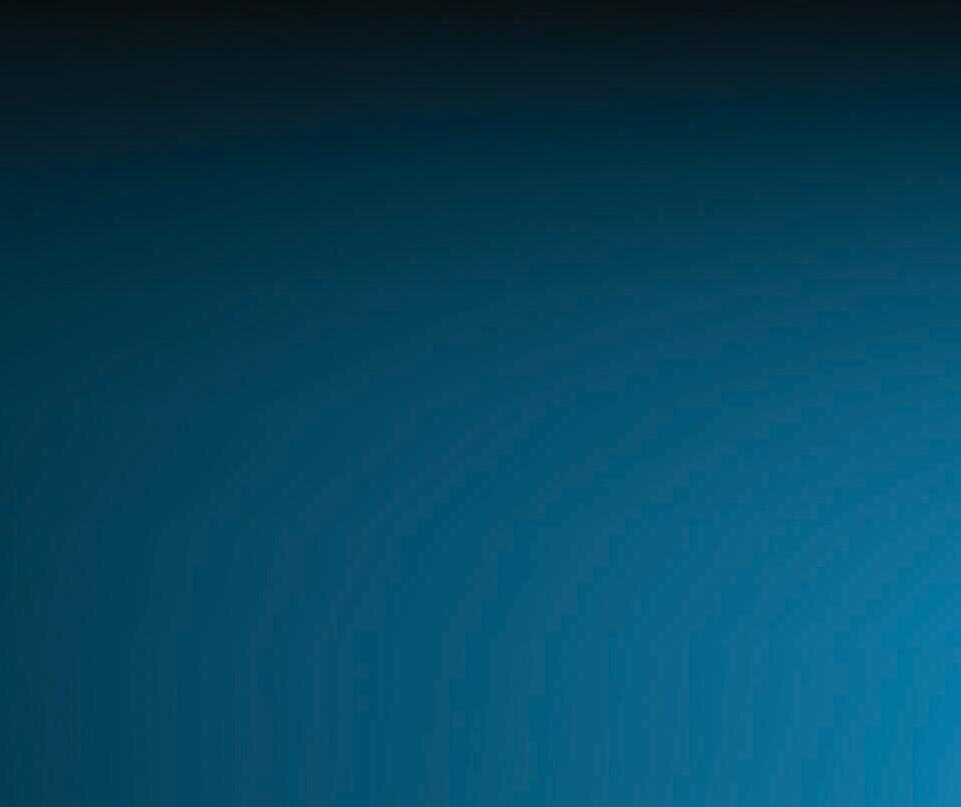

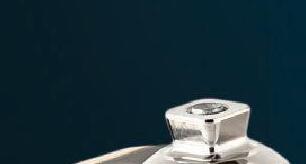
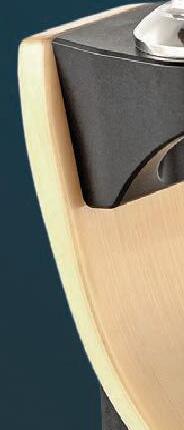




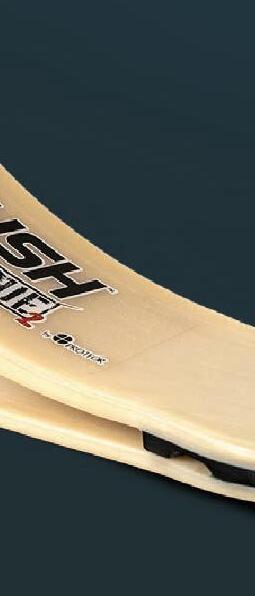





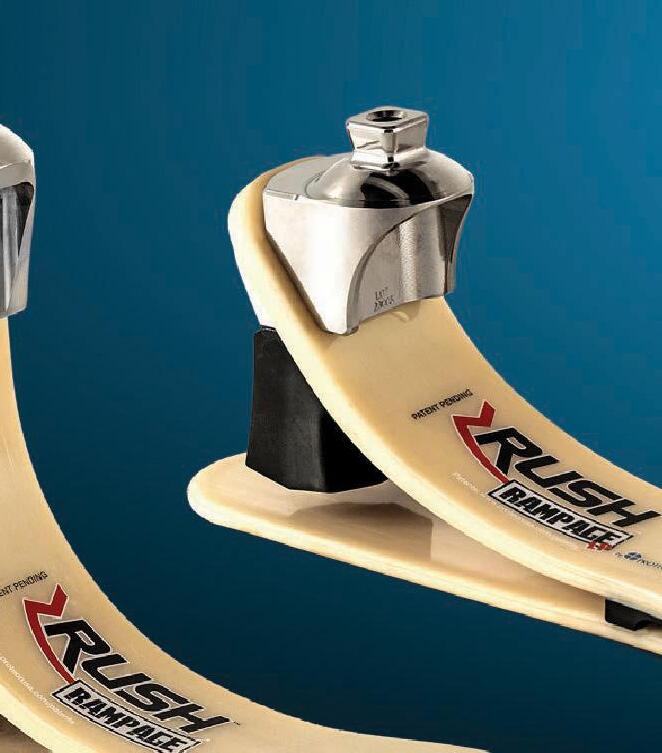



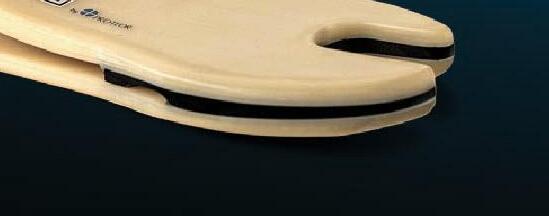

You asked. We listened. Responding to lifestyle needs and requests is important to PROTEOR. You requested more RUSH feet with sandal toe and we’re responding with:
• A full-line expansion, making sandal toe available across the entire RUSH portfolio including the RUSH EVAQ8(R) Collection.
• Greater versatility to meet more daily needs with a wider selection of footwear options.
• Same exceptional RUSH performance and confidence that you can continually depend on.













More choices for pure satisfaction, step after step.








The prosthesis Frech refers to was fit by Ojeda, who sees the athlete at Hanger Clinic in Encino, California. Ojeda takes a multidisciplinary approach to the fitting process and the selection of components. “Feedback from the athlete and their coaches is extremely important,” Ojeda says. “There is a fine balance in adjusting the components to take advantage of their full capacity, even if it isn’t traditionally what is done, so that the components help the athlete perform at their best.”
Ojeda frequently accompanies Frech during training and has traveled to some of his meets. By attending Frech’s events, Ojeda is able to gather feedback about how his patient performs under pressure and, as he explains, to see firsthand “what everyone is doing in terms of training and how the prosthesis performs in those circumstances.”
A personalized approach to care is key, according to Ojeda. “It is very easy to start comparing yourself as an athlete—and as a prosthetist—with what other practitioners are fitting or doing,” he says. “It is easy to have the temptation to mimic design and component selection from the athletes that are taking the podium, but we must always remember that prosthetic work is highly individualized; otherwise, our work may be a lot easier but not as effective.” Each athlete needs to find “what improves their performance.”
Ojeda reminds clinicians that their hard work and dedication pushes good athletes to succeed. For high-profile competitors, “it isn’t just about how amazing a prosthesis looks, or making adjustments to a device,” he says. “It is about consistency and empowering the athlete to have the prosthetic device they need to accomplish their goals.”
During the final stretch leading up to the Games, Ojeda is making sure that the tools Frech uses to train and compete—components, track pads, special attachments, liners, sleeves, and socks—are in perfect shape. And given the expected high temperatures in Paris, he notes it will be “vital to bring a towel everywhere to dry the limb and the liner and to stay cool, as well as extra prosthetic supplies.” Ojeda says, “The athlete should not be thinking about their equipment/prosthesis at the moment of competition. All of these things need to be set for the athlete, so they can focus 100% on the training. At this stage, there’s no time for experimenting or last-minute adjustments.”
Ojeda is excited to watch Frech compete. “I personally love working with Ezra. He brings a lot of optimism and energy to the Games,” he says. “I love how he serves as a role model on and off the field for other athletes with disabilities.”
The Paralympic Games elicit both memories and anticipation for Jason Lalla, CP. A retired Paralympic athlete himself, Lalla has been working with Noelle Lambert, who is expected to compete in Paris in the 100-meter run and the long jump.
Lalla, clinical director of Next Step Bionics & Prosthetics in Manchester, New Hampshire, has high hopes for Lambert, who lost her left leg above the knee in a moped accident in 2016. He helped her return to full mobility, which included playing Division 1 lacrosse, taking sixth place in the 100-meter run in the 2020 Paralympic Games, and even competing on the Survivor reality TV series in 2022.

The prosthetist understands Lambert’s circumstances well: An avid athlete himself, Lalla also is an above-knee amputee, having lost his leg in a similar way to Lambert: a motorcycle accident when he was 18 years old. After his amputation, Lalla went on to participate in two Paralympic Games, winning a gold medal in men’s giant slalom in 1998, a silver in men’s giant slalom in 2002, and a bronze in men’s downhill in 2002.
Now, Lalla will watch Lambert compete in Paris. Lambert uses a specialized skin-fit suction socket with an Össur running blade to run the 100-meter race and a new Össur blade of a slightly different design for the long jump. “We made modifications to the plantar surface of the foot to optimize her vertical and horizontal trajectory for her long jump prosthesis,” he says, “and we’ve spent a lot of time on the track fine-tuning alignment in order to squeeze every hundredth of a second out of her times.”
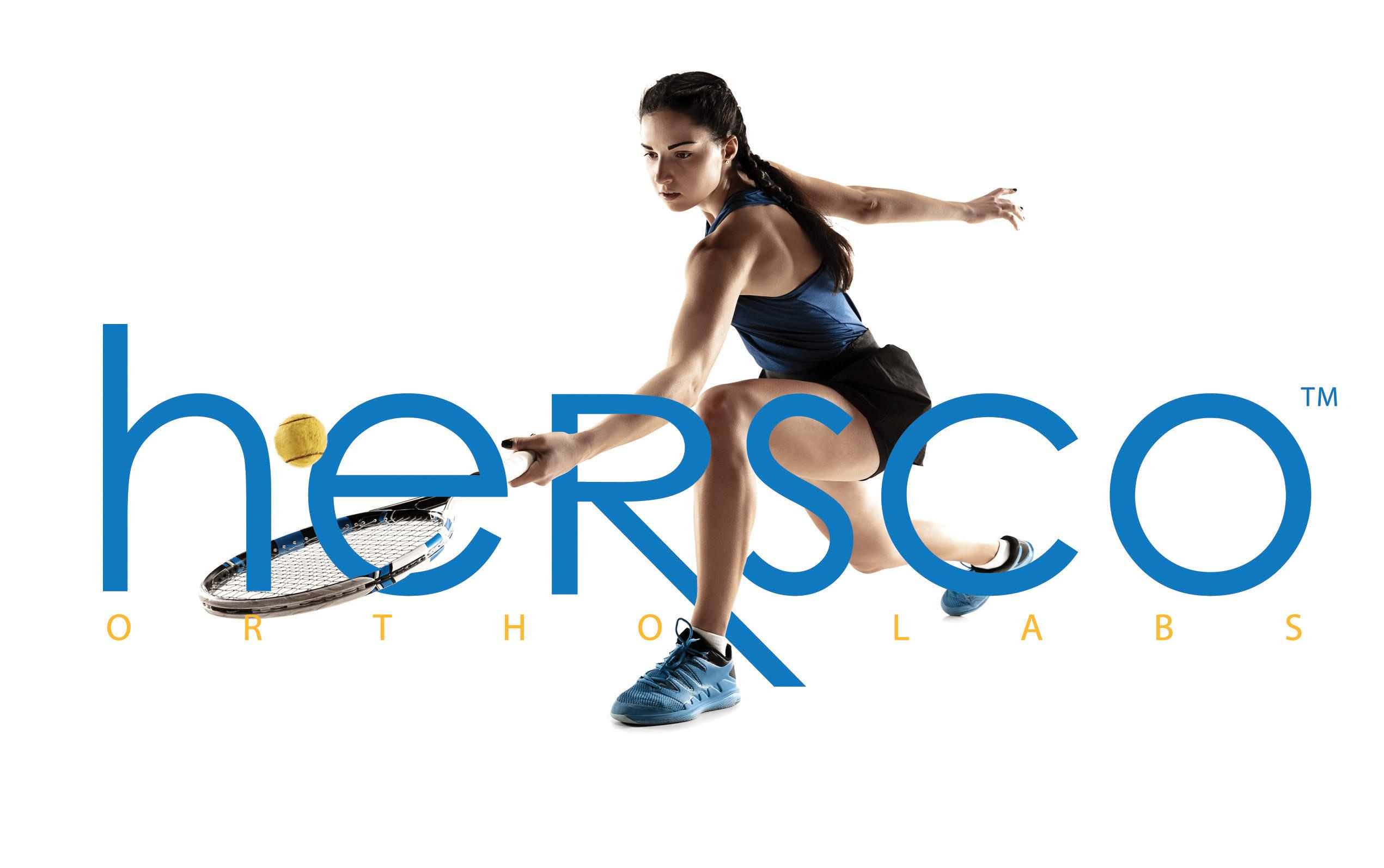
CUSTOM: FOOT ORTHOTICS • AFO’S • RICHIES
At Hersco, we pride ourselves on being on the leading edge of technology. We have mastered the art of accepting scans and 3D printing to bring you precise orthotics every time. Our team works to deliver custom orthotics tailored to each individual’s needs and specifications. We also keep an exact digital record of each patient’s foot orthotics for ease of reproduction.

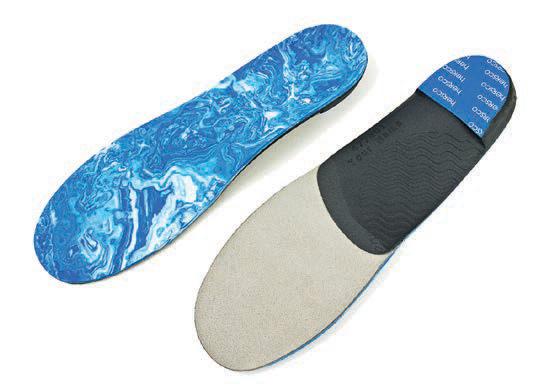
All over the competitive swimming community, buzz surrounded 17-year-old Paralympic hopeful Momo Sutton this summer. Sutton, who was born without a right arm, began swimming at age 4 and practices on a club team five days a week. While Sutton will not compete in the Paralympic Games this year, she hopes to make the team for 2028, and she recently swam in four events at the Paralympic trials in Minneapolis.
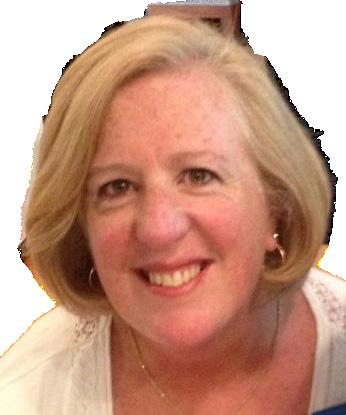
JoAnne Kanas, DPT, CPO, corporate director of O&P at Shriners Children’s and past president of the American Academy of Orthotists and Prosthetists, has worked clinically with Sutton for years. Sutton does not wear a prosthesis to swim, but she trained with a prosthetic swim paddle when she was starting out, says Kanas. The prosthesis played a key role in exposing Sutton to the sport to help with stroke development, which, “along with her hard work, helped turn her into the athlete she is,” says Kanas.
Sutton “compensates with her kick and opposite arm, shoulders, and trunk” to swim fast, explains Kanas. “She uses compensatory movements with the rest of her body to stay straight in the water—even swimming butterfly, which is a very difficult stroke.”
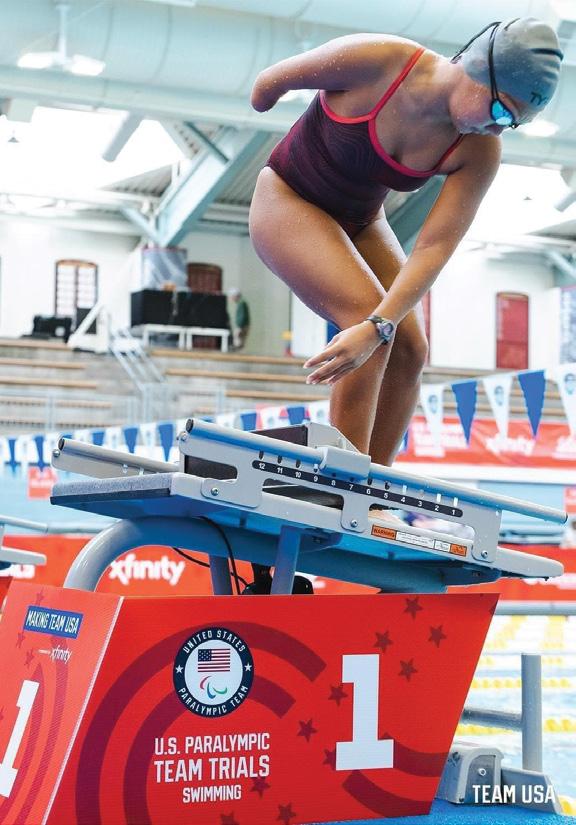
Kanas believes it is important to foster athletic interests in children with limb loss at a young age, so they can explore different sports and discover what they’re best at and what they love. “You can’t know if you’re good at something until you have the opportunity to try it,” she says. Kanas notes that the So Every BODY Can Move initiative launched by AOPA and allied O&P organizations is doing important work in ensuring more children have access to activity-specific prostheses.
“If you want to start as a young athlete to become an elite athlete, you need the proper equipment.”
Kanas points to the example of her own daughter, Dani Kanas, who acquired a limb deficiency as an infant in China. Dani, who just completed
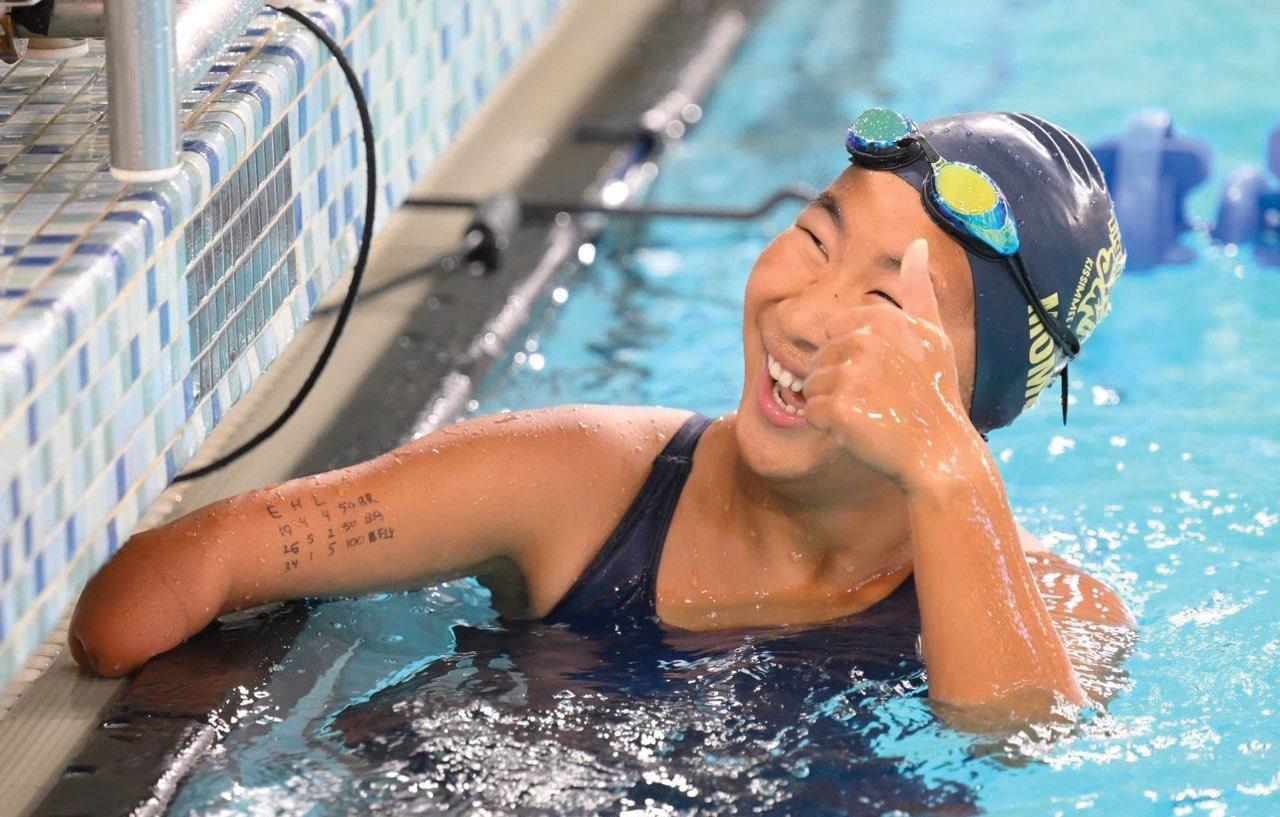
her first year at University of Alabama, has become an elite track-and-field athlete in discus, javelin, and shotput. She wears a prosthesis on her deficient left side. The prosthesis aids in Dani’s ability to have equal-length upper extremities. She holds the javelin, shotput, or discus in her sound side, but the prosthesis provides the ability to spin in preparation for a throw. “Her prosthesis doesn’t have a terminal device—it’s just a socket and forearm; it equals out her arm length,” explains Kanas.
When throwing a javelin, “your throwing arm is up, and your opposite hand is down,” so the prosthesis evens out the athlete’s leverage and fulcrum. Dani also has a Hero Arm for playing guitar and other recreational activities.
Dani, who competed with Team USA in the Parapan Games in Santiago, Chile, last November, also competed at Paralympic Trials in July and hopes to compete in 2028.
Given her wealth of experience working with young, athletic patients, JoAnne Kanas recommends that all clinicians encourage pediatric patients to explore a wide array of sports and activities, and to collaborate with parents and coaches. “The prosthetist can provide the best device—but without coaches, trainers, and therapists, they can’t expect to maximize their outcomes and performance.”
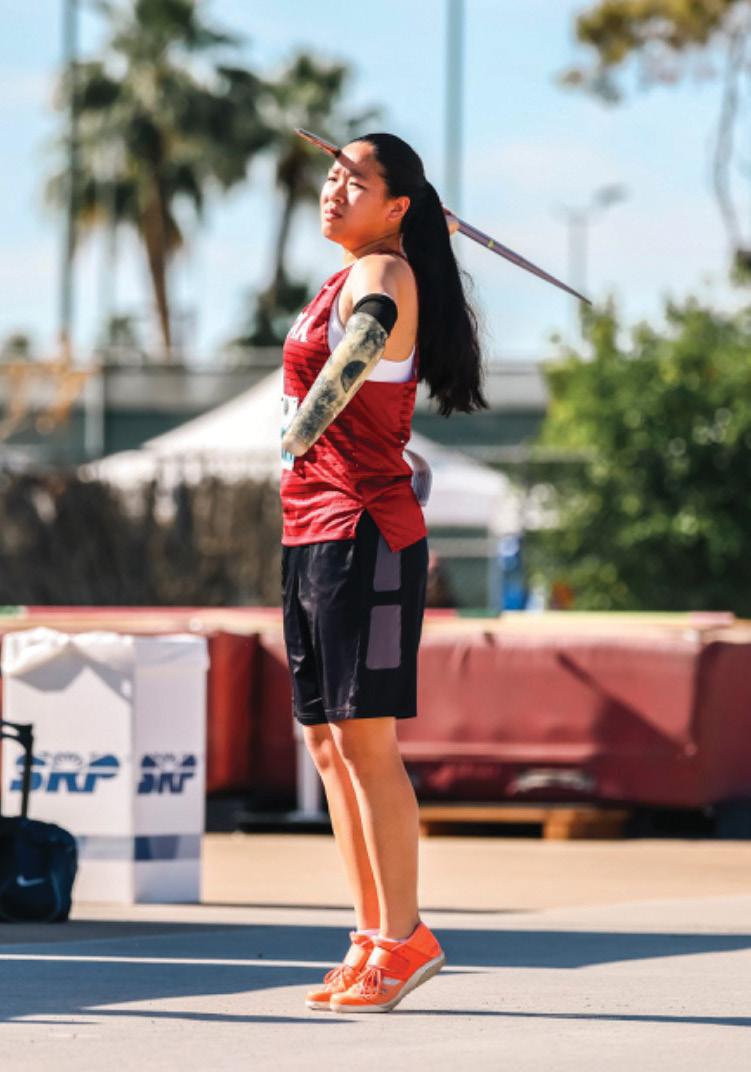

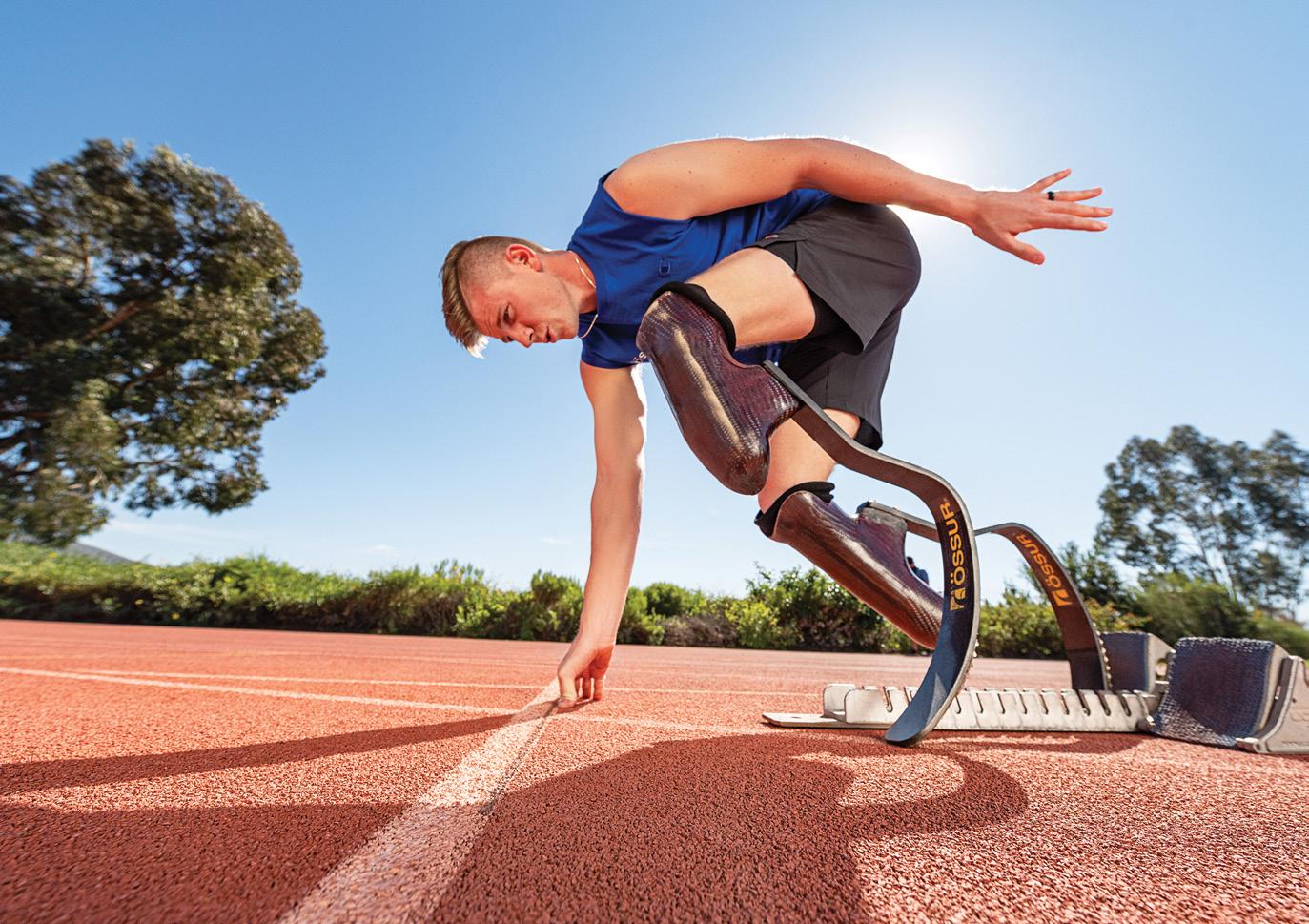
Lambert, who is part of Team Össur, is “a natural athlete who works extremely hard,” Lalla says. “She trained locally here” in New Hampshire before recently moving to Southern California. He treats Lambert both in-person, when she comes home to New Hampshire, and virtually, when she is training and can send video clips with questions about her prosthesis. “iPhone videos have opened up opportunities to fine-tune adjustments by looking at athletes in action at slow speeds,” Lalla say. “I look at videos of her competing and make suggestions for minor adjustments. When she’s out of town, Noelle is comfortable making adjustments to her prosthesis herself, based on my advice.”
In recent months, Lambert has made significant progress in her long jump distances. “She has set and broken the U.S. record multiple times,” Lalla notes. “No one in the U.S. is even close to her distances.” Lambert takes it upon herself to study the competition— and even trained with some sprinters from other countries. Lalla continues to assist as needed: “When you’re competing in timed events and events that are measured” in short increments, “you’re constantly trying to optimize every aspect of your performance’’ while ensuring you’re in compliance with all of the rules and regulations from the Paralympic Committee.
“She’s one of the most driven, competitive individuals I’ve ever worked with,” Lalla says. “She’s done some amazing things, and she makes it look easy, but she works incredibly hard every day.”
In Paris, Lalla believes Lambert has a good chance at medaling: “She’s proven she’s one of the top competitors in the world. It’ll come down to how things go on the day of competition.”

Before Francois J. Van Der Watt, CPO, LPO, moved to the United States in 2002 and opened Van Der Watt Prosthetics & Orthotics, in Greenwood, Arkansas, in 2015, he traveled to Sydney in 2000 to attend his first Paralympic Games, working with his first Paralympic medalist, Fanie Lombaard. Van Der Watt, who was born and raised in South Africa, started working
with more competitive athletes after the Sydney Games, including Oscar Pistorius, a Paralympic athlete and the first amputee sprinter to compete at the Olympics in 2012. Van Der Watt continued his involvement with Paralympic athletes stateside, working as team prosthetist for the U.S. Paralympic Team from 2008 to 2021 and attending the 2012, 2016, and 2020 Games.
This year, Van Der Watt is preparing track-and-field athlete Hunter Woodhall, a former Division I All-American bilateral amputee who ran for the University of Arkansas, to compete in Paris in the 100-meter and 400-meter races. Van Der Watt has been treating Woodhall since 2014, serving as Woodhall’s prosthetist when he earned bronze and silver medals in the 2016 and 2020 Games.

Every moment counts for track-and-field runners, says Van Der Watt, so working with an athlete who is returning to the Games means analyzing every aspect of their sprinting gait in pursuit of a gold medal. “After the Tokyo Paralympics, Hunter got a lot more focused and changed his training regimen to be more specialized,” says Van Der Watt. “He’s changed his diet and become leaner.”
As Woodhall gains strength in the gym, “we need to adjust the type of foot” he uses for competition, Van Der Watt explains. Van Der Watt and Woodhall study training videos to examine each step of the athlete’s foot placement and alignment. They also traveled internationally to research various fabrication techniques and learn how to aggregate even more minute data to capture higherquality feedback. Their collaboration uses data in a scientific-driven manner to adjust Woodhall’s alignment and prosthetic setup to best match his running style. Van Der Watt admits that the approach to athletic success has become much more of a science than when he first started out.
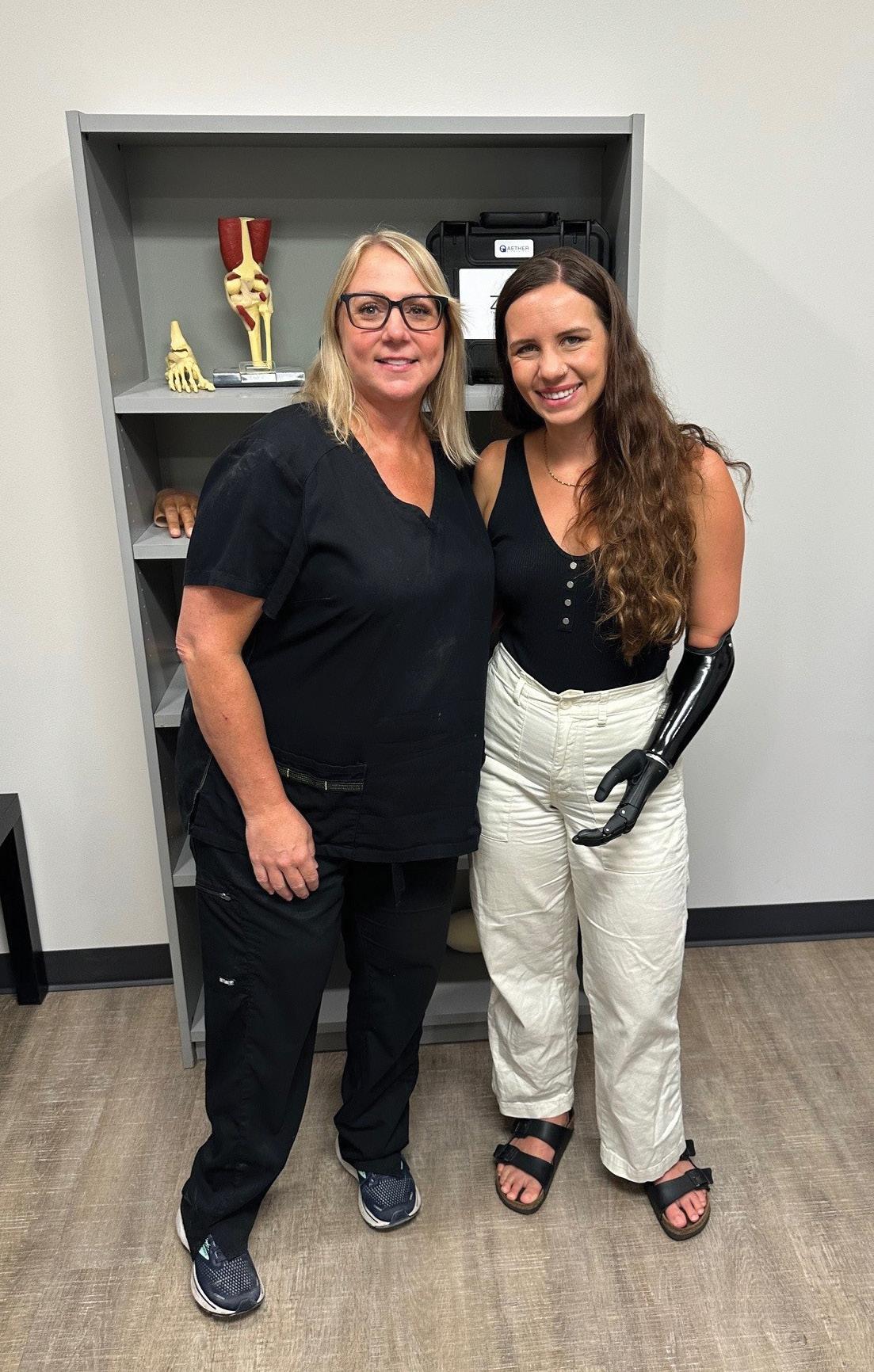
Working with a bilateral patient poses unique considerations when preparing for the Paralympics. Born with congenital limb difference, Woodhall’s legs were amputated at a young age. “As he grew, one limb developed more than the other and is longer, so finding symmetry between the left and right sides” is a challenge, Van Der Watt says. “You may generate more power on one side than the other,” so it’s important to fit the right componentry so the athlete is balanced.
Woodhall also must adhere to the International Paralympic Committee’s Maximum Allowable Standing Height (MASH) for bilateral competitors in track events. “We need to take into account what the competition height needs to be according to the formula, which is based on body segment measures,” explains Van Der Watt. “We need to find the optimum ground contact and attachment point that works, to achieve symmetry, so you don’t over-compress or under-compress one side over the other.”
For nearly 25 years, Van Der Watt has worked with Paralympic athletes, and those experiences influenced his decision to advocate for improved reimbursement and coverage of activity-specific
prostheses. He worked diligently, with assistance from AOPA, to advocate for Act 805 in Arkansas. The legislation, which requires payors to cover activity-specific devices as well as showering/ bathing devices, took effect last summer. This legislation will enable more individuals to receive the prostheses and orthoses they need to participate in sports activities—which could lead to more U.S. athletes heading to future Paralympic Games.
Although Van Der Watt won’t be traveling to Paris this year, he has high hopes for Woodhall.
Allison Neil, CPO, LPO, will be on call leading up to the Paralympics to answer last-minute questions from 29-year-old Lizzi Smith, who will be swimming at the Games. Born with congenital limb absence below her elbow, Smith swims without a prosthesis and previously competed in the 2016 and 2020 Games; she is the defending silver medalist in the 100-meter butterfly.
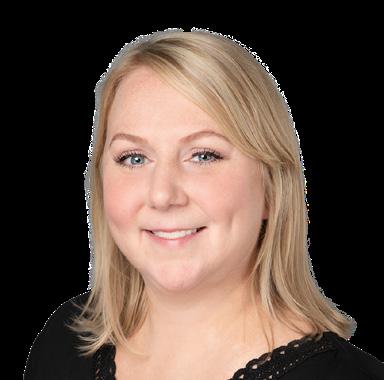
Until a few months ago, Smith utilized only an activity-specific arm for working out, but she recently began wearing a myoelectric prosthesis outside the pool. “Lizzi came to our Hanger Clinic location in Austin, Texas,” where Neil is an area clinic manager and upper-limb specialist, “to look at a new multiarticulating myoelectric hand, which she felt would improve her tasks” around the house, in the community, and at the gym for pushups and lifting weights, says Neil. She accompanied Smith to several occupational therapy appointments and took part in conference calls with the prosthetic manufacturer to optimize Smith’s use of the device.
“As a new myoelectric user, she is figuring out how the different grasps of the hand can help her in her day-to-day activities,” Neil explains. With the advanced hand, Smith travels and navigates her daily routine more easily: “She can now carry multiple bags, coffee, and tablets,” and has learned to write her name ambidextrously. “It’s my job to empower her to incorporate her prosthesis into her busy schedule, and that it is optimized for her.”

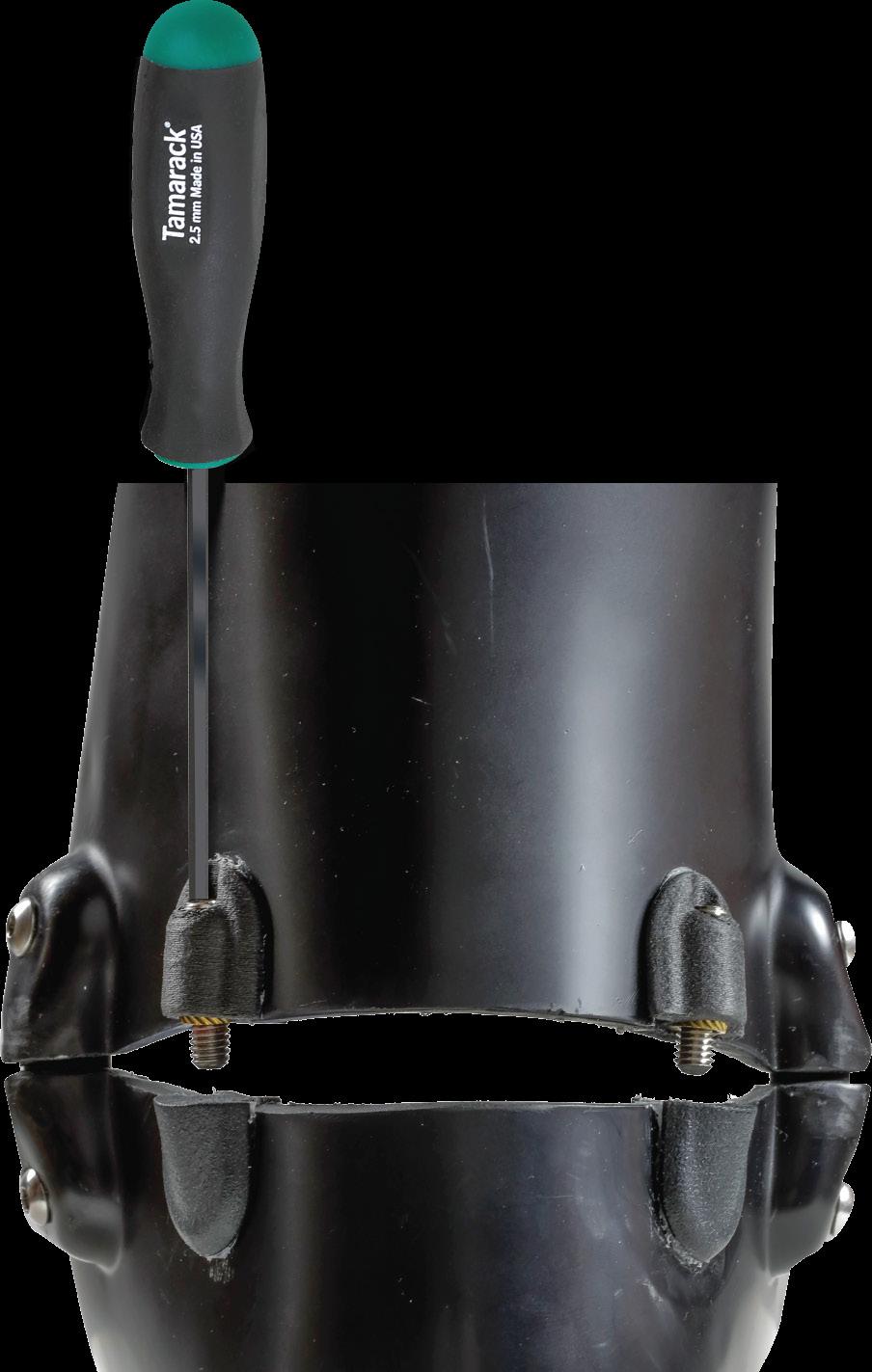



SCAN TO SEE KIT COMPONENTS & INSTALLATION GUIDE


In addition to working with Smith, Neil has worked with other athletes, including runners, powerlifters, and cyclists. For each patient, “I need to know enough about their sport to provide the proper component recommendations to meet their goals,” Neil says. Typically, patients bring their equipment to the clinic for alignment during design phase or adjustments once it is finished. “If it is not practical to do so, then it’s common to go to the location where they train to see the prosthesis in action, so modifications can be made.” She also makes on-the-spot repairs at weekend competitions. “I try to educate my patients on some of the small potential tweaks they can do themselves if they find themselves in a bind.”
Neil hopes that more O&P patients will get involved in athletics by participating in local active amputee groups or by forming their own organizations. “Start local, and as you improve in your endeavors, research competitions.” She points to organizations such as The Challenged Athletes Foundation, which can assist with activityspecific prostheses for sports, and the So Every BODY Can Move initiative, which was launched by AOPA and allied O&P organizations and advocates for state-level legislation mandating coverage of activity-specific prostheses. As more people get involved in sports, the level of competition at future Paralympic Games will rise.
O&P clinicians will adapt accordingly. “As prosthetists, our job is to give patients confidence knowing they have the support and expertise of a team that is backing them,” Neil says. “Elite athletes are often traveling to competitions all over the world. We must make ourselves available for last-minute adjustments or repairs, often on short notice. We help coordinate with other Hanger Clinic locations to make sure they have a contact if they need something while traveling.
“Bottom line: You must make yourself available to assure that their device is not something they have to worry about, and they can concentrate on the competition at hand.”
Christine Umbrell is a contributing writer to O&P Almanac Reach her at cumbrell@contentcommunicators.com

Prosthetic restorations include:
Traditional prostheses have been fabricated primarily to restore function with little emphasis on the aesthetic appearance. ARTech's natural looking restorations are virtually undetectable.

Custom fitted for the ultimate patient comfort.
Custom fitted for the ultimate patient comfort.
• Custom fitted for the ultimate patient comfort.
• Custom sculpted, in great detail, to the mirror image of the sound extremity.
Custom sculpted, in great detail, to the mirror image of the sound extremity.
• Custom painted to match the sound extremity including veins, freckles, age spots, hair, scars, etc.
Custom sculpted, in great detail, to the mirror image of the sound extremity.
A.E. and B.E. Passive and Myo Coverings, Total and Partial Hands, Fingers, A.K. and B.K. Coverings, Total and Partial Feet, Toes, Ears and Noses.
Traditional prostheses have been fabricated primarily to restore function with little emphasis on the aesthetic appearance. ARTech's natural looking restorations are virtually undetectable.
Office: (888) 775-5501 Fax: (972) 775-2499 www.artechlab-prosthetics.com
ARTech silicone prostheses can improve gait and posture, ease lower back pain, relieve pressure on bone spurs and other sensitive areas, protect the tissue from further injury, improve the operation of myoelectric hands, etc.
ARTech silicone prostheses can improve gait and posture, ease lower back pain, relieve pressure on bone spurs and other sensitive areas, protect the tissue from further injury, improve the operation of myoelectric hands, etc.

For 30 years, The Bremer Group Company has established a reputation for supporting practitioners and patients with quality back braces, and exceptional customer service. The VertAlign® Spinal Support System embraces these 7 Cs.
For more information call 800-428-2304 or visit www.bremergroup.com.

VertAlign® is a registered trademarks of The Bremer Group Company
VertAlign protected under U.S. Patent No. 5,718,670 © 2024, The Bremer Group Company. All rights reserved. 24-3796 AUG
Embracing Excellence
The Bremer Group Company 11243-6 St. Johns Industrial Pkwy. South. Jacksonville, Fl 33246 TEL 904-645-0004 | FAX 904-645-0990 Toll Free 800-428-2304 bremergroup@bremer.net


SEPTEMBER 12-15, 2024
Exchange ideas, interact with colleagues, and view innovative O&P products and services while you experience the 2024 AOPA National Assembly

Assembly Sponsors………34
Meet the exhibitors that have signed on as title sponsors for the 2024 AOPA National Assembly
Exhibitor Directory………38
Access a complete, alphabetical listing of the exhibitors and their booth numbers
Exhibit Hall Map………39
Navigate the show floor using this handy floor plan
The 2024 AOPA National Assembly is just around the corner, and it’s time to get pumped for supercharged networking opportunities! From Sept. 12 to 15, Charlotte, North Carolina, will be buzzing with the brightest minds in the O&P field. This is your chance to fire up your career and make connections that will last a lifetime!
Kick off the conference with a bang Thursday, Sept. 12, from 5:30 to 7:30 p.m., for the Welcome to Charlotte Reception. The exhibit hall will transform into a networking paradise. Mingle with industry rock stars, sip on refreshments, and enjoy live entertainment. While you are there, don’t forget to follow AOPA’s social channels. Join the #AOPA2024 conversation to connect with other attendees and exhibitors and stay in the loop with real-time conference announcements and highlights.
Come back to the exhibit hall on Friday from 5:15 to 6:30 p.m. for Happy Hour. Raise a glass to new opportunities as the showroom floor becomes the hub of connections. Catch up with familiar faces, meet potential partners, and get the lowdown on the latest industry innovations firsthand. It’s networking made fun!
Career empowerment is on the menu Saturday, Sept. 14, at noon, during the Professional Women in O&P Luncheon, to be held in E219AB. This special event honors the contributions and advancements of women in the O&P profession. The program offers women a casual opportunity to network, share experiences, and learn from O&P trailblazers.
And who said breaks are just for coffee? Between sessions on Thursday and Friday, seize the moment to chat up your peers and share lightbulb moments from educational tracks. Take a moment to meet presenters after their talks. Who knows, those quick connects could lead to your next big breakthrough!
The 2024 National Assembly is your ticket to a thriving professional network and turbo-charged learning. Get ready to connect and collaborate. While you are there, set aside plenty of time to browse the exhibit hall aisles, meet with representatives from exhibiting companies, and interact with thousands of O&P stakeholders from across the world. Keep these O&P Almanac pages handy as you navigate the conference.
See you in Charlotte—where your next big opportunity awaits!
EXHIBIT HALL HOURS
THURSDAY Sept. 12
5:30 – 7:30 p.m.
DON’T MISS THESE
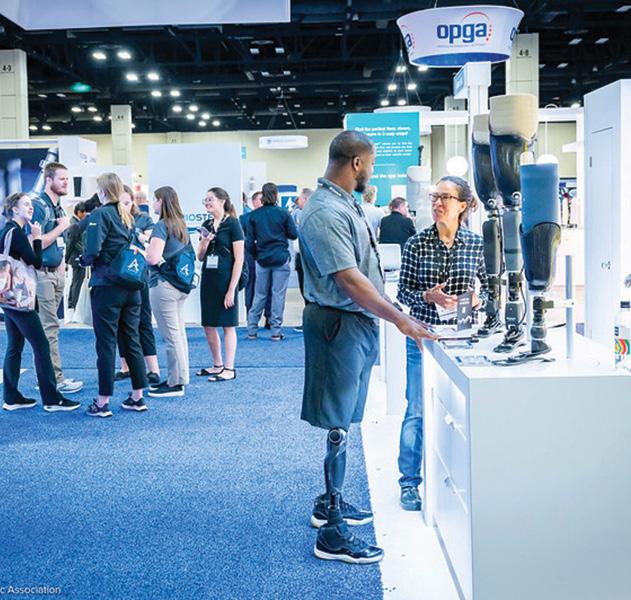
Lunch in the Exhibit Hall
Friday, Sept. 13, and Saturday, Sept. 14
Noon – 2 p.m.
A
Thursday, Sept. 12 5:30 – 7:30 p.m.
Friday, Sept. 13, and Saturday, Sept. 14
in the Exhibit Hall Friday, Sept. 13 5:15 – 6:30 p.m.
CAN’T MAKE IT TO CHARLOTTE?
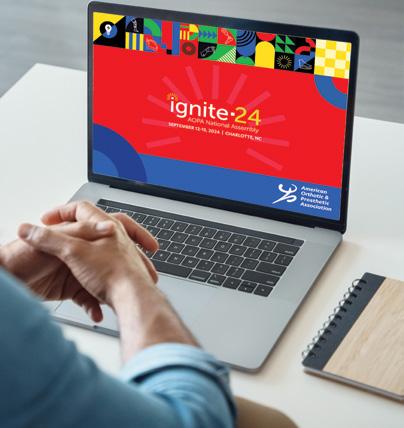
webEASY-TO-USEportal
That’s OK—if you miss a session you wanted to attend, or if you cannot travel to Charlotte for the 2024 AOPA National Assembly, AOPA will bring the education to you—virtually—starting Oct. 1 and ending Nov. 30. Learn on your own schedule!*
* Included with Full Conference Registration
Sponsors preview their exhibits for the AOPA National Assembly

Alps South
Booth 1004
Area of Specialty: Prosthetic liners and sleeves St. Petersburg, Florida easyliner.com
We’re excited to share our newest and most advanced prosthetic solutions! We have a wide variety of high-quality, innovative product offerings that cater to your patients’ specific needs, from liners and sleeves to the unique BioStep™ prosthetic foot range. Our products offer exceptional comfort, support, and mobility, giving your patients the confidence to tackle their daily activities with ease. We’re confident that our range of prosthetic solutions will not only help your patients experience the best quality of life possible but also help you save on costs and grow your business. Visit Booth 1004 to uncover the ALPS Value!
Össur Americas
Booth 302
Area of Specialty: Lower- and upper-limb prosthetics, bracing, and supports Irvine, California ossur.com/en-us
As a leader in prosthetic innovation, we invite you to visit the Össur booth to explore our latest advancements and meet our special guests. We will be showcasing many new and updated products across our upper- and lower-limb prosthetic portfolios. Discover new Pro-Flex® Feet technology, elegant solutions in Iceross® liners and suspension, as well as innovative approaches to socket manufacturing, and—as always—our full line of Bionic products. Join us alongside our colleagues from Naked Prosthetics to see the future of prosthetic solutions.
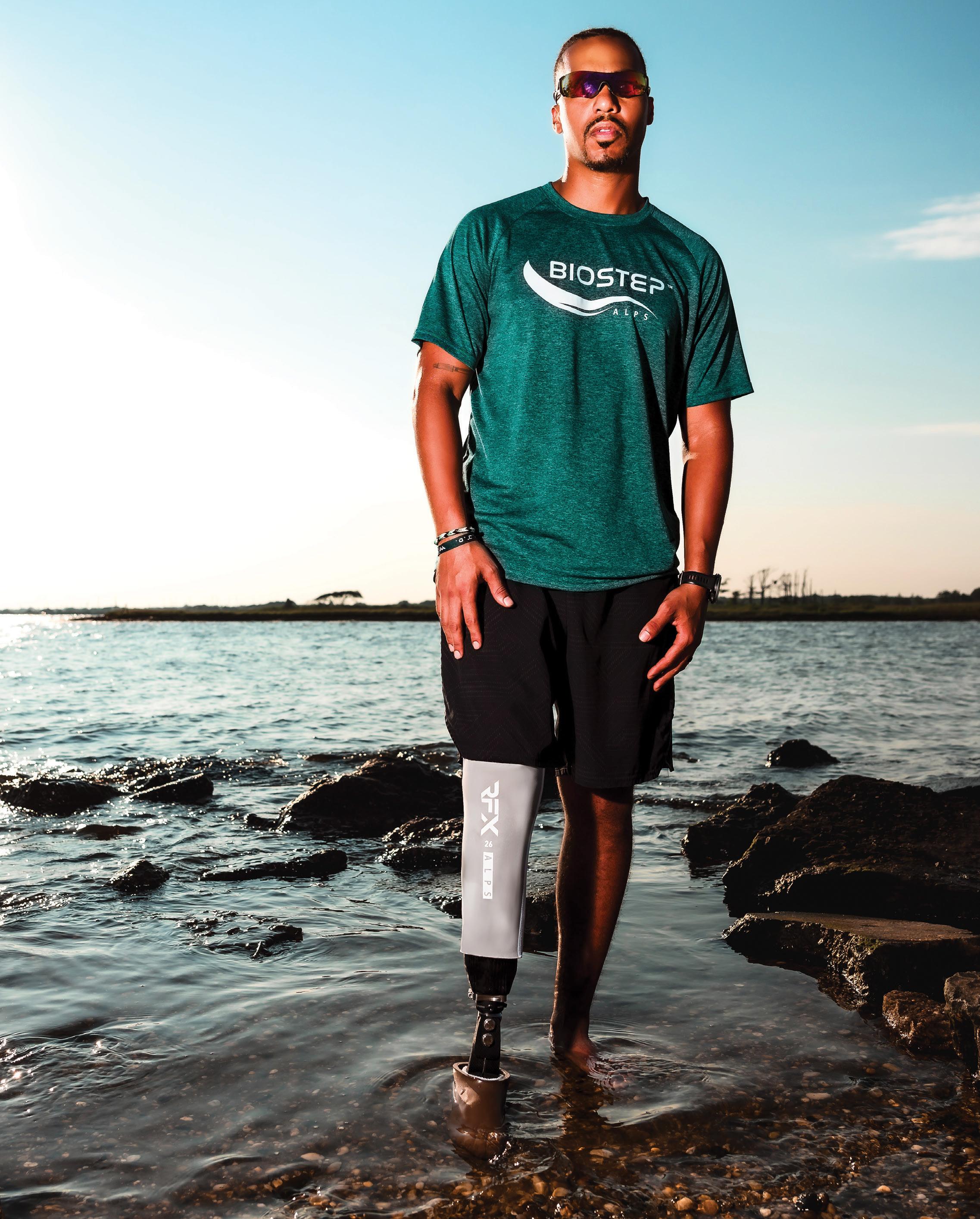
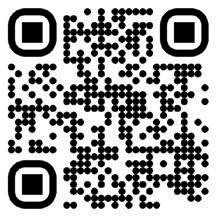
Allard USA
Booth 526
Area of Specialty: Orthotics
Rockaway, New Jersey allardusa.com
Allard is thrilled to unveil our first prosthetic foot, Meracus. See how we have used our 25 years of carbon-composite expertise to bring you the industry’s first pure composite foot! Check out the precision and quality of partial-foot prostheses and contracture management orthoses meticulously crafted in our new SmartFAB Central Fabrication Facility. Let us show you the design and benefits of our new autoclaved, lightweight carbon footplate that mirrors the foot’s silhouette for a more comfortable fit in the shoe. Our AOPA education offering: Pediatric AFO, Partial Foot, and Contracture Management workshops + Meracus, and two partial-foot Product Preview Theatres!
Booth 326
Area of Specialty: Credentialing board Alexandria, Virginia abcop.org
Visit our booth to learn about the WhatIsPOP Career Awareness Initiative and how you can be involved in helping to grow the profession. WhatIsPop is designed to educate, excite, and encourage future orthotists, prosthetists, and pedorthists. Growing the profession will help ensure a strong and competent workforce ready to serve an ever-growing patient population and an even stronger voice willing to make a difference. Contact ABC today to become an Ambassador and help spread the word about the profession you love.

Booth 406
Area of Specialty: Certification and accreditation
Owings Mills, Maryland bocusa.org

Booth 720
Area of Specialty: Professional liability/malpractice and all business insurance
Youngstown, Ohio cailorfleming.com
Cailor Fleming’s merger with World Insurance has created a multitude of resources we’ve never been able to bring to the O&P industry before, including health insurance, long-term care insurance, life insurance, and short- and long-term disability insurance. We also have consulting services, including payroll and human resources, safety consulting, and financial services. We have The World at your fingertips!
Booth 702
Area of Specialty: Design and custom fabrication of spinal orthoses West Yarmouth, Massachusetts spinaltechnology.com
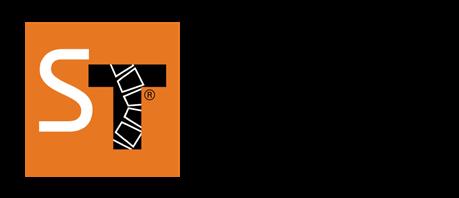


Spinal Technology is the global leader in the design and custom fabrication of spinal orthoses for the stabilization, immobilization, and correction of various abnormalities of the spine. Specializing in the treatment of adolescent idiopathic scoliosis, we employ the latest technologies and methods for treating each and every patient. We are excited to be able to share new technology at the 2024 AOPA Assembly that we will be releasing to the public later this year. Stop by Booth 702 to get a sneak peek and learn more.


Visit BOC at Booth 406 to learn about accreditation for O&P facilities and certification for orthotic and mastectomy fitters—directly from our senior leadership team! BOC also invites any of the more than 2,000 BOC-certified fitters, orthotists, prosthetists, and pedorthists attending the Assembly to stop by our booth for a special gift to commemorate BOC’s 40th year of credentialing excellence. Attendees can add to their CEU count by completing the Exhibit Passbook on site and attending educational sessions. BOC can’t wait to connect with you!

Booth 1106
Area of specialty: O&P news and information
Alexandria, Virginia aopanet.org/publications/op-almanac-magazine

AOPA and O&P Almanac staff look forward to connecting with Assembly attendees and learning what’s top-of-mind for today’s O&P professionals. The O&P Almanac booth will feature current and past issues of AOPA’s O&P Almanac magazine. Stop by to pick up a copy and learn about earning continuing education points by reading.










On the following pages is a look at the companies exhibiting at the 2024 AOPA National Assembly. You’ll find company names, booth numbers, and website information for each exhibitor. Use this guide to get to know this year’s exhibitors and plan your visit to the exhibit hall. Visit aopaassembly.org for full exhibitor details.
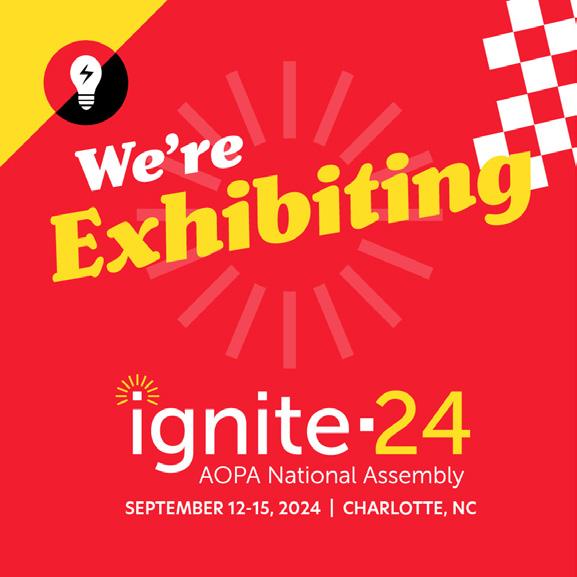
n ABCorp 3D Booth: 503 abcorp-3d.com
Acor Orthopaedic LLC Booth: 840 acor.com
Aether Biomedical Booth: 846 aetherbiomedical.com GOLD SPONSOR
Allard USA Booth: 526 allardusa.com
American Academy of Orthotists and Prosthetists Booth: 330 oandp.org
American Breast Care Booth: 742 americanbreastcare.com = New Exhibitor for 2024 Bold = Member of AOPA Exhibitors as of August 14, 2024
Alps South LLC Booth: 1004 easyliner.com
n Alt-Bionics Inc. Booth: 400 altbionics.com
Alternative Prosthetic Services Inc. Booth: 305 alternativeprosthetics.com
SPONSOR
American Board for Certification in Orthotics, Prosthetics & Pedorthics Booth: 326 abcop.org
American Orthotic & Prosthetic Assn. (AOPA-Member Hub) Booth: 1106 aopanet.org
American Prosthetic Components Booth: 821 americanprostheticcomponents.com
Amputee Coalition Booth: 518 amputee-coalition.org
Anodyne Booth: 622 anodyneshoes.com
Apis Footwear Co. Booth: 408 emeys.com
ARTech Laboratory Inc. Booth: 1040 artechlab-prosthetics.com
Aspen Medical Products Booth: 412 aspenmp.com
Becker Orthopedic Appliance Co. Booth: 723 beckerorthopedic.com
BILLY Footwear Booth: 547 billyfootwear.com
BionicM Inc.
Booth: 301 bionicm.com/en
n BionIT Labs Inc. Booth: 443 bionitlabs.com/en_us
BioSculptor Corp. Booth: 201 biosculptor.com
Blatchford Booth: 403 blatchfordus.com
GOLD SPONSOR
Board of Certification/Accreditation (BOC) Booth: 406 bocusa.org
Bowman Medical International Booth: 226 bowmanmedicalinternational.com
BrainRobotics Booth: 418 brainrobotics.com
Bulldog Tools Booth: 900 bulldogtools.com
GOLD SPONSOR
Cailor Fleming Insurance Booth: 720 cailorfleming.com/specialty/orthoticsprosthetics-insurance
Cascade Orthopedic Supply LP Booth: 726 cascade-usa.com
CBS Medical Billing & Consulting LLC Booth: 402 cbsmedicalbilling.com
Coapt LLC Booth: 647 coaptengineering.com
College Park Industries Booth: 310 college-park.com
Comb O&P Booth: 532 combscan.com
Comfort Products Inc. Booth: 800 comfortoandp.com
Coretech Orthopedics Booth: 936 coretechortho.com
COVVI Booth: 646 covvi.com
Coyote Prosthetics Orthotics Booth: 714 coyote.us
Curbell Plastics Inc. Booth: 223 curbellplastics.com/materials/industries/ orthotics-and-prosthetics
Danmar Booth: 1123 danmarproducts.com
DAW Industries Booth: 918 daw-usa.com
DME MAC Medicare Contractors Booth: 441 cgsmedicare.com
Dr. Comfort Booth: 529 drcomfort.com
Drew Shoe Corp. Booth: 837 americanbreastcare.com
n EDSER Labs Booth: 322 edserlabs.com/en
Elevate Movement Booth: 531 Elevate Movement
Ethnocare Booth: 430 ethnocare.ca
Fillauer Companies Booth: 902 fillauer.com
FIOR & GENTZ GmbH Booth: 426 fior-gentz.de/en
FLO-TECH O&P SYSTEMS Inc. Booth: 307 1800flo-tech.com
Formlabs Booth: 509 formlabs.com
Friddle’s Orthopedic Appliances Inc. Booth: 618 friddles.com
Grace Prosthetic Fabrication Inc. Booth: 701 gpfinc.com
Hanger Clinic Booth: 939 hangerclinic.com
HiTek Fabrication Booth: 537 hitekfab.com
HP 3D Printing Booth: 736 hp.com/us-en/printers/3d-printers.html
Icarus Medical Booth: 642 icarusmedical.com
Infinite Biomedical Technologies Booth: 601 i-biomed.com
Integrum Inc. Booth: 520 integrum.se
Invent Medical USA LLC Booth: 508 inventmedical.com
Kinetic Research Booth: 602 kineticresearch.com


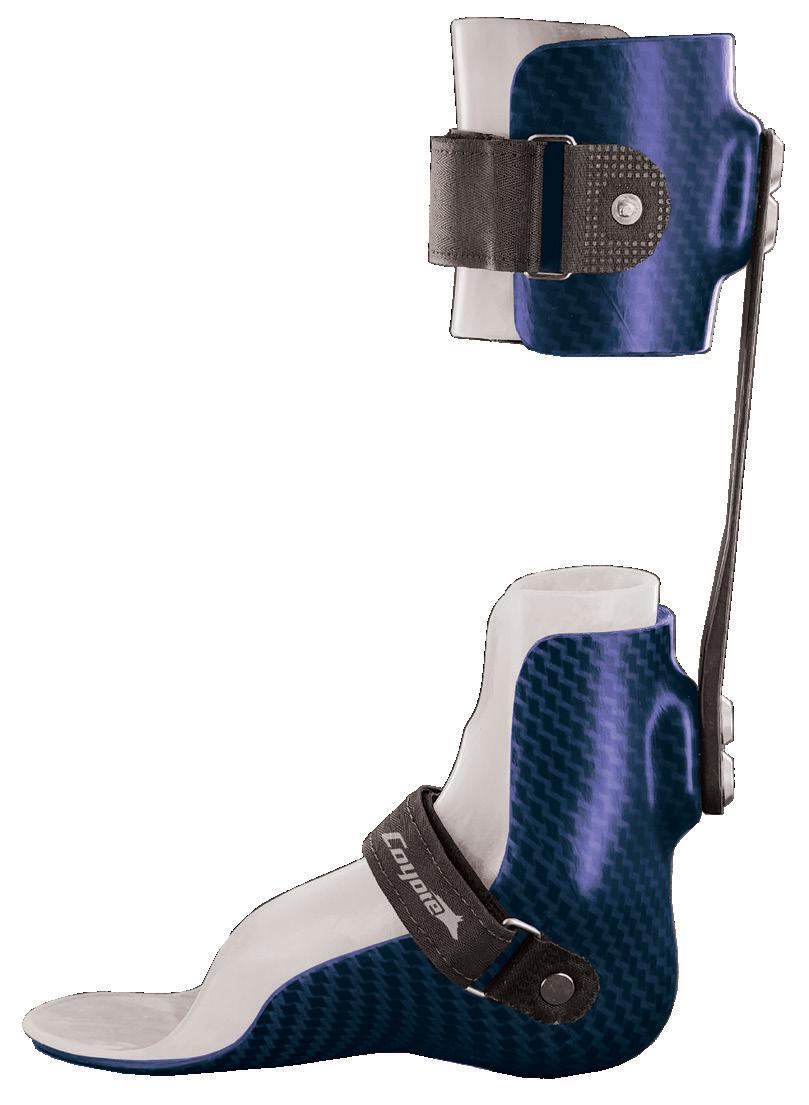
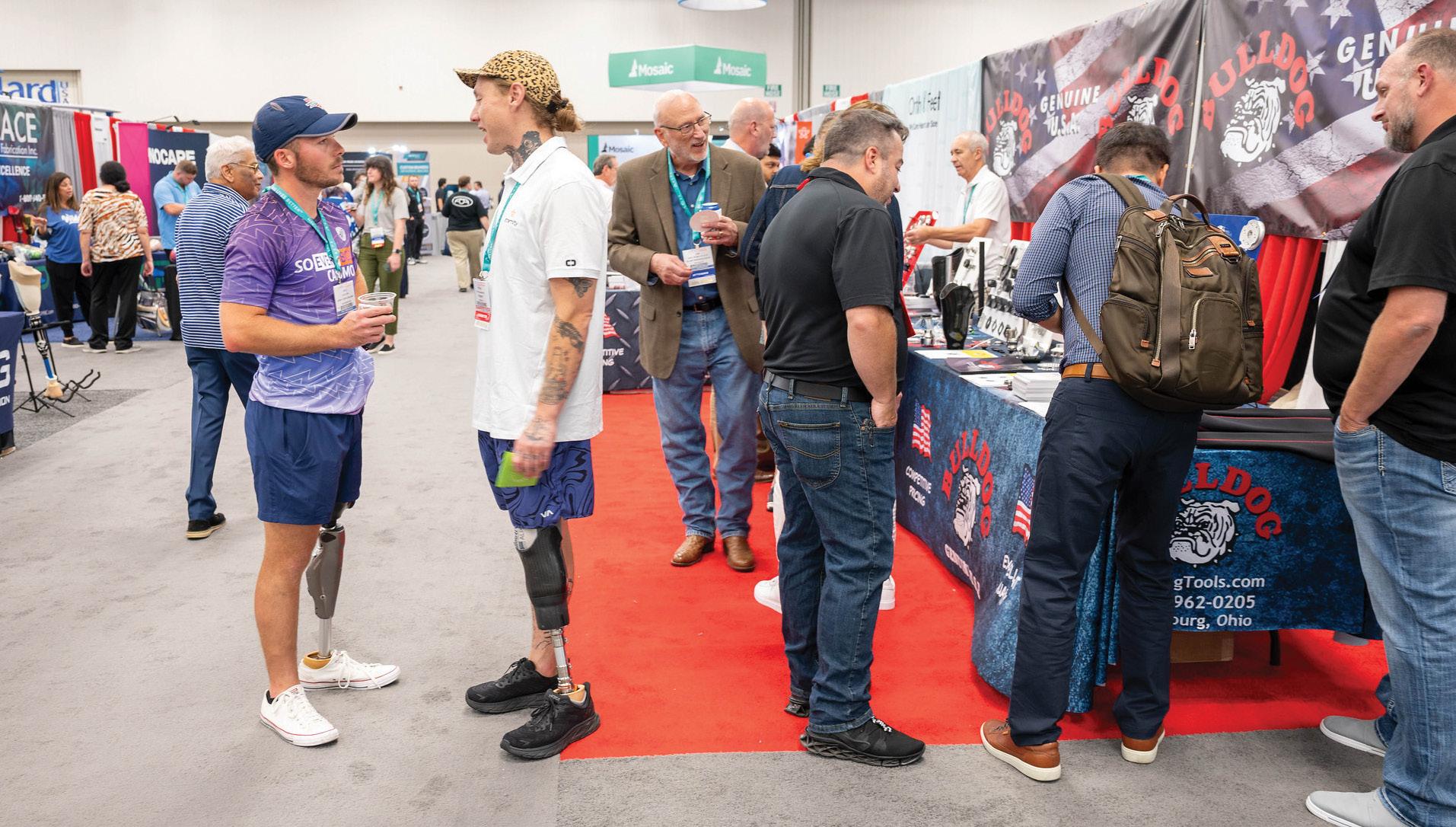
KISS Technologies LLC Booth: 819 kiss-suspension.com
Koalaa Booth: 445 yourkoalaa.com
LaunchPad O&P Booth: 606 launchpad-op.com
n LeoShape by Leopoly Booth: 741 leopoly.com/leoshape
n Levitate Sport Booth: 212 letslevitate.com
Life-Like Laboratory Booth: 538 lifelikelab.com
Lindhe Xtend Inc Booth: 732 lindhextend.com
Martin Bionics Booth: 600 martinbionics.com
n Materialise Booth: 841 materialisemotion.com
medi USA Booth: 938 mediusa.com
Mile High Orthotics Lab Booth: 940 mholabs.com
Monetek LLC Booth: 227 monetek.com
MOZN Solutions LLC Booth: 700 moznsolutions.com
Myomo Booth: 401 myomo.com
n NC O&P Professionals Booth: 839 ncaaop.com
NCOPE Booth: 328 ncope.org
New Step Orthotic Lab Inc. Booth: 922 newsteporthotics.com
n New Vision Orthotics and Prosthetics Booth: 214 newvisionop.com
NuTech Synergies LLC Booth: 202 nutechsyn.com
Nymbl Systems Booth: 816 nymblsystems.com
O and P Booth: 309 oandp.com.mx
O&P Almanac Booth: 1106 aopanet.org
O&P Insight Booth: 626 oandpinsight.com
Onesource—Bionic Booth: 415 bionicpo.com
OP Solutions Booth: 416 opsolutions.us
OPIE Booth: 908 opiesoftware.com
Orfit Industries America Booth: 410 orfit.com
n Ormosys U.S. Corp. Booth: 447 ormosys.com
n Ortheco Prosthetics Booth: 315 orthecousa.com
OrthoFeet Inc. Booth: 514 orthofeet.shoes
Orthomerica Products Inc. Booth: 1036 orthomerica.com
OrthoPediatrics Specialty Bracing Booth: 1038 opsb.com
Home of the original flexible clamshell side -specific anatomic RRD
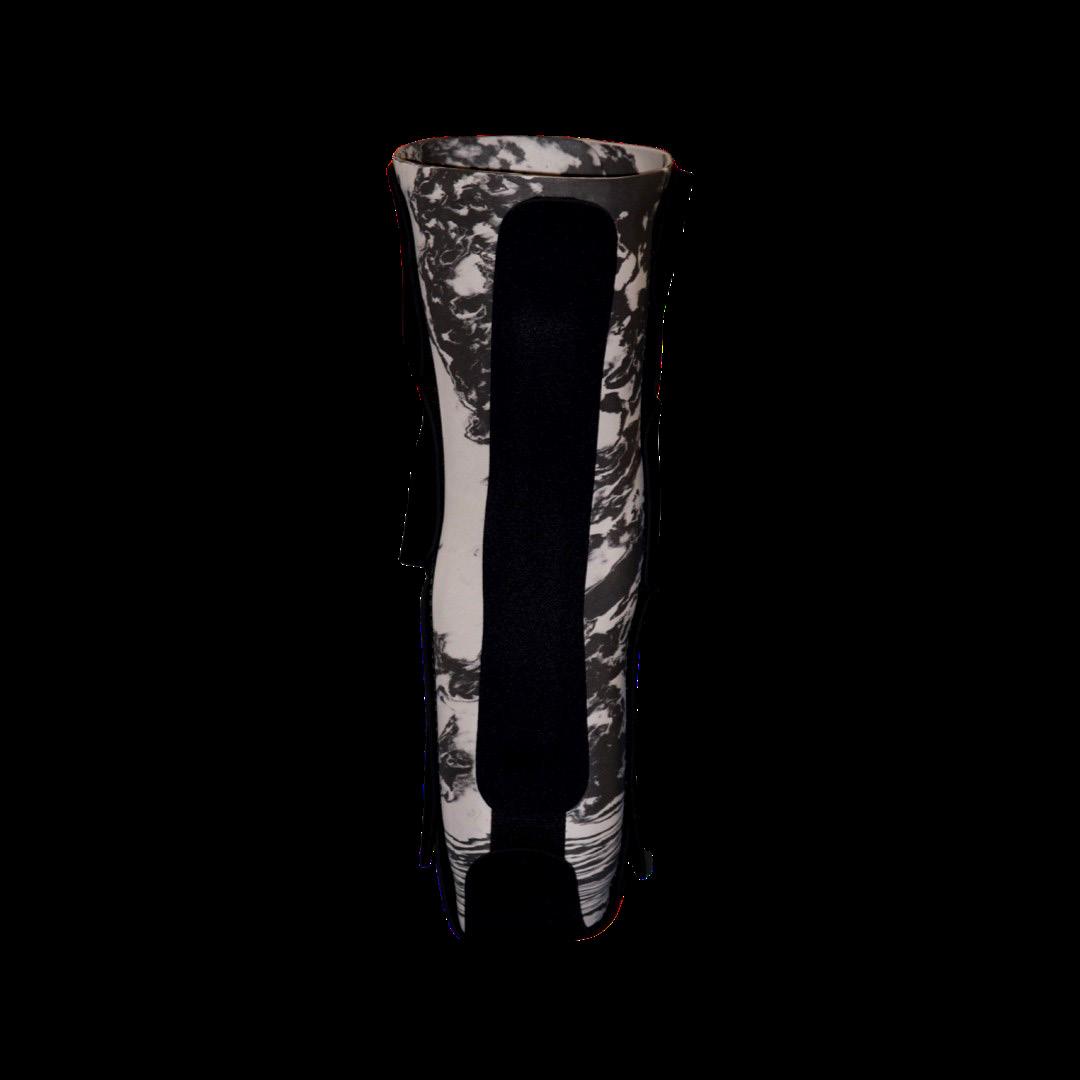


Softie Guard the Incision Area From Micro Tears
The SOFTIE™ is constructed of firm but flexible Pelite, and comes with an anatomicallycorrect posterior strut, Velcro® compatible neoprene bands and a set of distal pads.
An economical alternative prefabricated prosthetic socket
Soft, non-constricting, easy to remove for wound concerns.

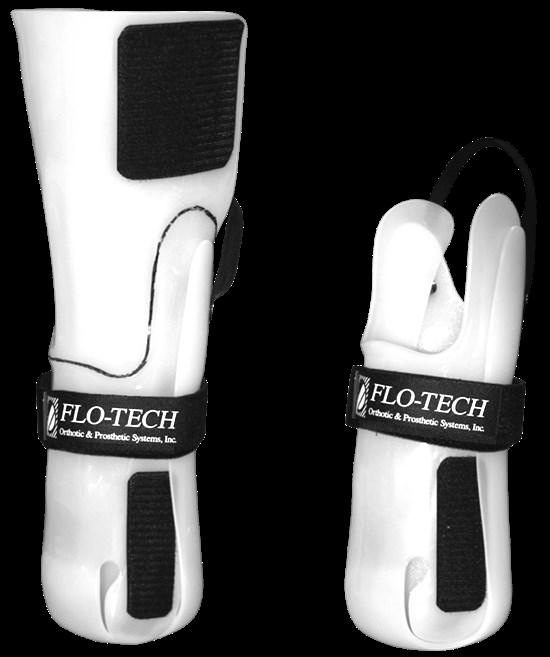

TransTibial
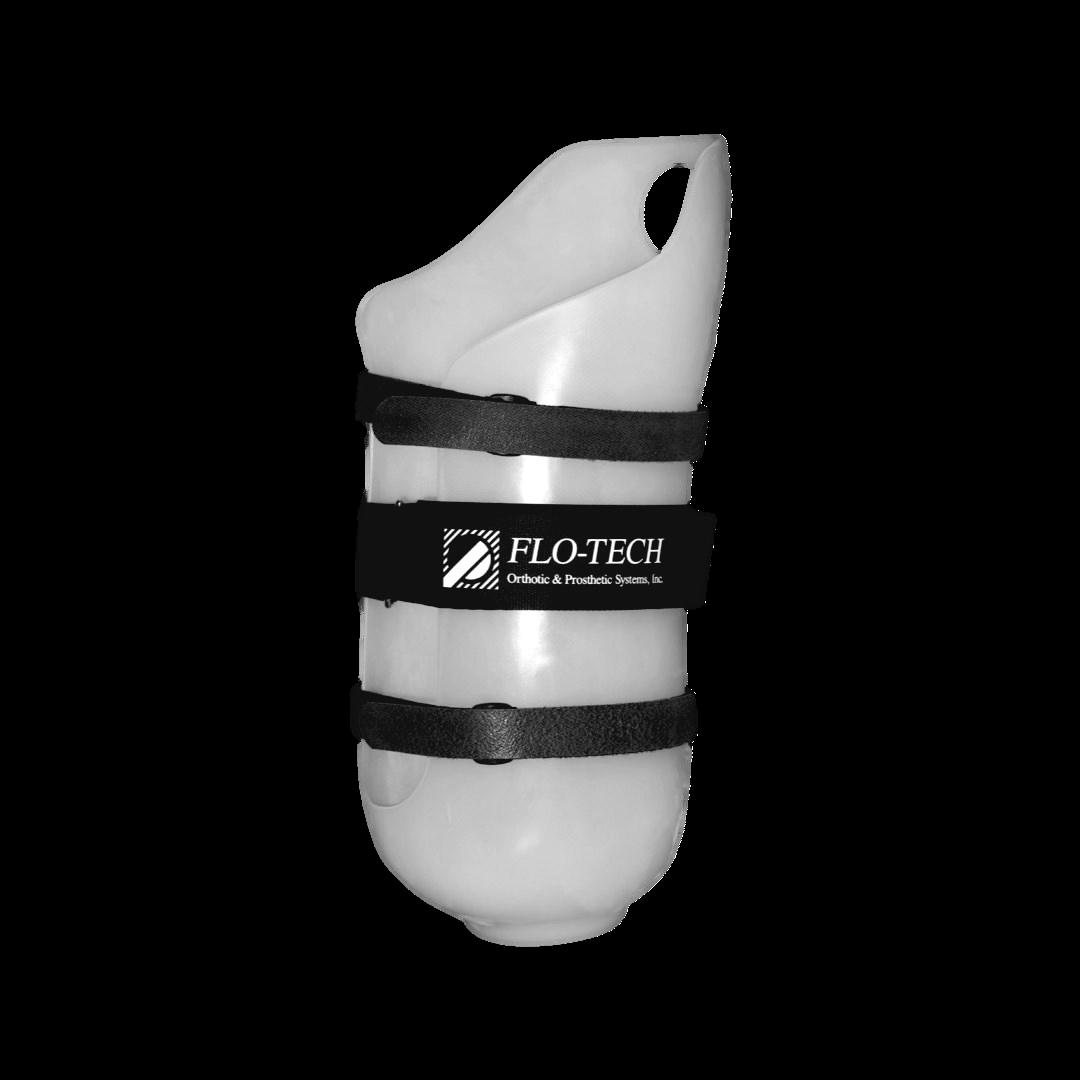
Adjustable Post-Op Preparatory Prosthetic System
This three-part post-operative preparatory prosthetic system allows the Prosthetist to provide a continuum of care, from the time of amputation, through early weight bearing, until the patient is ambulating independently.
All three sockets are part of a system that takes patients from post-op to definitive prosthesis.
TransFemoral
Adjustable Post-Op Preparatory Prosthetic System
Minimizes the effects of potential injury during both early and preparatory stages of rehabilitation. Adjustable, accommodates for compression and swelling. Permits measured and controlled weight bearing, through early ambulation.
From immediate post-op through preparatory prosthetic needs.



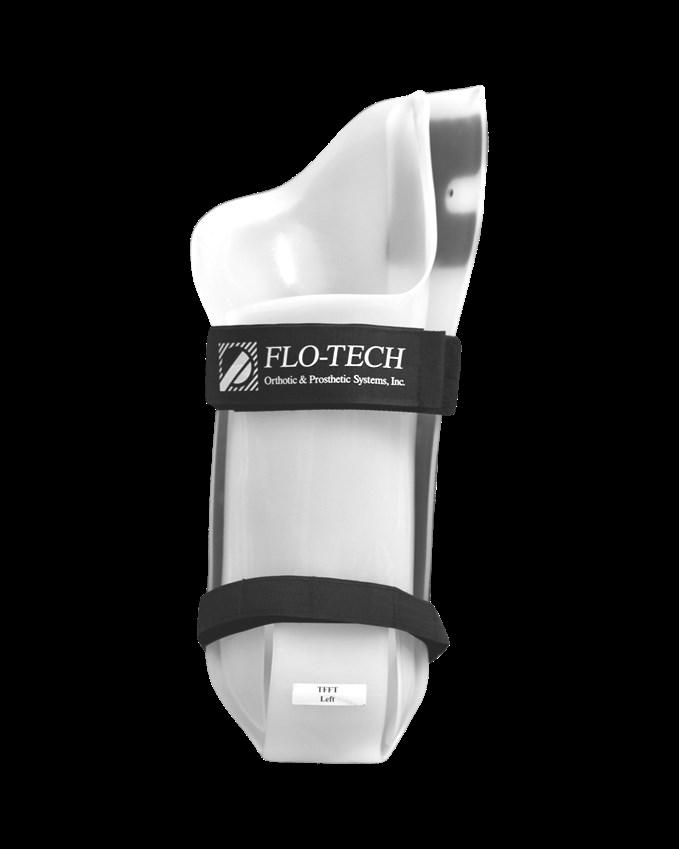


Orthotic & Prosthetic Group of America (OPGA) Booth: 810 vgm.com/communities/opga
Orthotic Holdings OHI Booth: 1119 ohi.net

Össur Americas Inc. Booth: 302 ossur.com/en-us
Ottobock Healthcare Booth: 500, 502 ottobock.com/en-us/home
Paceline Inc. Booth: 838 paceline.com
n Paromed US, LP Booth: 420 paromed.de/en
PEL LLC Booth: 1030 pelsupply.com
Point Designs Booth: 505 pointdesigns.com
n Pro Armour Booth: 300 pro-armour.com
Pro-Tech Orthopedics Booth: 1026 protech-intl.com
PROTEOR Booth: 926, 927 us.proteor.com
Protosthetics
Booth: 523 protosthetics.com
Prudential Billing & Consulting Booth: 331 prudentialbilling.org
PSYONIC Inc. Booth: 521 psyonic.io
PVA Med Booth: 941 pvamed.net
Qwadra Booth: 708 qwadra.com
Radii Devices Ltd. Booth: 640 radiidevices.com
n Rapid Liquid Print Booth: 228 rapidliquidprint.co
Renia GmbH Booth: 1121 renia.com
n RND Softech Booth: 419 rndsoftech.net
Roboticom Booth: 433 roboticom.us
n Saphenus Medical Technology Booth: 200 phantompainfree.com
n Sensor Medica Corp. Booth: 636 sensormedica.us
SHINING 3D Technology Inc. Booth: 615 shining3d.com
n SnugFit Solutions Booth: 516 snugfitsolutions.com
n Solvedge Inc. Booth: 428 solvedge.com
Spentys Booth: 643 spentys.com

Spinal Technology LLC Booth: 702 spinaltech.com
SPRINGER AKTIV AG Booth: 842 springer.one
SPS Booth: 1114 spsco.com
ST&G USA Corp. Booth: 832 stngco.com


This custom body-driven prosthesis is designed for individuals with amputation at the middle of the distal phalanx. The PIPDriver restores length, replaces a missing DIP joint, and protects sensitive residua.

Designed for partial-thumb amputations, the ThumbDriver includes a unique anchor design that follows the wearer's CMC motion, offering a strong structure to handle the powerful forces during opposition.
Custom designed for amputations through the proximal phalanx, the MCPDriver restores the middle and distal phalanges. It provides grip stability and excels at restoring pinch, key, hook, and cylindrical grasps.
A passive, positionable prosthesis designed for amputations proximal to the MCP joint of digits two through five. It is intended for use in conjunction with a custom socket fitted by a certified prosthetist.

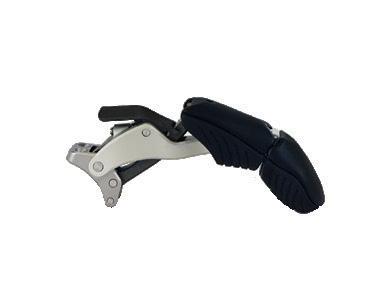
SteeperUSA Booth: 610 steeperusa.com
n STIL Booth: 222 stilorthosis.com
Structure Booth: 434 structure.io
n Superfeet Rx Booth: 303 superfeet.com/rx
Surestep Booth: 802 surestep.net
Tamarack HTI Booth: 822 tamarackhti.com
The International Institute of Orthotics and Prosthetics (IIOP) Booth: 1120 iiofoandp.org
n The Orthotics and Prosthetics Foundation for Education and Research Booth: 231 oandpfoundation.org/home
Thermo-Ply Inc. Booth: 630 thermoplygel.com
Thrive Orthopedics Booth: 519 thriveorthopedics.com
Thuasne USA/Townsend Design Booth: 826 thuasneusa.com
Tianjin Tairuibosi Medical Appliance Co. Ltd. Booth: 311 trbsorthosis.com
Tillges Technologies Booth: 421 teamtillges.com/technologies
Turbomed Orthotics Inc. Booth: 422 turbomedorthotics.com
US ISPO Booth: 439 usispo.org
WillowWood Global Booth: 1018 willowwood.com
n Wrymark DBA Resource Labs Booth: 844 wrymark.com







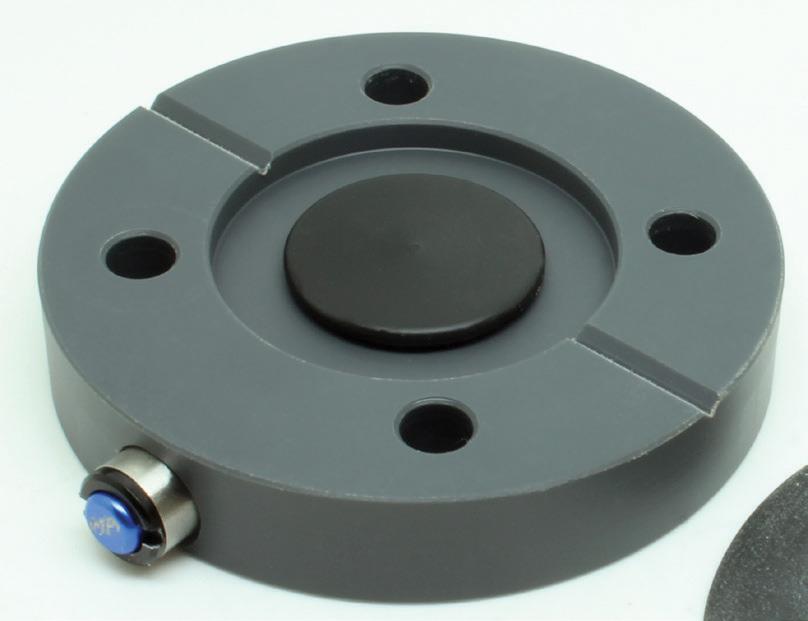
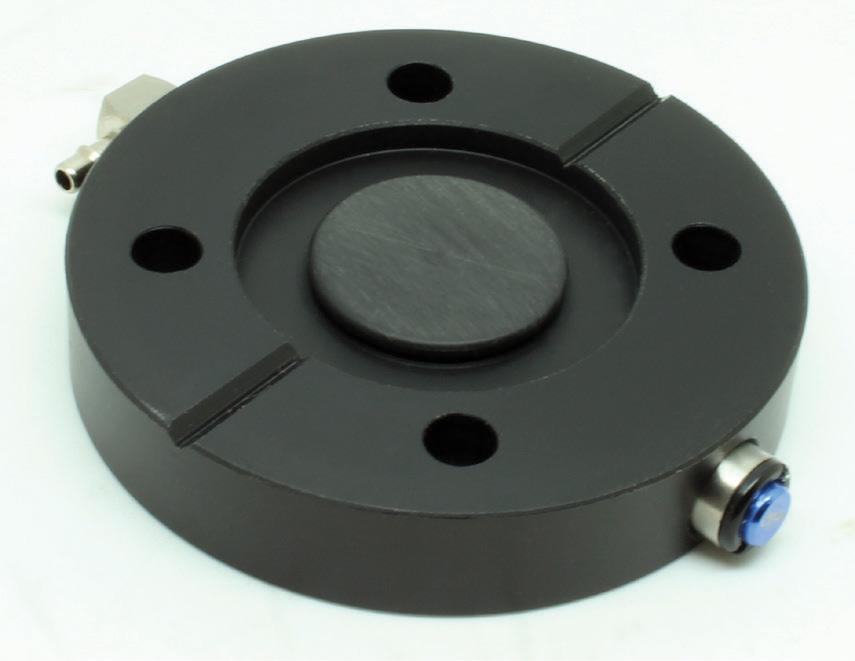





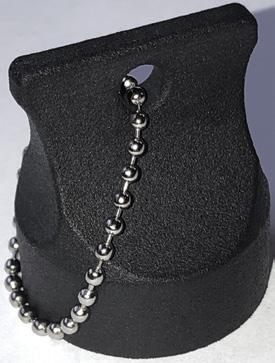
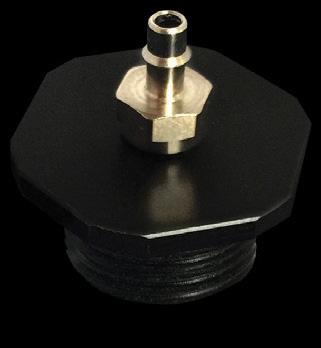



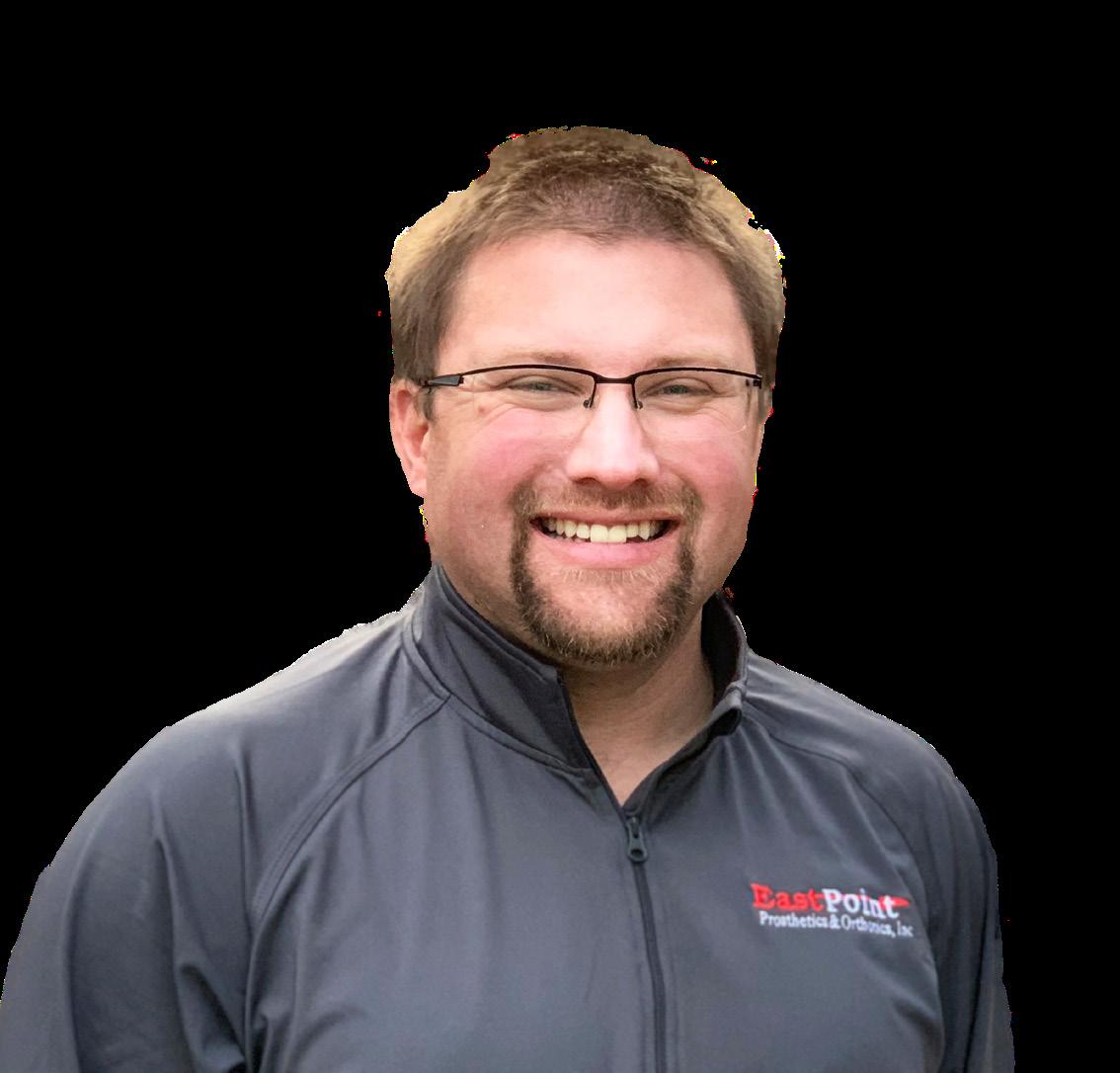
O&P clinician embraces the 3D-printing movement and hosts an international podcast
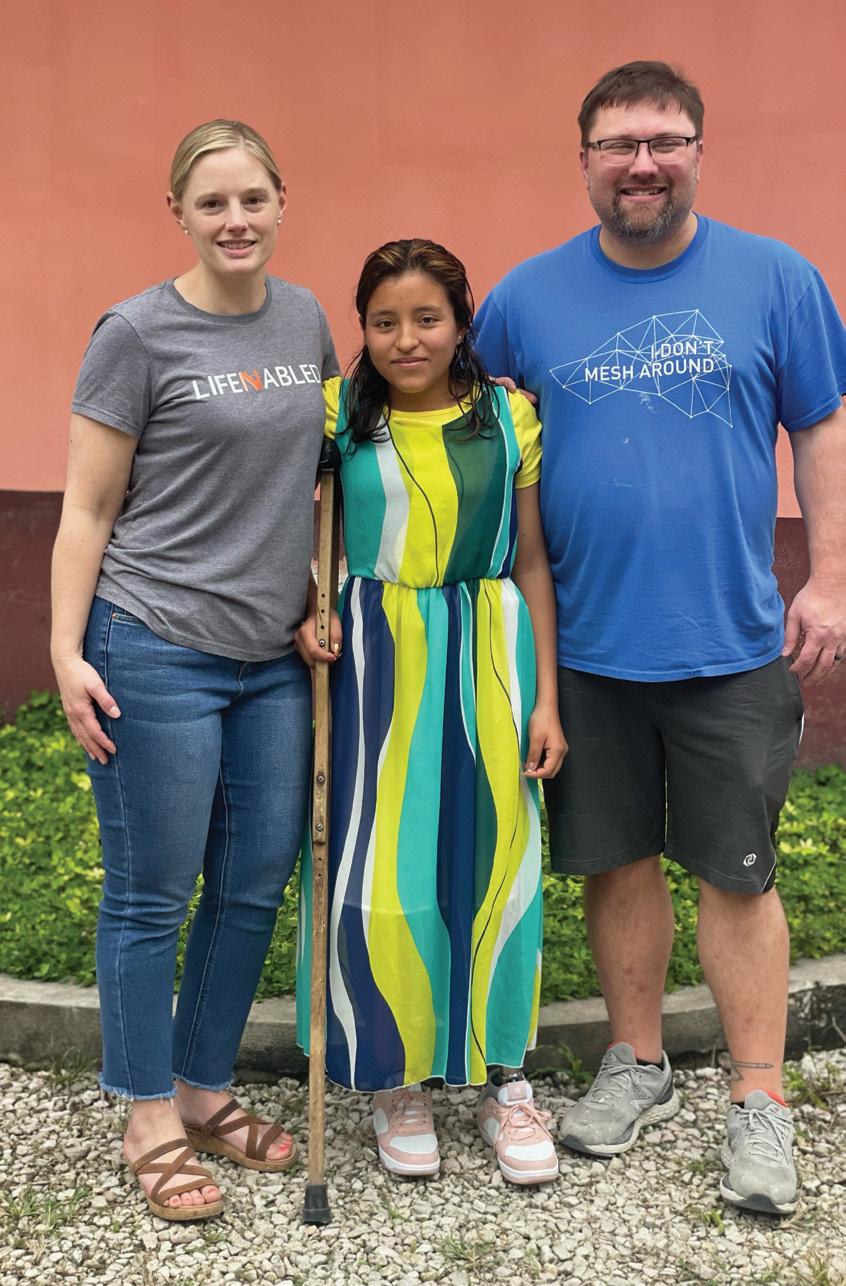
The Fresh Faces column introduces readers to prominent O&P professionals who are making an impact with their contributions to the orthotics and prosthetics profession. This month, we speak with Brent Wright, CP, BOCO.
Brent Wright, CP, BOCO, has been in the O&P field since age 16, when he took a job as a part-time technician. After earning a bachelor’s degree in healthcare management from Appalachian State University, he completed the O&P program at California State University–Dominguez Hills in 2004. He worked various clinical jobs, eventually taking a position at EastPoint Prosthetics & Orthotics when the facility first opened in 2011—and he’s been there ever since. Wright’s commitment to the profession doesn’t stop with his clinical duties. He regularly tests and leverages new technologies and has become an expert in 3D printing. A few years ago, he launched Advanced 3D, a contract manufacturer of 3D-printed devices. In addition, he co-hosts The Orthotics and Prosthetics Podcast, which offers a deep dive into 3D printing
and additive manufacturing. Wright has taken on multiple volunteer roles, including co-chairing the Digital Track at this year’s AOPA National Assembly and serving as clinical director of LifeNabled, a nonprofit that specializes in manufacturing low-cost and high-quality prostheses primarily for individuals with limb loss in Guatemala and developing nations.
O&P Almanac: What brought you to a career in O&P?
Brent Wright, CP, BOCO: When I was in second grade, a friend of the family owned an O&P facility, and our class took a tour of the facility. During that visit, I knew what I wanted to do. Also, it’s a combination of what my mom and dad do well: My dad is an engineer, and my mom is an occupational therapist.
O&P Almanac: What are your responsibilities as a clinician at EastPoint Prosthetics & Orthotics?
Wright: My responsibilities have evolved over the years. I was employee No. 3, and now we have more than 50 employees. My role currently is to try to keep things rolling as smoothly as possible, and to pitch in and help if we have a clinician out or if someone has a question or needs an extra set of hands.
The thing I enjoy most about my role is watching younger clinicians excel, and watching lightbulbs go off in their heads when they’re treating patients—seeing them become excellent clinicians is the best part of my job.
O&P Almanac: Tell us about your work with the LifeNabled organization?
Wright: At LifeNabled, which I helped launch back in 2006, our goal is to enable innovative technologies, train teams of others, and serve the world and those less fortunate. I love to take people to our clinic in the northern part of Guatemala and make prostheses for kids. It’s great to learn and teach others how to make very basic, yet high-tech, prostheses that work for a specific environment—like the jungle of Guatemala.
We do a lot with pelite-style liners. For transfemorals, we do a lot with Silesian belts and sock fits—things that you don’t necessarily see in the United States. But you see that they work, and work well.
We also are able to work alongside other nonprofit organizations and help them see how they can implement 3D printing.
O&P Almanac: When and why did you start a 3D-printing company?
Wright: 3D printing has been a part of what I have done in the nonprofit realm since roughly 2015. [In my role at LifeNabled, it became clear that we needed someone
who] knew the clinical side of things and the manufacturing side of things. It’s unusual to have somebody, or some company, that does both of those well—so we started Advanced 3D. We wanted to be a place where people could bounce ideas off of us or ask if their design was appropriate for 3D printing.
At Advanced 3D, we meet people wherever they are in their digital journey— whether they’ve never scanned before, or they’re using more basic 3D printing in their practice and now want to advance to 3D printing definitive sockets.
We focus on workflow and how to get to a definitive socket. We believe in clinicians making clinical decisions, such as modifications of their molds or shapes, and the fitting side of things. We believe that if clinicians are good communicators, the fabrication of the socket should be just an extension of their communication—that’s where we want to come into play.
O&P Almanac:
Why do you think 3D printing is a “game changer” for O&P?
Wright: 3D printing allows you to create a device that you’ve never been able to create via traditional fabrication, in a consistent manner—multidurometer stuff, sockets, very complex upper-extremity prostheses, adjustable prostheses. All those heavily technical, difficult-to-fabricate devices are now still technical but much easier to produce with 3D printing, with a professional-looking finish.
The other part is, there isn’t as much interest on the technical side of making a prosthesis. You don’t see a lot of clinicians wanting to do laminations or work with carbon fiber. Safety is truly becoming a concern, as many of the chemicals and fabrics we’ve used in the past [are being recognized as potentially] detrimental to your health. In contrast, some of the 3D printing, in an appropriate environment, is not harmful to people’s health.
Lastly, 3D printing works while you’re asleep! If you have the designs and you put them on the printer, they can print overnight

with a long-time transfemoral pediatric patient
without needing to be hands-on. I think that can be very important.
I think everything will be moved to 3D printing. For those that don’t think “3D printing first,” I believe it will be a true disadvantage because patients will have better outcomes with this technology, combined with good clinical care.
O&P Almanac: What is the coolest O&P device you’ve made via 3D printing?
Wright: A friend of mine in Atlanta who is also a prosthetist, Shane Grubbs, CPO, LPO, FAAOP, asked if I could make an exercise arm for a transhumeral patient. It needed to be lightweight, have a locking mechanism, and have an adjustable-click medical system, and the joints needed to be built in as well for the transfemoral side of the prosthesis. We ended up designing it together, and the patient is doing extremely well. She is able to do push-ups and rowing, and the device has lasted for several years.

O&P Almanac: When and why did you start The Orthotics and Prosthetics Podcast?
Wright: The Orthotics and Prosthetics Podcast was started on a whim. A friend of mine, Joris Peels, is a 3D-printing expert but doesn’t know a lot about the O&P field, and he wanted to know more about what we do. There are a lot of things he likes about how 3D printing is making a difference in O&P patients’ lives.
We started the podcast in 2022, and now—more than two years later—we’re about to record our 100th podcast, and it’s something we’re very excited about. We have learned so much, but we think other people have learned from us, too—the podcast has gone worldwide. Only 57% of listeners are in the United States, and we’ve had listeners in 94 different countries.

We cover all kinds of topics, but mostly it revolves around people’s journey into the O&P field, and then we dive into their specific niche. There are some things [said by guests on the podcast] that I don’t necessarily agree with, and Joris doesn’t necessarily agree with—but we try to take a positive outlook and learn from each person. We believe that it’s important to have a discourse that is friendly, and we can agree to disagree.
O&P Almanac: We hear you may record your podcast at the upcoming Assembly?
Wright: I’m really looking forward to this! We want to talk to the leaders in AOPA and talk to some people about coding, and some of the clinical [changes], as well as new technologies. I want to introduce Joris to the O&P field at the show—I think that will be great!
O&P Almanac: What role are you playing at the 2024 AOPA National Assembly?
Wright: I am part of the Assembly Planning Committee for the Digital Track and assist in putting together and reading presentations and figuring out some of the
scheduling. This was really my first foray into understanding how difficult the show is to put on and schedule!
O&P Almanac: What are the biggest challenges and opportunities for the future of O&P?
Wright: One of the biggest challenges is getting people into the profession. We’ve seen [changes in education]—losing a school, gaining a school. We need to have some consistent education that also caters to some of the new technologies so people [graduate from] the schools prepared to have great patient outcomes.
But there also are opportunities. While reimbursement and insurance are difficult to work with in O&P, [the current system] poses an opportunity in the sense that we are gaining reimbursement, but we’re also gaining the ability to build things in the robotic realm—upper extremity and lower extremity. I think there’s going to be a lot of opportunity for that.
And some of the opportunity for 3D printing comes in when considering how to lower O&P material costs or costs of goods for devices. 3D printing may help reduce costs.
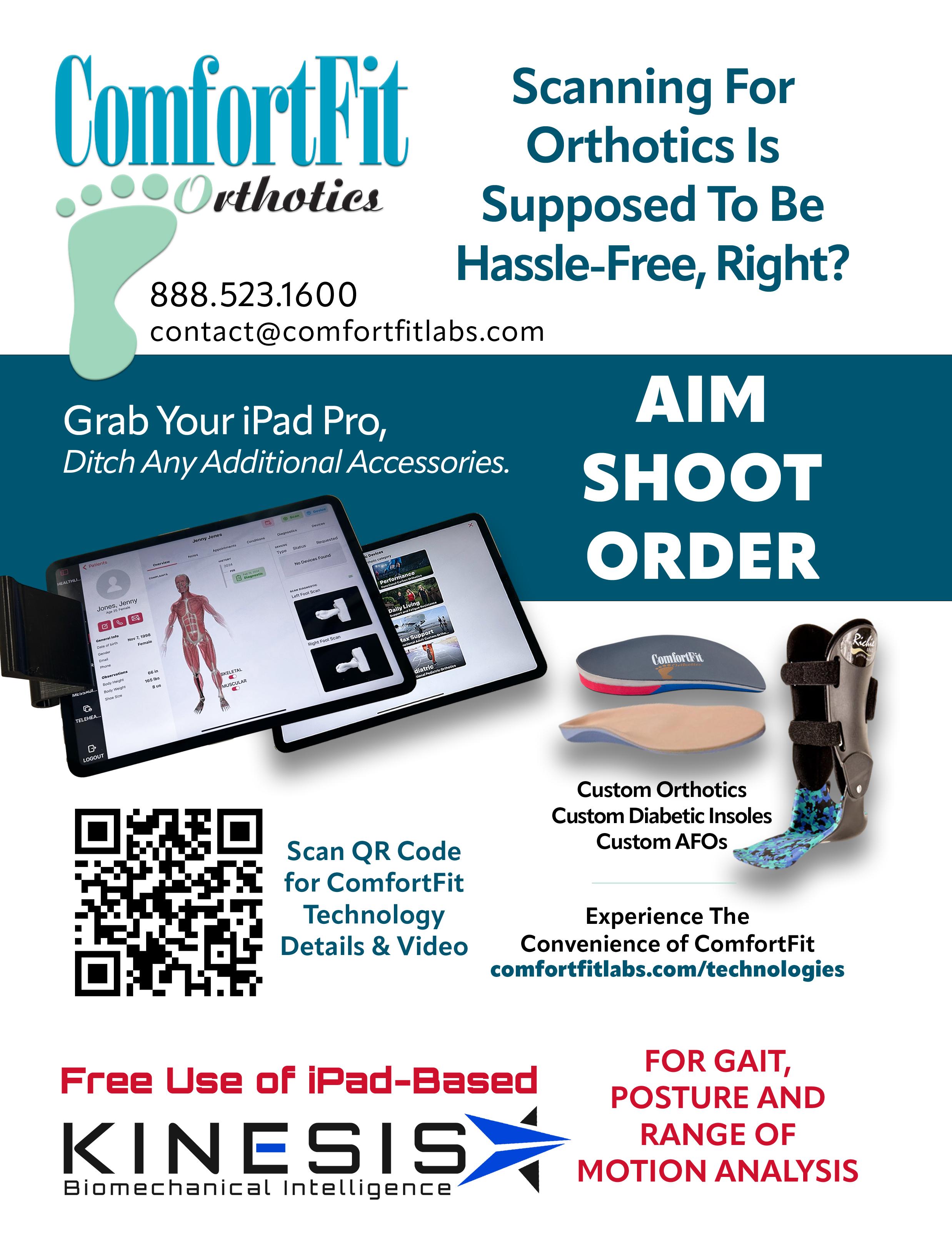
FACILITY:
Ortheco Prosthetics
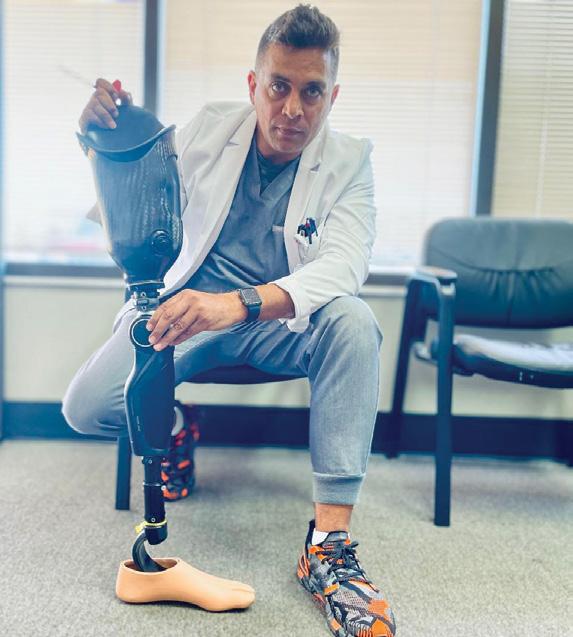
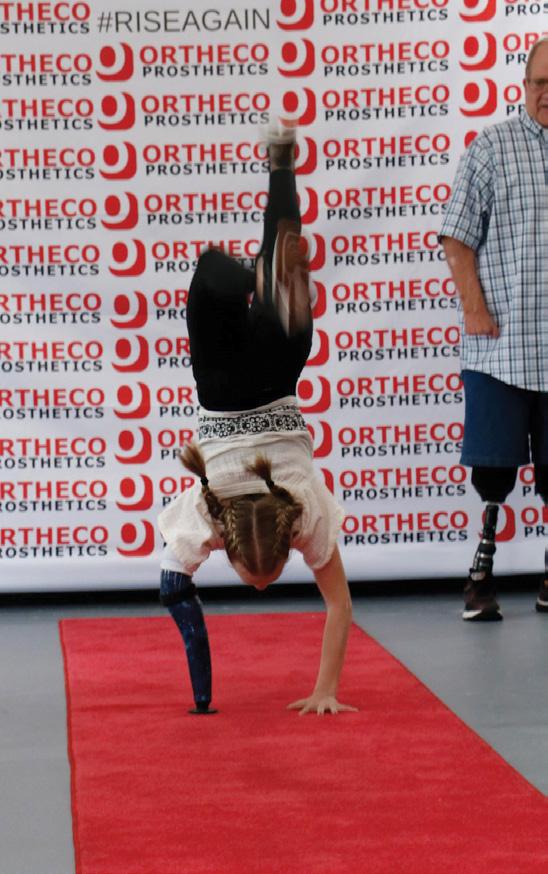
with limb loss.
Why Am I an AOPA Member?
“In addition to its excellent educational programs, AOPA is the premier venue for industry professionals to exchange ideas and technology. We attend conferences to build relationships and connect with colleagues who might be doing things better or more cost effectively.”
—Romel Bhanti, CP
OWNER: Romel Bhanti, CP
LOCATION:
St. Louis and Cape Girardeau, Missouri, and Springfield, Illinois
HISTORY: Five years
Certified prosthetist Romel Bhanti’s journey into the world of prosthetics was significantly influenced by his father, Vinod. Vinod Bhanti, a recognized prosthetist and orthotist, founded Ortheco Prosthetics & Orthotics in 1974 in India. “My dad is pretty well known,” says Bhanti. “He has been very active in the International Society for Prosthetics and Orthotics and did a lot of work with polio victims through the United Nations.”
Bhanti feels a natural affinity for the field. “When my son comes over and swings on the parallel bars, it reminds me of doing the same thing” as a child in India, he reflects. His father, now almost 80, continues to practice in India under the same Ortheco name.
Bhanti moved to the United States in 2003 and has since accumulated 20 years of experience as a prosthetist. His career began at Hanger, where he received extensive training, before moving to Comprehensive Orthotics & Prosthetics. In 2019, Bhanti opened his own practice in St. Louis, conveniently close to his children in Springfield, Illinois. Despite the challenges posed by the COVID-19 pandemic, he adapted by offering home visits, which kept his practice afloat.
Today, Ortheco Prosthetics has six employees, and Bhanti remains the sole practitioner—keeping the practice intentionally small because “I want to be able to spend time with my patients.” The practice has expanded to three offices, with the latest in Springfield, and an upcoming location in Chicago. Bhanti plans to hire another clinician to concentrate on the Illinois branches.
Ortheco primarily serves adults, as the local Shriners Hospital caters to pediatric patients. Specializing in both upper- and lower-extremity prosthetics, Bhanti uses advanced components, including bionic hands and power knees. “My practice started differently without referral sources,” he notes. “I had a good name online, and most of my patients came to me after unsuccessful experiences elsewhere. I am committed to finding solutions and won’t stop until I do.”
Last year, Tom Schmidt, CTP, an experienced O&P technician, joined Ortheco, leading to the

establishment of an on-site fabrication lab. “This was very good for us,” Bhanti says. The Chicago office will feature an even larger fabrication facility.
Although Bhanti embraces technology, he remains cautious about 3D scanning and printing. “I can make my own socket in the time it takes to print one, and I feel like I have more control,” he explains. “I like to obsess over different parts of the socket, because once it’s right, that’s 99% of the battle.”
Ortheco’s collaborative approach sets it apart, according to Bhanti. “We work on cases as a team,” he emphasizes, “pushing the agenda with insurance companies and focusing on patient success. That is our biggest goal.”
One of his most memorable patient success stories involves a young woman with a hip disarticulation who had stopped wearing her prosthesis for a decade. “She had kids and wanted to try again. We got her up and walking, and she’s even considering going back to work,” Bhanti recounts.
Ortheco hosted a fashion show for individuals with limb loss in June, featuring food, drinks, awards, and red carpet walks. The highlight was a gymnastics demonstration by an 11-year-old girl with a belowelbow amputation.
Looking ahead, Ortheco is launching Ortheco Labs, a central fabrication service, at the 2024 AOPA Assembly. Says Bhanti, “We will be able to make sockets for other practices with the same precision and attention to detail we use for our own.”
Deborah Conn is a contributing writer to O&P Almanac. Reach her at deborahconn@verizon.net
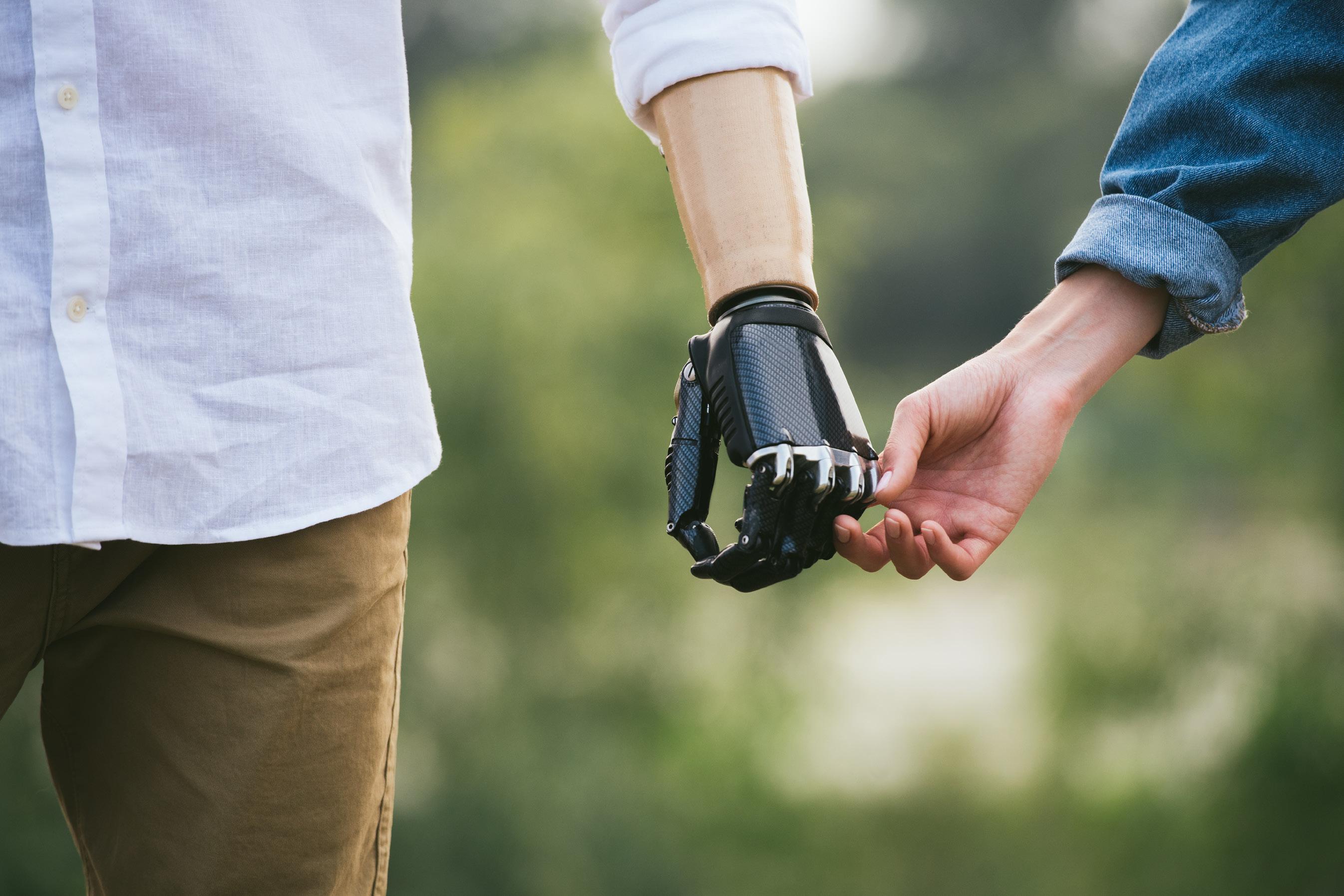
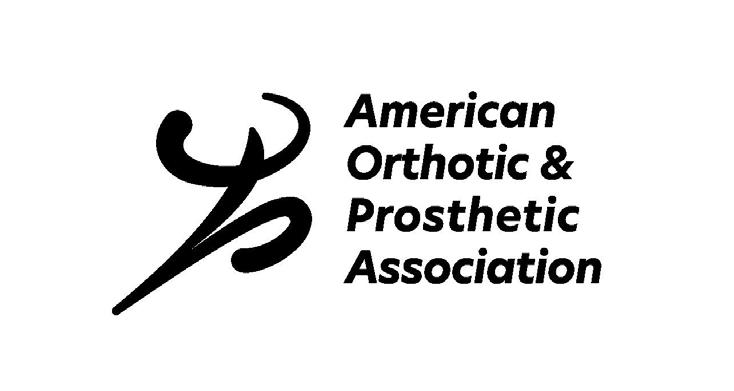
BY DEBORAH CONN
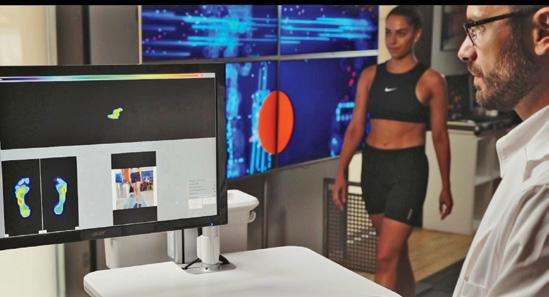



SWhy Am I an AOPA Member?
“We belong to AOPA as a Startup Supplier because it helps us stay connected to industry advances, participate in professional development opportunities, and collaborate with other leaders in the field.”
—Trista Vossman
HISTORY: 14 years
ensor Medica develops and produces noninvasive diagnostic devices for biomechanical analysis, including diagnostic devices for analyzing posture, movement, and biomechanics. Based near Rome in Guidonia Montecelio, Italy, the Sensor Medica Group has hundreds of employees and collaborators, including engineers, researchers, and healthcare specialists.
The company’s main products include the Freemed Baropodometric Platform, a line of devices to analyze the distribution of plantar pressure during walking and running. “The platforms can capture more than 400 frames per second to generate a detailed analysis of the gait line and oscillations of the body’s center of gravity,” notes Trista Vossman, sales manager of the U.S. office. “They also generate automatic reports based on normal values from scientific studies.”
The platforms use Sensor Medica’s proprietary FreeStep software, which can control different devices for biomechanical analysis and store all of the information in a unified database.
Spine 3D uses light detection and ranging—or LiDAR—technology to create a noninvasive 3D scan of the spine. “Because this technology is noninvasive and doesn’t use radiation, clinicians can safely conduct repeated posture analysis,” Vossman says. The device offers such clinical parameters as posture analysis, scoliosis analysis, spinal deformities, and rotation of the vertebrae and pelvic position.
Sensor Medica’s insole products include a software program for designing custom orthopedic insoles, a CNC milling machine to manufacture them, and the Easysnap3D, a fused filament manufacturing 3D printer that creates insoles using data from the software program.
Sensor Medica’s clients include not only O&P clinicians, but also medical professionals, physiotherapists, sports scientists, and researchers. The company’s products are used in clinics, hospitals, sports facilities, and research institutions in more than 70 countries, according to Vossman. “Our products allow O&P patient-care facilities to improve their diagnostic capabilities and treatment outcomes.”
The company’s marketing efforts to O&P facilities are three-pronged. Sales representatives reach out directly to clinics and take part in industry events and trade shows. Sensor Medica also produces webinars, whitepapers, and case studies to inform clinicians about the benefits and applications of their products.
The company offers personalized training and support to O&P facilities, both in person and remotely. “The sessions focus on using the product, interpreting results, and troubleshooting,” says Vossman. “We offer training through online platforms like Meet, Teams, and Showtime.”
Most of the organization’s charitable programs are focused in Italy, where the company donates funds and resources to support healthcare facilities and initiatives through the Progetti Del Cuore Foundation. It also supports an association of sign language interpreters, making wellness and health events accessible to the deaf population of Rome.
Another outreach program features collaborations with Italian universities on research projects, including those focusing on artificial intelligence and its application in Spine 3D technology. Another collaboration involves studies exploring biomechanical principles and their relevance to Sensor Medica’s products, such as Freemed and Moover Gait Device.
At the highly technical company, Sensor Medica staff look forward to specific advances in O&P technology that will inform the company’s products. “We expect the continued integration of artificial intelligence algorithms to enhance the capabilities and accuracy of diagnostic devices,” says Vossman. “Advancements in biomechanics will enable us to improve the precision and effectiveness of our products, and we look forward to the development of technologies that allow for greater customization and personalization of orthotic and prosthetic solutions, so they can be tailored to the unique needs of individual patients.
“By using cutting-edge innovations and placing patients first,” Vossman adds, “we aim to set new standards in medical diagnostics and patient care.”
Deborah Conn is a contributing writer to O&P Almanac. Reach her at deborahconn@verizon.net
Are you ready to take your career and your business expertise to new heights?
The Certificate in O&P Business Management can help you do just that!














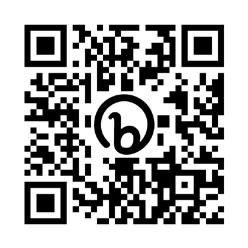

This joint certificate program will provide you with:
• Basic business acumen
• Practical knowledge to apply immediately to your work
• Techniques for developing better business practices
• How to think about improving your company’s returns
A comprehensive certificate program for business owners, managers, and practitioners of O&P patient care facilities, O&P manufacturers and distributors to explore crucial business challenges as they relate to O&P.
To complete the certificate program, you must register and complete one core course and one elective course from each of the four areas of learning within a four-year period


Certificate in O&P Business Management

Virtual: Aug. 19-20
In-Person: Nov. 18-19
Sign up for a 2024 AOPA Coding & Billing Seminar. You’ll learn how to get claims paid, survive audits, collect interest from Medicare, and file successful appeals. Earn CEs!
Visit AOPAversity online at bit.ly/aopaversityquiz for details and to register. For questions regarding seminar content, email Devon Bernard at dbernard@aopanet.org
Attendees have said:
I’ve learned more in the past few days than I’ve learned in the past year.

All practitioners should attend this conference so they can learn to document the correct way and ensure compliance.

AOPA will offer six webinars throughout 2024—in February, April, June (postponed), August, October, and December. Webinars are $99 for members and $199 for nonmembers. All webinars are live, but everyone who registers will receive access to the recordings. Earn 1.25 CE credits by attending or listening to the recording and returning the provided quiz within 30 days and scoring at least 80%.
Topics from the first three webinars include the following:
• February: “Changes & Updates to Medicare Policies: Do You Still Know the Rules?”
• April: “The Three ‘C’s of O&P”
• June: “Regulatory Hot Topic: Requirements When Treating Patients With Limited English Proficiency”
• August: “Prior Authorization”
To purchase the February, April, or June webinar or register for future sessions, access your AOPA Connection account or visit aopanet.org. Questions? Contact Devon Bernard at dbernard@aopanet.org
The speakers are very knowledgeable and helpful. This is my second time at a seminar and I’m still learning so much.
So Every BODY Can Move (SEBCM) is at the forefront of the national disability rights movement, focusing on creating equitable and life-changing access to prosthetic and orthotic care for physical activity in 28 states by the 2028 Paralympic Games.
SEBCM, developed through a partnership between AOPA, the National Association for the Advancement of Orthotics and Prosthetics, the American Academy of Orthotists and Prosthetists, and the Amputee Coalition, advocates for a policy solution rooted in dignity and justice by empowering state-by-state legislative action, expanding access to medically necessary orthotic and prosthetic care for physical activity.
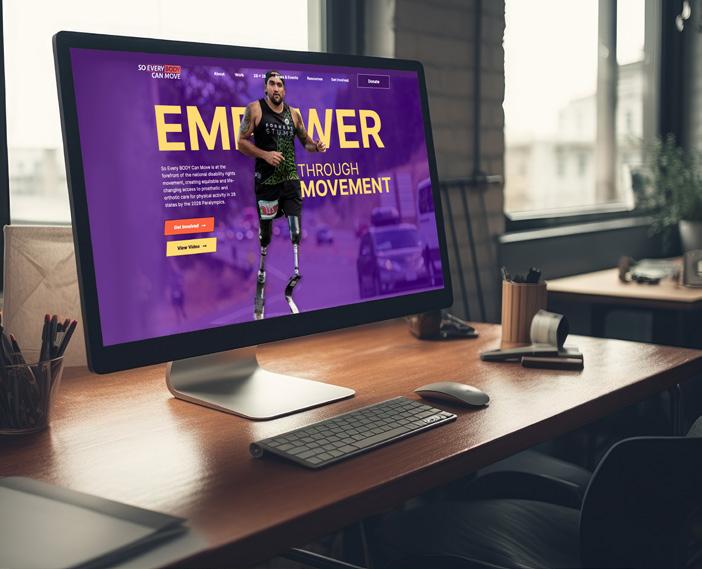
For more information and to get involved, log on to soeverybodycanmove.org, a dynamic platform featuring a user-friendly interface, engaging content, an interactive state map, and much more.
The officers and directors of the American Orthotic & Prosthetic Association (AOPA) are pleased to present these applicants for membership. Each company will become an official member of AOPA if, within 30 days of publication, no objections are made regarding the company’s ability to meet the qualifications and requirements of membership.
Active Mobility LLC
14 Thomas Point Road Brunswick, ME 04011 207-607-4279
Stephen Hamilton, CPO Patient-Care Facility
Bionit Labs Inc.
18 Bridge Street, Ste. 2A Brooklyn, NY 11201
646-833-8090 bionitlabs.com
Giovanni Zappatore Supplier Startup
Choice Prosthetics & Orthotics LLC
2445 Army Navy Drive, St. 301 Arlington, VA 22206 667-210-2149
David Longo, CPO Patient-Care Facility
Choice Prosthetics & Orthotics/dba
Mid-Atlantic Prosthetics & Orthotics 1023 N. Charles Street, Ste. R3N Baltimore, MD 21201 202-842-8425
Ron Longo, COA, CP Patient-Care Facility Affiliate
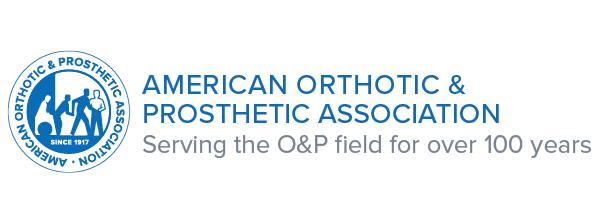
For Job Seekers:
Job searching is easy with the pane-view job search page. Set up job alerts, upload your resume or create an anonymous career profile that leads employers to you.
For Employers:
Reach 4,500+ O&P professionals through the Job Flash™ email. Ensure high visibility for your open positions through this highly engaging email.
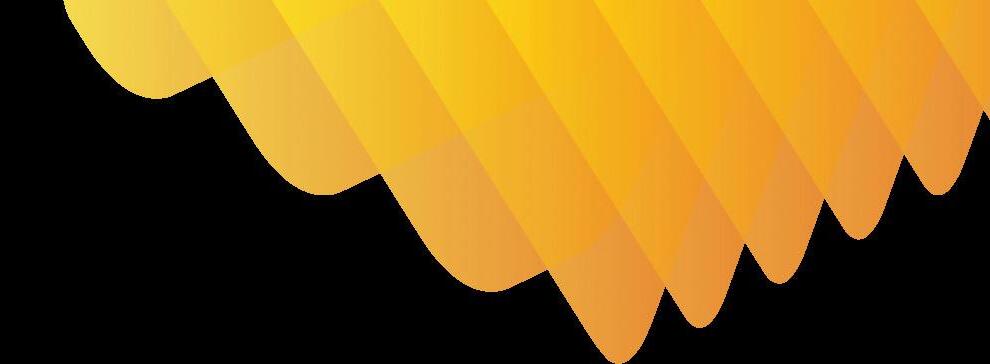
Leopoly Next Inc.
3 E. Third Avenue
San Mateo Clocktower San Mateo 94401, Hungary 06307917159 leopoly.com/leoshape/ Zsofia Mester Supplier Startup
New Vision Orthotics & Prosthetics
2100 Riveredge Pkwy., Ste. 510 Atlanta, GA 30328
678-382-4645 newvisionop.com
Delano Massey Supplier Startup
Ormosys U.S. Corp. 580 Enclave Circle W. Pembroke Pines, FL 33027 954-859-7588
ormosys.com
Fatmir Langmeier Supplier Startup
Rapid Liquid Print Co. 50 Terminal Street, Ste. 2 Charlestown, MA 02129
857-837-1650 rapidliquidprint.co Aviel Tanzer Supplier Startup
SnugFit Solutions
7921 Jones Branch Drive, Ste. 392 Mclean, VA 22102
703-628-1826
snugfitsolutions.com
Steven Yi, PhD Supplier Startup
Finding your next job or hire just got easier with the AOPA Career Center.
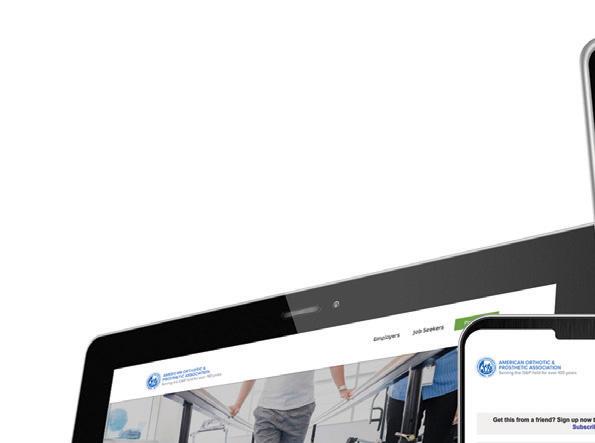
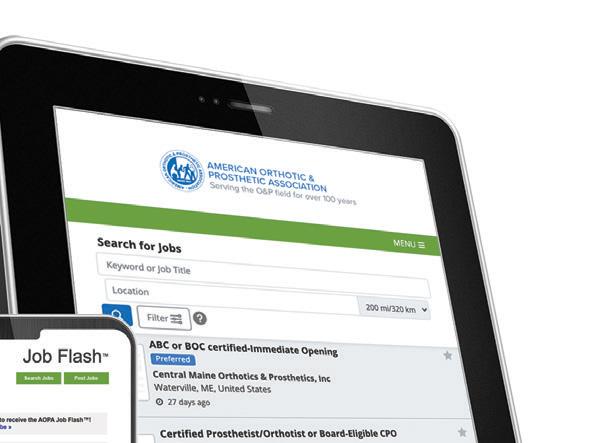
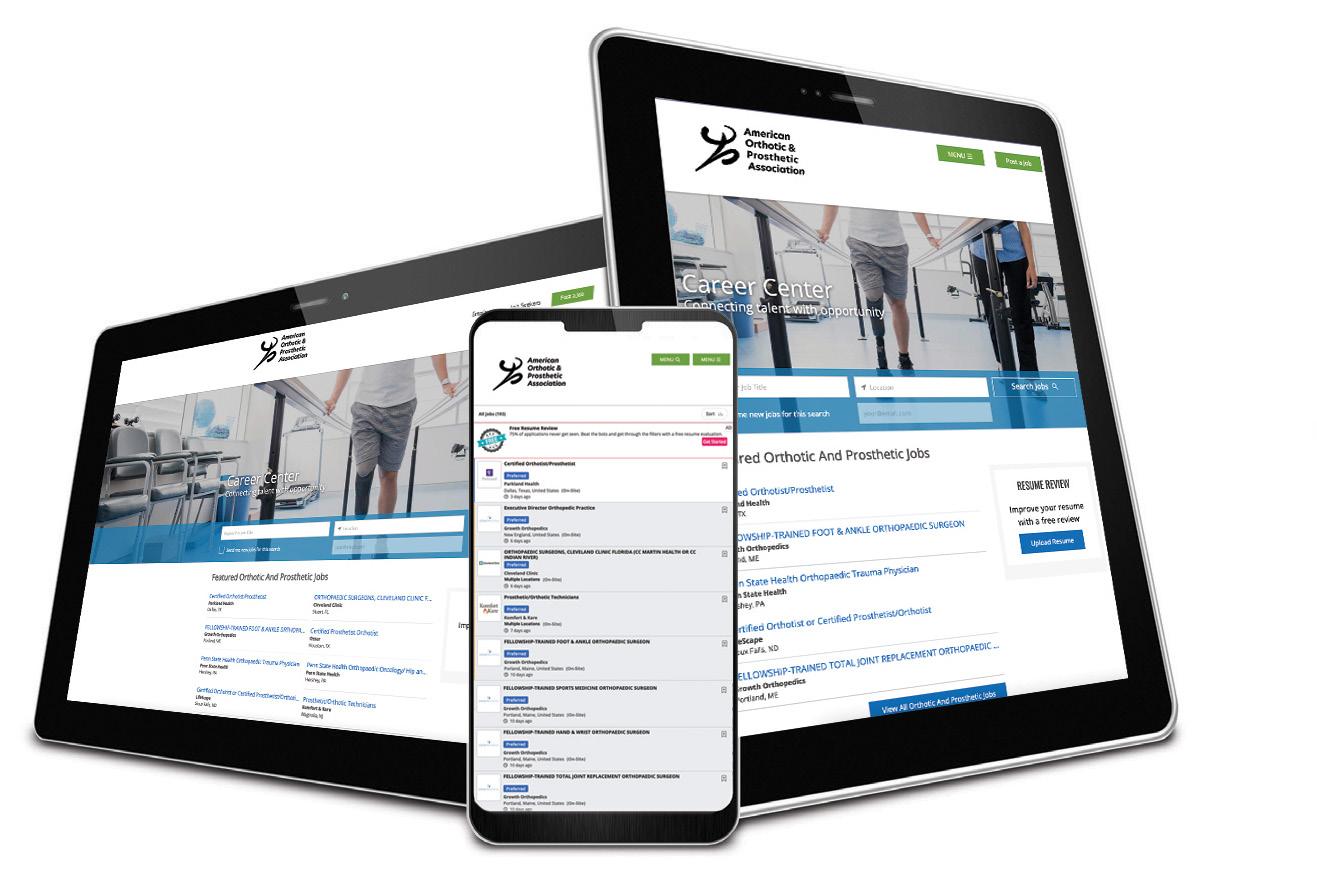
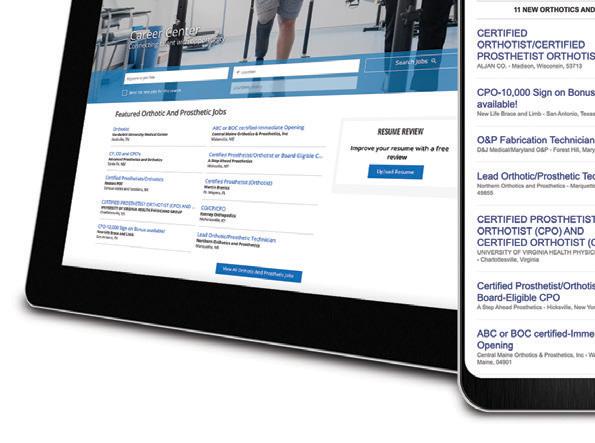


CROSS™ Knee Hyperextension is intended for mild to moderate knee hyperextension due to neuromuscular diseases or other injuries. The orthosis can be used alone or together with any Allard AFO when knee hyper extension is present with foot drop. The CROSS™ Knee Orthosis has a pre-flexed anatomical shape to fit leg contours and be comfortably worn with any Allard AFO.
• Hyperextension resistance easily
• Easy to grasp wide cuff for single-handed
• “Donning Aid” included for users with limited hand
• YouTube video fitting: https://www.youtube.com/watch?v=9jj6V2Dfbuc

Available in size small, medium, large, or extra large.
For more information, contact Customer Service at 888-678-6548 or email info@allardusa.com


Embrace the comfort of custom-fit with Mt Emey®’s Custom Shoe (Medical) Program.
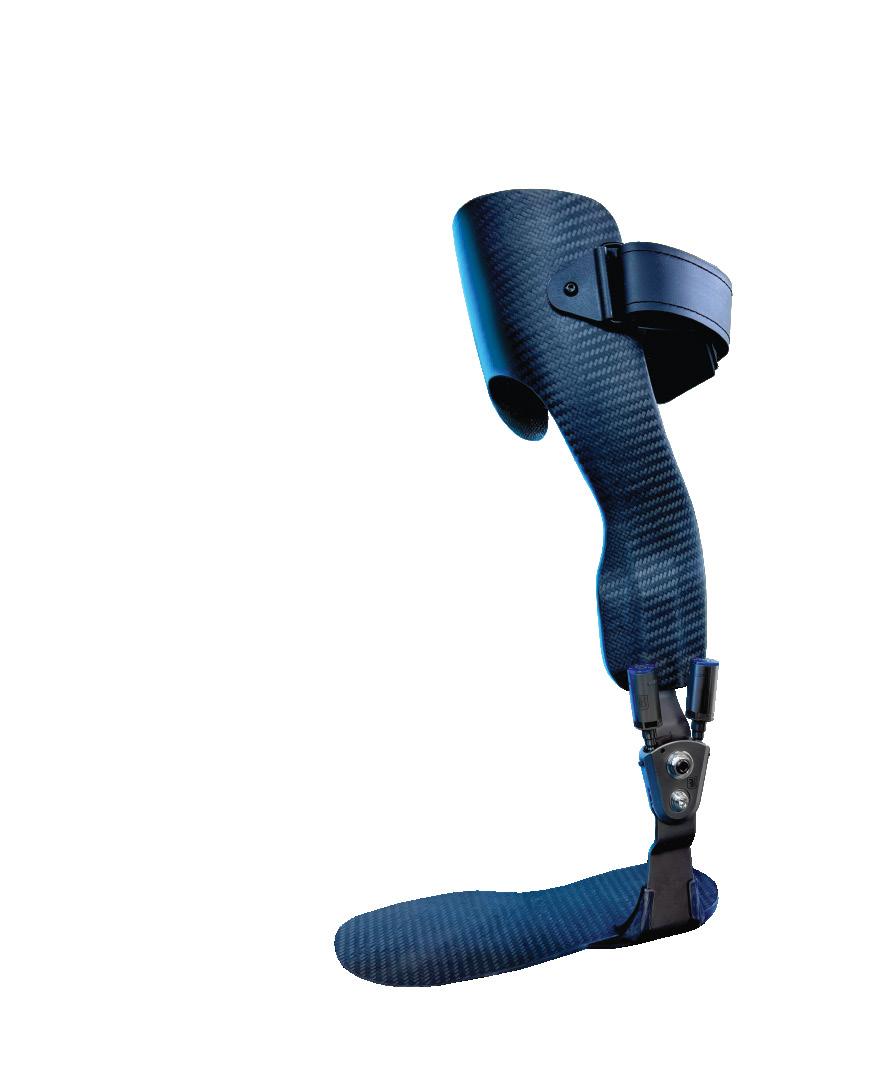
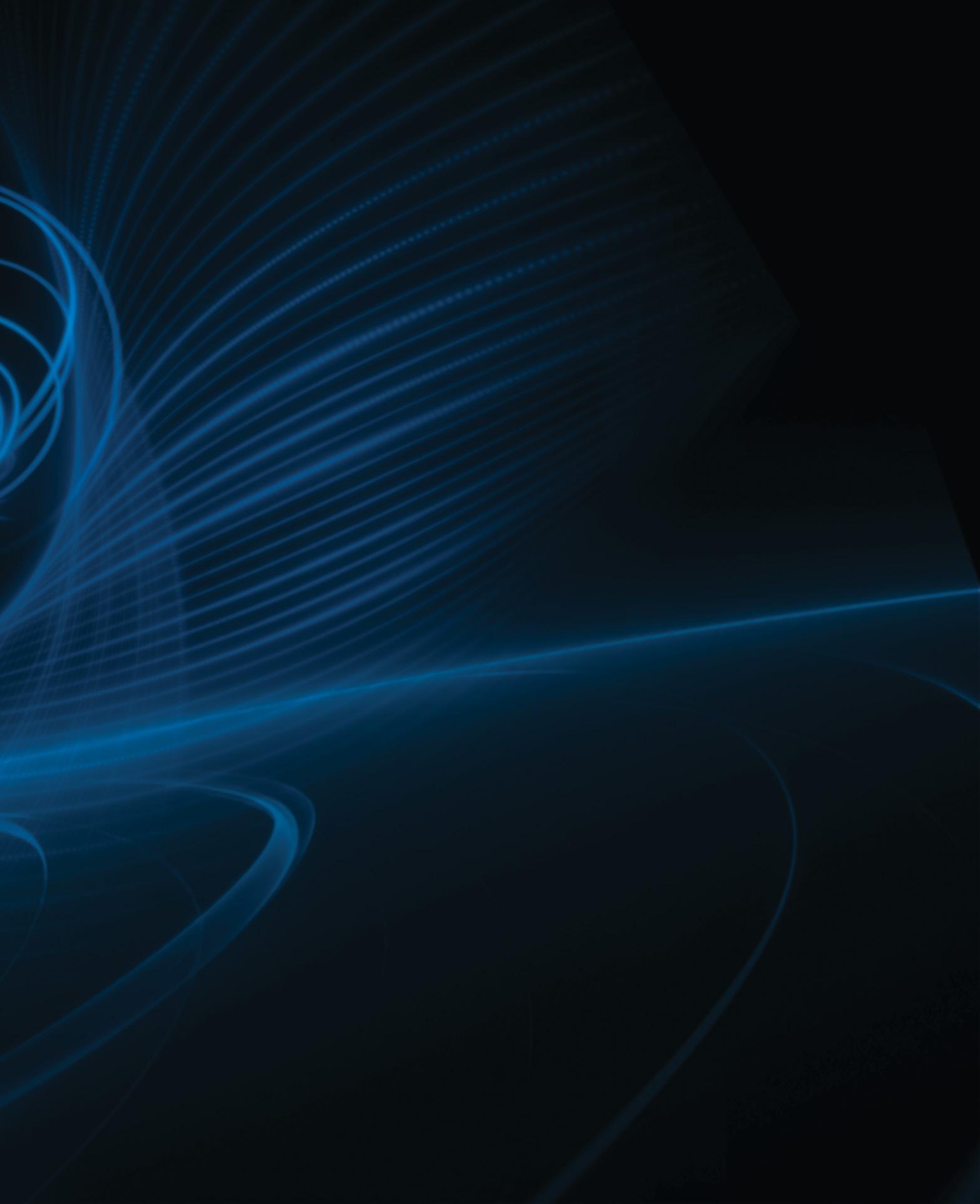

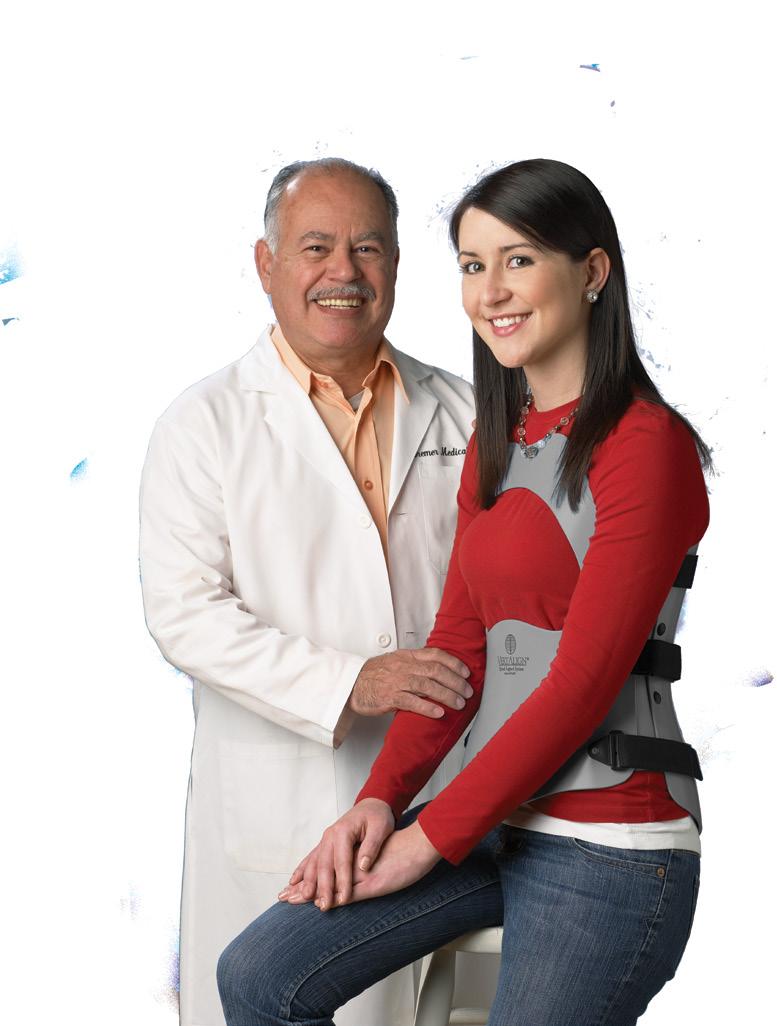

Our precise 3D scanning captures your unique foot contours, promising a perfect fit without the wait or waste. From stylish athletics to roomy comfort designs, our handcrafted shoes adapt to your needs. Satisfaction guaranteed before payment. Plus, qualified wholesale accounts receive a free 3D scanner. Step into the Mt Emey difference— where every shoe is made for you.
For more information, call 1-888-937-2747 or visit emeys.com

The Icon microprocessor knee offers a user-friendly experience for patients and clinicians. Featuring responsive sensors, streamlined setup, and the intuitive Stride Studio app, this dynamic knee was designed to enhance user confidence. Clinicians can easily access all adjustments, custom modes, and more in Stride Studio. Our team has developed proprietary technology to put the Icon in a league of its own—providing remarkable accuracy, response time, and weight savings. Equipped with a long-lasting battery and IP68 rating, the Icon is the versatile solution for low to high activity users. Vist college-park.com
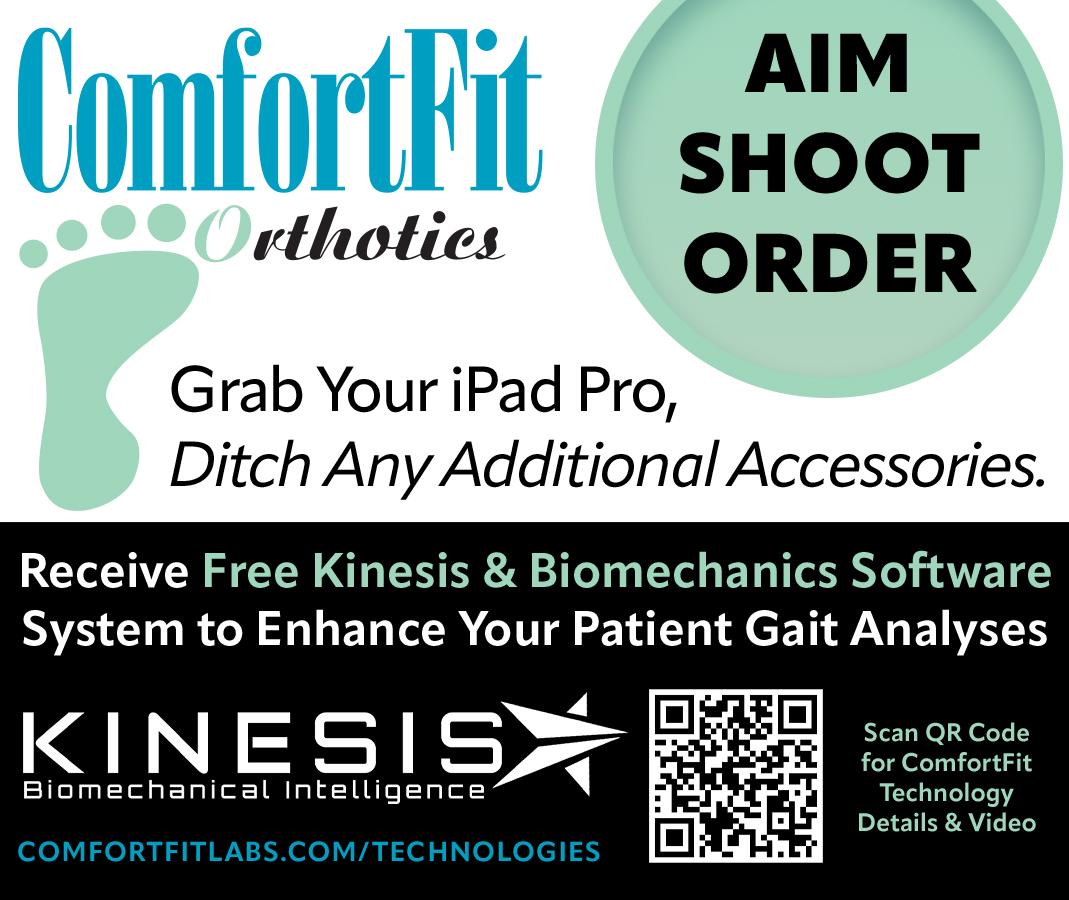

The Drop-In Lock Special. Buy 3 Air-Lock Drop-In locks and get a free Air-Lock Drop-In Fabrication Dummy. It’s a savings of $180.
The New Air-Lock Drop-In is:
• Lighter
• Stronger
• Better seal
• Tighter fit.
Designed as a drop-in lock for 3D printed sockets. With the dummy, it can also be used for laminating and thermoforming sockets. Contact Coyote at 208-429-0026 or visit www.coyote.us

The Cypress 4-Hole Tie-In Plate With Aria Auto-Expulsion Valve insert is a versatile, simple, and reliable system for passive suction suspension for transtibial and transfemoral suction sockets. Its distal mount design offers a streamline, cosmetic option without the bulk of a standard socket-wall mount suction valve. The Aria Auto-Expulsion Valve insert is fully serviceable with replacement parts available if needed.
For more information, contact us at 888-715-8003 or visit cypressadaptive.com
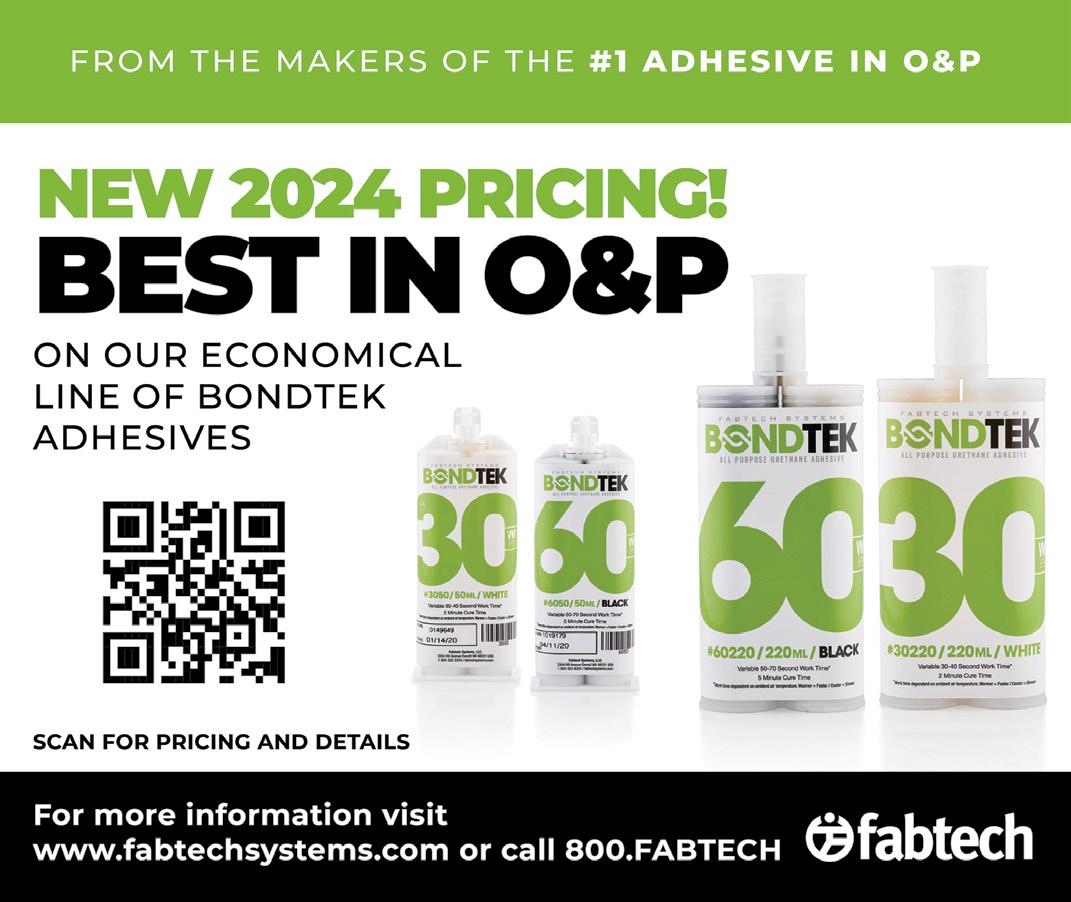


FLO-TECH® has redesigned the FLO-TECH-TOR™ by incorporating trim lines into the forming of the transtibial FLO-TECH-TOR™ to allow modifications to be made for a flexible inner socket to be used with the appropriate Universal Frame Outer Socket (UFOS™) and pylon system, for your patient’s preparatory prosthetic needs. Anatomically side specific, 7” & 9” lengths, soft interface pre-tibial band, dynamic size expansion and reduction, result in effective assimilation of actual limb volume reduction. From immediate post-op through preparatory prosthesis needs.
Visit www.1800flo-tech.com for additional photos, email info@1800flo-tech.com, or call 1-800-356-8324.

Hersco is delighted to offer HP’s advanced 3D-printing technology for custom orthotics. 3D printing has unique design capabilities not possible with other methods—reducing landfill waste by 90%! The accuracy of 3D is unparalleled, specs exceed direct-milled polypro, and manual plaster fabrication. Among the benefits: a 90% reduction in landfill waste, many new design possibilities for posting, and the ability to vary thickness and flexibility across the shell. The PA-11 polymer is a biobased renewable material that has been tested and proven in research and industry. Call today, 800-301-8275, for a free sample.

Live Webinar
September 26, 2024
12 PM ET / 9 AM PT
With Dr. Glenn Gaston and Dr. Bryan Loe er Upper Extremity Novel Muscle Transfer for Independent Digit Control of a Partial Hand Myoelectric Prosthesis: The Star sh Procedure

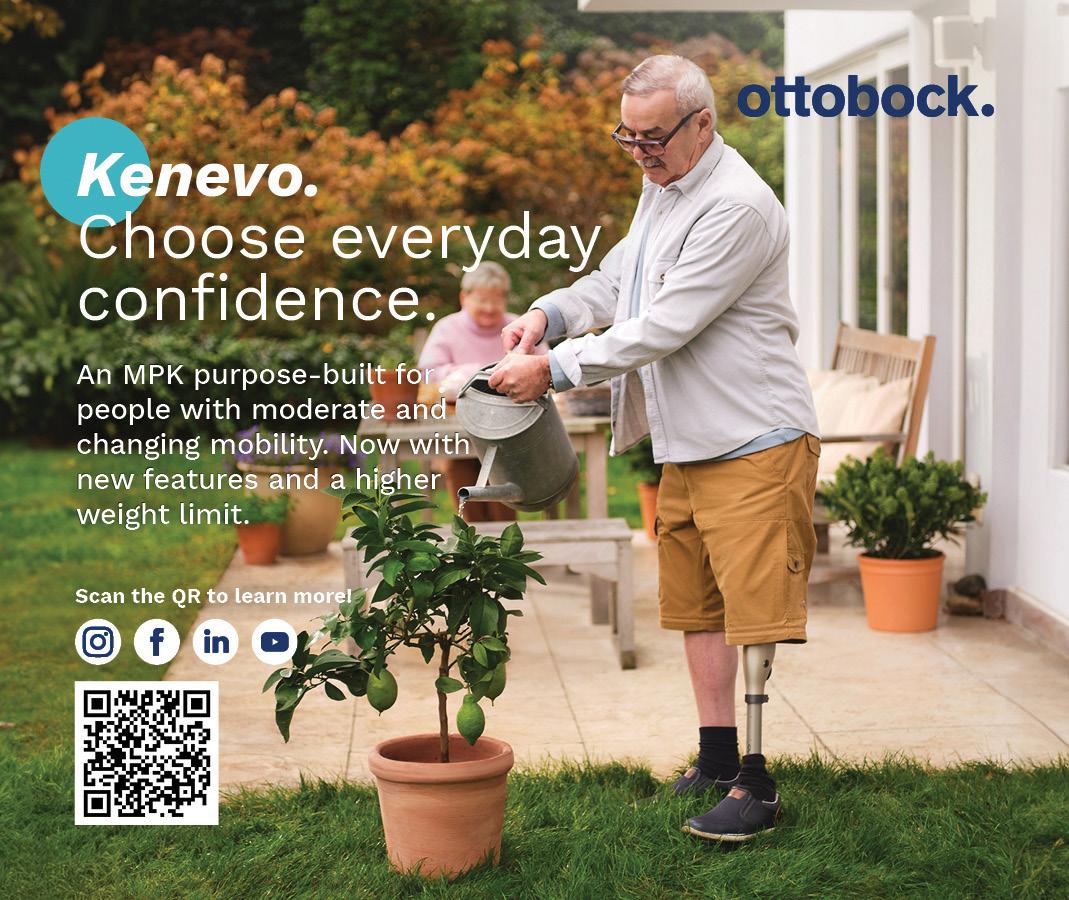


Register
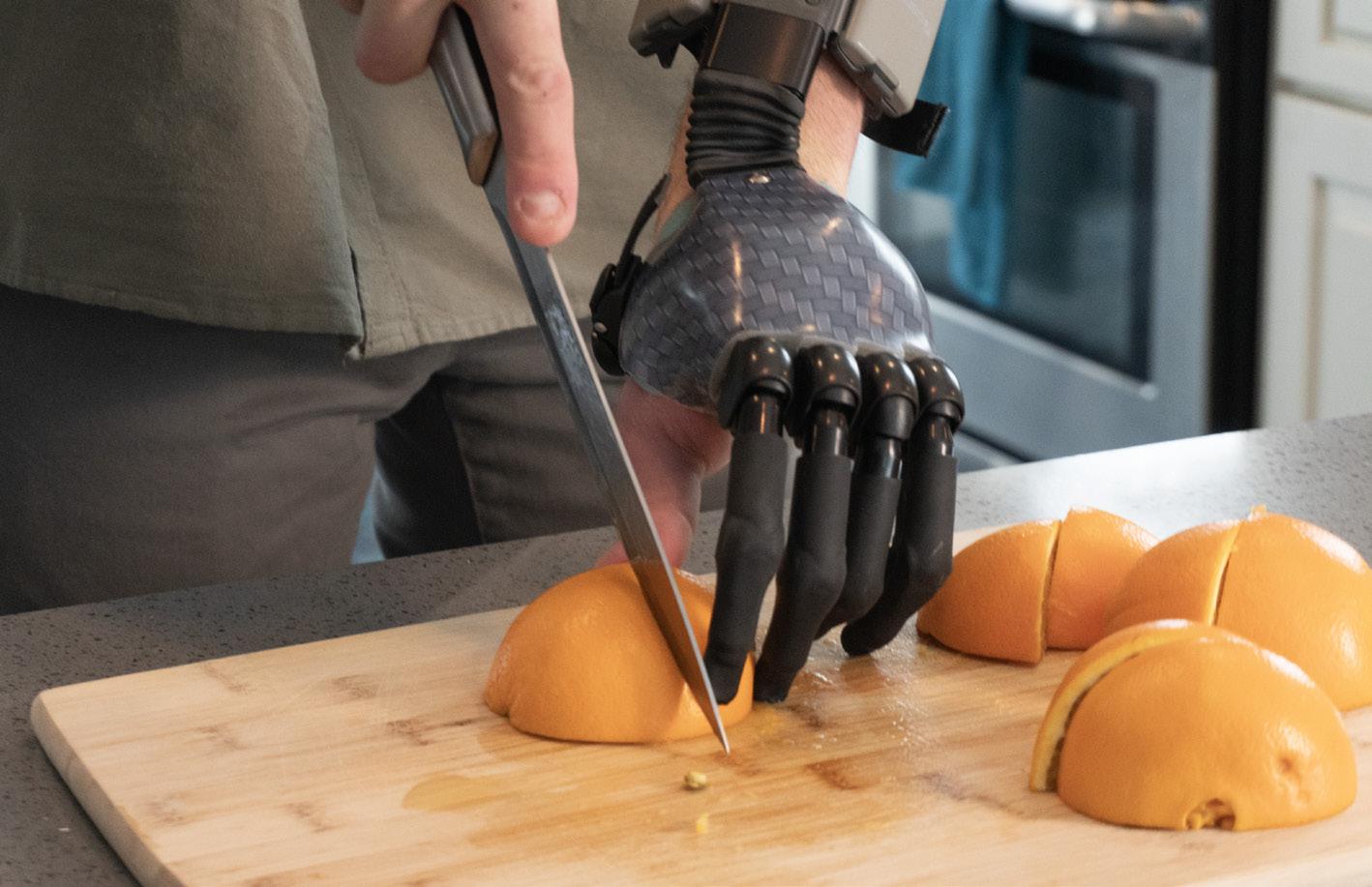
The same elevated vacuum system that amputees already love in the RUSH EVAQ8 Collection by PROTEOR is now available in our carbon fiber feet, providing more choices and greater versatility. The EVAQ8 Collection provides an optimal design with no added build height, high durability rubber that is built to last, and responds automatically to pull vacuum with every step. Try the expanded EVAQ8 Collection by PROTEOR today. More materials, more choices, now more EVAQ8.
For more information, visit us.proteor.com
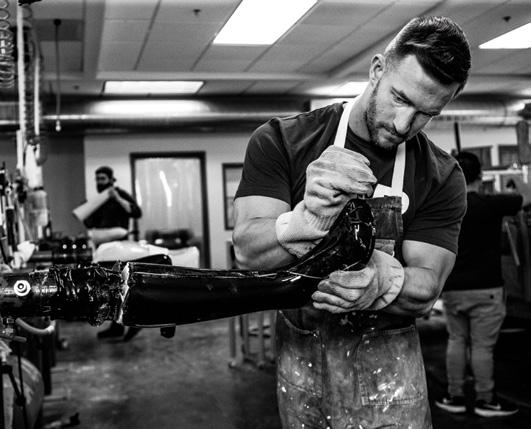

We’re custom fabricators of industry-leading pre-preg braces, but we’re also clinical orthotic and prosthetic practitioners ourselves. That means Tillges Technologies is in a unique position to provide unrivaled care. Our Propulsion line of custom-fabricated, dynamic response orthotic and prosthetic devices are fit and proven on our own patients before we start building them for yours. We’re positive that our dynamic, ultra lightweight, adjustable, and modular designs using cutting-edge carbonfiber materials will provide your patients with the stability, balance, and energy they need in every step. To learn more, visit TeamTillges.com or call us at 1-855-4TILTEC.

Turbomed’s leading line of foot drop ankle-foot orthoses sit completely outside the shoe for an invisible, painless support that will follow you as long and as far as you want. Their unique design acts as an exoskeleton to the impaired limb, keeps the foot at 90 degrees, and provides the user with unparalleled levels of function. Each model takes minutes to assemble and is easily transferrable to most shoes, boots, and sandals through an innovative lace clip design.
The Xtern Summit is the lightest model, has the most dorsiflexion power, and features a see-through design. The Xtern Frontier was designed for patients with reduced hand dexterity and requiring front leg support. Visit turbomedusa.com, and think outside the shoe!

Allard USA 37
866-678-6548 allardusa.com
A large number of O&P Almanac readers view the digital issue— If you’re missing out, visit issuu.com/americanoandp to view your trusted source of everything O&P.

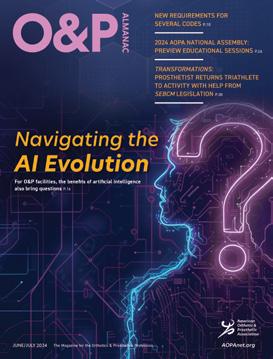
Scan the QR to start advertising in the O&P Almanac or visit bit.ly/24AlmanacMediaKit
ALPS South LLC 35 800-574-5426 easyliner.com
Apis Footwear Co. 12 888-937-2747 apisfootwear.com
ARTech Laboratory Inc. 30 888-775-5501 artechlab-prosthetics.com
Becker 29 800-521-2192 beckerorthopedic.com
Bremer Group Co. 31 800-428-2304 bremergroup.com
Cailor Fleming Insurance 62 800-796-8495 cailorfleming.com/OandP.asp
College Park Industries 11 800-728-7950 college-park.com
ComfortFit Orthotic Labs 51 888-523-1600 comfortfitlabs.com
Coyote Prosthetics & Orthotics 41 800-819-5980 coyote.us
Cypress Adaptive 47 888-715-8003 cypressadaptive.com
Fabtech Systems 18, 19 800-322-8324 fabtechsystems.com
Ferrier Coupler Inc. 9 810-688-4292 ferrier.coupler.com
Fillauer Companies 5 423-624-0946 https://fillauer.com/products/motion-foot-six/
Flo-Tech O&P Systems Inc. 43 800-356-8324 1800flo-tech.com
Hersco 25 800-301-8275 hersco.com
Naked Prosthetics 1, 45 888-977-6693 npdevices.com
Nymbl Systems 46 859-657-8324 nymblsystems.com
Ottobock C4 800-328-4058 professionals.ottobockus.com
ProComp 15 fabwithprocomp.com
PROTEOR USA 23 855-450-7300 proteorusa.com
Spinal Technology Inc. 17 508-957-8281 spinal.tech/almanac
Tillges 3 855-484-5832 tillgestechnologies.com
TurboMed Orthotics 7 888-778-8726 turbomedorthotics.com

















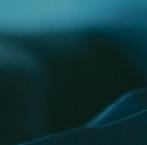















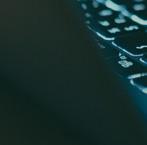















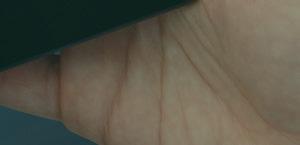


Contact Bob Heiman at bob.rhmedia@comcast.net
August 1–31
ABC: Application Deadlines, Exams Dates, O&P Conferences, and More! Check out ABC’s Calendar of Events at abcop.org/calendar for the latest dates and event details, so you can plan ahead and be in the know. Questions? Contact us at info@abcop.org; abcop.org/contact-us
August 19–20
AOPA Virtual Coding & Billing Seminar. To register, visit aopanet.org

September 12–15
AOPA National Assembly. Charlotte, NC. For more information, visit aopaassembly.org

October 1– November 30
Virtual 2024 AOPA National Assembly Education Available. Visit aopaassembly.org
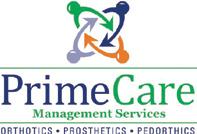
October 18–19
PrimeFare Central. Renaissance Hotel and Convention Center, Tulsa OK. In-Person Meeting. Contact Cathie Pruitt at 901-359-3936, primecarepruitt@gmail.com, or visit primecareop.com
November 18–19
AOPA In-Person Coding & Billing Seminar. Alexandria, VA. To register, visit aopanet.org
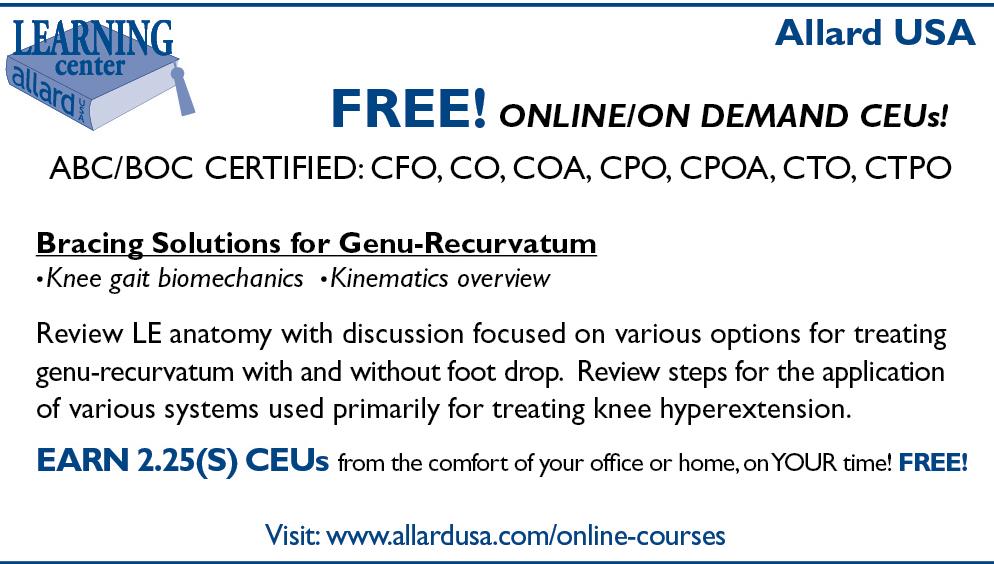

The Pedorthic Footcare Association: Diabetic Wound Prevention, Management, and Healing Program. 10-session online education program series. Approved CEs by ABC and BOC, monthly classes are 1.5 hours each. For more information and to register, visit pedorthics.org/page/.Diabetic_Series_LMS_List
Advertise O&P events for maximum exposure with O&P Almanac. Contact Bob Heiman at bob.rhmedia@comcast.net or learn more at bit.ly/24AlmanacMediaKit. Announcement and payment may also be sent to O&P Almanac, Calendar, P.O. Box 34711, Alexandria, VA 22334-0711 or emailed to jburwell@AOPAnet.org along with VISA or MasterCard number, cardholder name, and expiration date. Make checks payable in U.S. currency to AOPA. Note: AOPA reserves the right to edit calendar listings for space and style considerations.

If you are interested
Advocates seek more equitable reimbursement for O&P care
Senate Bill (SB) 3268 was signed into law June 7 and will provide a 7% increase to the Illinois Medicaid fee schedule for custom orthoses and prostheses and cranial remolding orthoses, effective for claims with a date of service on or after Jan. 1, 2025. The Illinois Society of Orthotists and Prosthetists will continue to support additional legislation to bring the Medicaid fee schedule up to date with current Medicare rates.
The state of North Carolina has updated its Medicaid Clinical Coverage Policy 5B to incorporate changes to coverage for cranial remolding orthoses that are more in line with currently accepted clinical standards. The new policy took effect July 15 and should improve coverage of cranial remolding orthoses for North Carolina Medicaid beneficiaries.
The state of Oregon recently held a public hearing to review the updated list of Healthcare Common Procedure Coding Systems codes that Oregon-based health plans are required to cover without predetermined limits or exclusions under Oregon SB 797, which passed in 2023. This is an annual requirement. AOPA participated in the public hearing, which did not include any public comments either for or against the proposed list of updated codes.
So Every BODY Can Move (SEBCM) seeks to create equitable and life-changing access to prosthetic and orthotic care for physical activity. SEBCM, developed by AOPA in conjunction with the National Association for the Advancement of Orthotics and Prosthetics, the American Academy of Orthotists and Prosthetists,
and the Amputee Coalition, advocates for a policy solution by empowering state-bystate legislative action, ensuring access to medically necessary O&P care. Learn how you can donate or help contribute toSo Every BODY Can Move Visit the website, soeverybodycanmove.org, for details.

SB 1288 has been introduced by Sens. Tina Tartaglione, Judy Ward, and Frank Farry. The bill proposes an update of the Pennsylvania Medicaid fee
schedule to match that of current-day Pennsylvania Medicare. AOPA is working with O&P leaders in Pennsylvania to increase awareness of SB 1288 and encourage support for its passage.


































































































































With the launch of the 1C59 Taleo Adapt hydraulic ankle foot, the Taleo family now offers a comprehensive range of carbon foot options for active individuals. Our wide-ranging carbon foot portfolio ensures optimal fitting outcomes tailored to your patient’s mobility, challenges, goals, and specific needs. It’s more than a foot. It’s a foundation.
